Category: Web Development
8-Reasons Why & When To Use GraphQL Over REST
8-Reasons Why & When To Use GraphQL Over REST
GraphQL is a server-side runtime and an open-source query language for developing new standards of APIs. It is a syntax for requesting data that focuses on providing clients with specific data they need. The purpose of bringing GraphQL over REST is to develop API more adaptable, developer-friendly, and fast. With GraphQL developer tools, API maintainers can add or remove fields without impacting the existing queries.
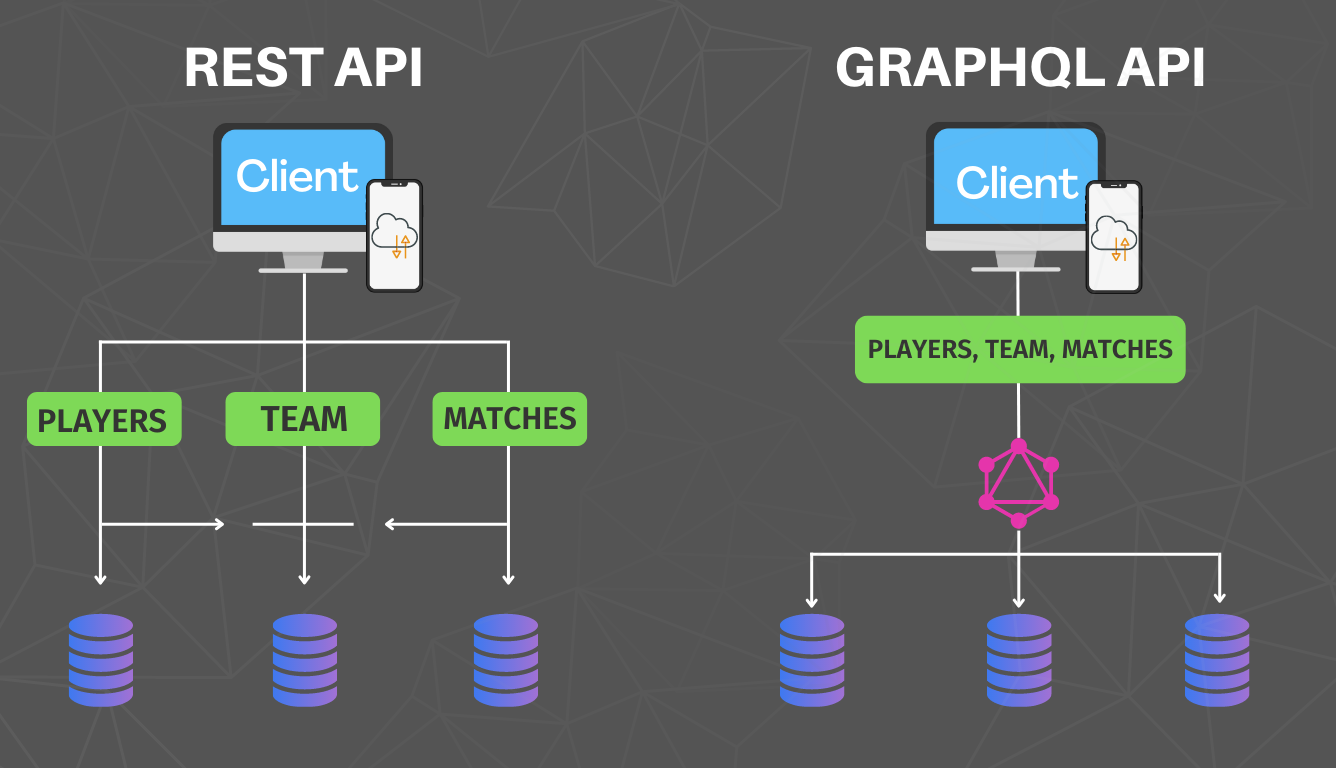
RESTful API architecture acts as a dominion for building backend web services though it comes with a few downsides. Some common ones are- over-fetching, multiple network requests for multiple resources, and waterfall network requests for dependent variables or resources. Thus, as an alternative to REST, GraphQL enables you to fetch data from numerous sources in a single API call, save bandwidth, and minimize waterfall network requests. So, here are 8-compelling reasons to use GraphQL over REST and when to use GraphQL for building APIs.
8-Significant Reasons Why Use GraphQL Over REST
#1 Strictly-typed Schema For Building Intuitive APIs
GraphQL SDL (Schema Definition Language) is strictly-typed, building a more reliable & flexible communication structure for both backend & front-end operations. The defined schema of GraphQL delivers its self-designated language between the server & client. The strictly-typed interfaces make the documentation easier and help in error detection.
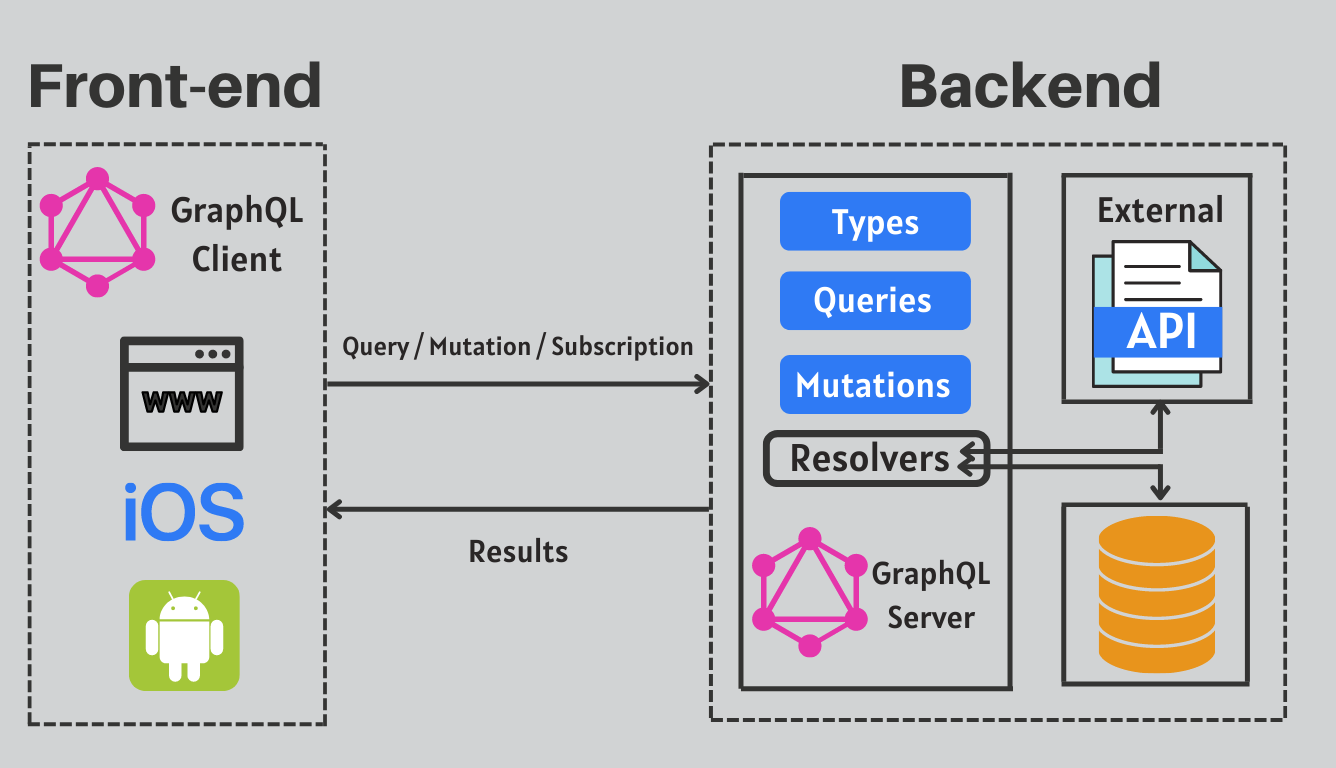
Like REST, GraphQL isn’t dependent upon HTTP response codes or methods except for applying it as a channel for communication. GraphQL server has a single endpoint that works as a gateway offering extensive functionalities to clients. Wherein REST API has multiple endpoints that represent discrete resources. So, seamlessly build a uniform API over your entire application without getting restricted to a specific language or engine. This single endpoint delivers the full capabilities of the server by adding fields to the GraphQL root types- Queries, Mutation, and Subscription.
Furthermore, you need an engine to run the entire process that drives your API. A schema alone can’t add functionality to the server. It requires resolvers to fetch data for each field in the specified schema. Thus, effective schema plays an essential role in creating intuitive APIs. So, be subjective about node naming conventions and relationships in the GraphQL schema to secure a logical sense for users & domain.
#2 No More API Versioning
In RESTful architecture, APIs have multiple versions for every environment (api.domain.com/v1/, api.domain.com/v2/). That means Accept version-V1, Staging-V2, & Production-V3. Therefore, changes in requests or resources make it more challenging to manage the versions. There’s no need to maintain versions with GraphQL as it has only one graph version. The address or resource URL remains the same. You can also attach new fields or reprehend the older ones. This intuitive approach notifies the clients with a deprecation message while querying a deprecated field.
#3 Eliminates Over & Under-Fetching
Contrary to REST API architecture, GraphQL is a single endpoint that fetches the exact data at the client’s request. Over-fetching rises due to multiple requests for the same resource. For instance, a blog’s home page shows the list of all blog posts (only the Title & URLs). However, you need to fetch the entire blog post (including body data, images, etc.) through the API to represent this list. Therefore, it consumes high data and impacts your app’s performance. With GraphQL, you specify the fields (Title & URLs), and it fetches the data of those respective fields only.
On the other hand, Under-fetching happens for not getting adequate data in one API request. Thus, users may send additional requests to acquire the relevant data. For example, to know the author’s bio & name while viewing an individual blog post, you need to fetch the data of referenced author’s profile. Wherein GraphQL lets you get the entire relevant data through a single query.
#4 Less Time In API Documentation
The importance of documentation is to provide information about the use of APIs. In RESTful architecture, developers use a tool like Swagger to navigate & document sizeable APIs. In a microservice world, it becomes a bit expensive & time-consuming for API documentation. GraphQL offers a declarative data communication feature that allows developers to use the data based on their application requirements.
GraphQL has an IDE- Playground that functionalizes as a form of documentation for APIs. With this tool, you have the liberty to create interactive or static documentation. Additionally, the GraphQL Introspection query enables you to collect more details about GraphQL endpoints, schema, types, and possible operations.
Example of Introspection Query

#5 Schema Stitching & GraphQL Federation
Schema stitching is an effective solution for combining schemas in a microservice architecture. It is fruitful where each microservice controls the business data & logic against a specific domain. Furthermore, GraphQL Federation brings two or more schemas to set up a single gateway schema or unified GraphQL API. Hence, in both federation & schema stitching, requests get delegated to primary subgraphs that deliver the request for the applicable section of the graph.
#6 Error Handling
In traditional RESTful API architecture, during a request, if a part of code on a server side fails, the entire request might fail. Hence, this might lead to a complex logic or code bloat on front-end applications at times of microservice ecosystem failure. Wherein, GraphQL aims to resolve maximum data before returning.
Whenever the Apollo GraphQL server encounters an issue while processing an operation, it delivers an error array containing all the relevant information. Following that, there’s an extension for each error in the array that gives more useful information. It includes an exception. stack trace & error code. So, it recovers the data as much as possible and keeps the partial data safe for further use.
#7 Save Bandwidth & Time
You can operate multiple resource requests through a single query call. It minimizes the number of network round trips to the server, which saves bandwidth & time. It also prevents waterfall network requests for resolving the dependent resources on early requests. For instance, a blog’s home page contains multiple widgets like recent posts, most popular posts, featured ones, categories, etc. Viewing these would need a minimum of five requests with REST architecture. Wherein GraphQL requires just a single request to process the function.
#8 Open-Source Ecosystem For API Design
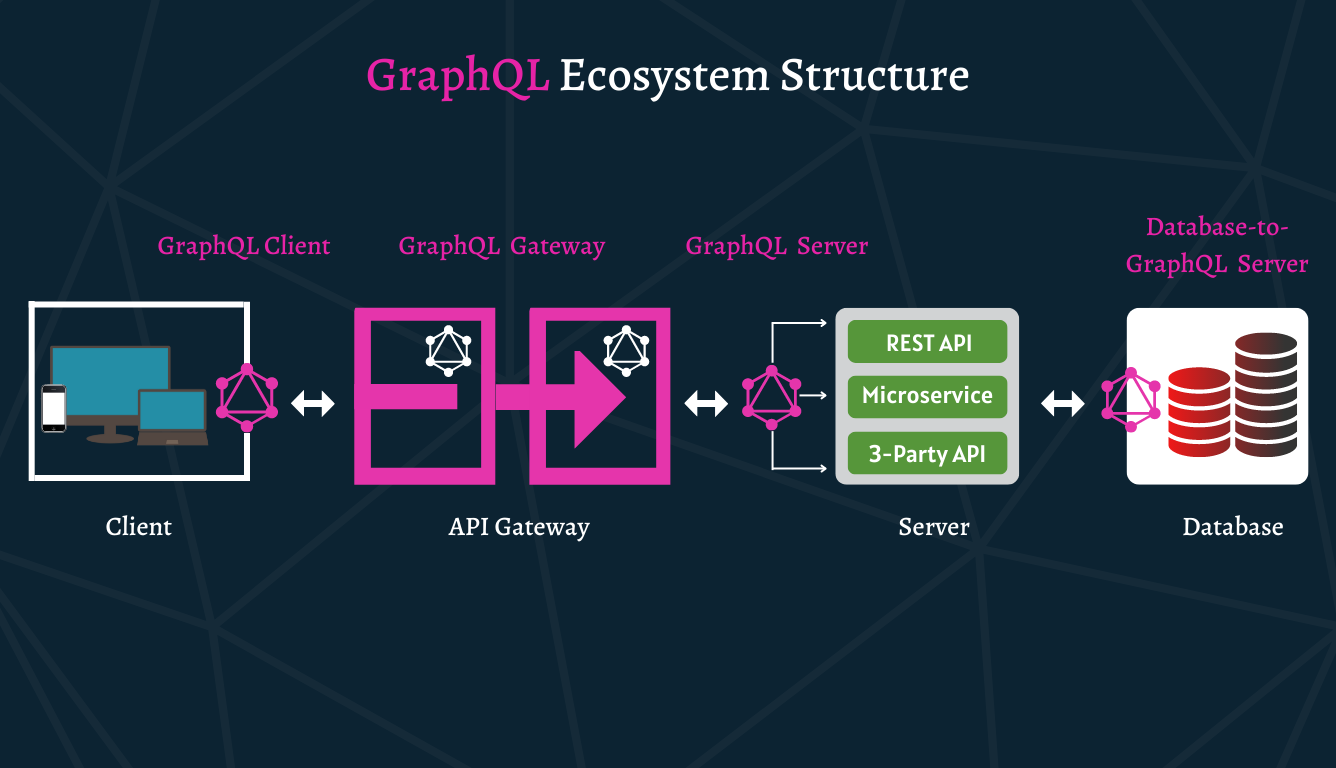
GraphQL has an open-source ecosystem that facilitates numerous tools, code libraries, and services. For example, Typescript & Javascript are the two commonly used languages in GraphQL architecture. The entire ecosystem runs on clients, gateways, servers, and tools. Even the popular open-source static site generator Gatsby is built on Node.js using GraphQL & React. A few examples of other tools & libraries are:
- ORM (Object Relational Mapper)- TypeORM, Mongoose, and Sequilize
- Database-to-GraphQL server- Prisma
- IDEs- GraphiQL & GraphQL Playground
Synthesizing the GraphQL ecosystem with new tools and libraries makes it easier for developers to build constructive APIs.
When To Use GraphQL? – Architectural Patterns
The next question that strikes your mind is when to use GraphQL? From the technical aspect, the use cases of standard GraphQL architectural patterns are the best way to portray its implementation.
- GraphQL Server With A Linked Database- This is the foundational use case where you get server libraries for various programming languages to build a server in line with GraphQL specifications. Here server exposes the database in a controlled manner by receiving a query and resolving it. The benefit of using this pattern is low complexities in data fetching. Low latency due to the data source being near to the application logic.

- GraphQL layer For Integration- It works as an integration hub to connect multiple backends like 3-party APIs, Microservices, and Legacy systems. Here, GraphQL unifies the existing system and resolves the queries according to the client’s requests. This pattern applies to the extensive existing services of an organization. Or else it is risky to duplicate or implement new business logic.

- Hybrid Integration- Here, the GraphQL server resolves queries by retrieving the data from its connected database & external systems. So, you get a unified API without sending multiple requests to the server to get the desired data. Let’s say you want to deprecate the services of old APIs. Firewall off the early one and allowlist your GraphQL server to add authentication & functionalities to it.

- GraphQL is beneficial for some applications where it’s obvious to fetch the nested data in a single call. For instance, in the case of blogs or social networking platforms, it’s apparent to collect the posts with the nested comments and the details of the person commenting.
- It’s a go-to choice for high-end applications such as smartwatches, mobile phones, IoT devices, and many more where bandwidth usage is a priority.
GraphQL VS REST Which Is The Best Architecture For API Design?
The most appropriate answer to this question lies within the objective of designing the API and its requirements. If you intend to build a web or mobile app that can fetch data from multiple resources in a single endpoint over low bandwidth, then GraphQL is the ideal choice. Conversely, if over or under-fetching isn’t your concern, and you need to collect entire page data, REST APIs are suitable.
Both API architectures are distinct in their features and functionalities. Here, we have covered the crucial technical factors for choosing GraphQL over REST for transforming the API design. From payload size, built-in documentation, fast performance, and error handling make it a future of APIs. To know more about API development, leave your comment below or contact us.
ACH Payment With Plaid & Stripe: Benefits & How It Works
ACH Payment With Plaid & Stripe: Benefits & How It Works
Minimizing Online Transaction Costs Using ACH Payments

Businesses accepting online payments through several portals might not get affected by additional charges. However, the credit card processing fees remain expensive for making a single transaction. As a result, this exorbitant cost might hit the profit margin of a business. Automated Clearing House- ACH payment is a cheaper alternative solution that minimizes credit card processing charges.
ACH is a constructive financial network that processes money transfers & digital payments. It enables easy bank transfers between individuals, commercials, and government accounts without presenting cash, checks, and cards. In this article, we’ve uncovered the benefits of using ACH payments & working system of it using Plaid and Stripe.
7-Reasons To Choose ACH Payment Gateway Integration For Business
Several factors must be taken into consideration while integrating a payment gateway for your business. Including cost, ease of use, technological needs, and user experience, ACH is the frontrunner in credit processing solutions. This online payment method helps you and your consumers to save time and money with more security & convenience. Here are 7-valid reasons that add more benefits to your business and improve customer satisfaction.

1. Reduce Transaction Costs
ACH processing can reduce the transaction costs compared to credit cards & checks. Credit card processing fees are around 2.5-3.5 percent of a transaction. However, an individual spends $4 to $20 for writing business checks (including mailing, signing, payment initiation, authorization, printing, and time spent).
On the flip side, processing fees with ACH are $1 less for each transaction. There are no set prices applicable for ACH payments like credit cards. The transaction takes place between two bank accounts using a clearing house which keeps the overhead cost low.
2. Maintain Cash Flow
Whether sending or accepting funds, ACH payments offer you a dependable cash flow and more control of your fund. If a consumer uses ACH payments, their checks arrive timely as the funds get transferred directly from the respective bank accounts.
You can schedule your due payments accordingly with ACH while paying your suppliers or vendors. Additionally, employers use ACH payments to clear their taxes and direct deposit for paying their employees through the bank. It allows you to maintain your fund in your account as long as you want. Thus, it reduces uncertainties, streamlines your account payable & receivable functions, and maximizes value.
3. Fast Processing
ACH makes the money transfer process simple. It takes less than five business days as a settlement time to clear a fund, which is faster than credit cards & checks. Additionally, (National Automated Clearing House Association) NACHA has approved a rule for one-day ACH transfer. NACHA operates this function through two processing windows:
- 10.30 AM ET is the deadline for morning submission and settlement at 1.00 PM.
- 3.00 PM ET is for afternoon submission, and settlement time is at 5.00 PM.
Thus, it will give more flexibility, workflow efficiency, and quicker access to funds for the operating businesses.
4. Recurring Billing
ACH direct debit or ‘auto pay’ is the most cost-effective tool that helps business operates on the subscription model. So, there is no involvement in paying high monthly processing fees. Once a customer authorizes the ACH direct debits, you can collect recurring payments effortlessly and reliably.
5. Better Convenience
ACH makes your money transfers more convenient for internet-initiated payments, direct deposits, and (P2P) Peer-to-Peer payments. It lets your customers set up a one-time or recurring payment option for paying their bills. Thus, it facilitates you to timely collect payments by generating auto-invoice. Furthermore, the chances of shopping cart abandonment rate and payment disputes are lower with ACH.
6. More Security
In the case of checks, there are chances of being stolen or signature forgery. ACH eliminates intermediaries as transactions take place directly between bank accounts. Some customers may hesitate to share their banking details. With ACH, payment processors perform two-way verification to validate the authenticity of both parties. Additionally, it adds an extra security layer with encryption to keep the details of customers intact and safe. This verification process ensures two crucial things: the accuracy of the account information & no transaction blocks.
7. ACH Minimizes Churn
Credit cards have a 3-years lifespan by considering the facts like damage, expiry, and chances of losing or misplacement. On average, an individual uses a bank account for 14 years. Establishing a link with the customer’s bank account through ACH might reduce the payment churn and increase revenue. Specifically, it is applicable for recurring payments such as software subscriptions. Even for B2B spaces, around 20-40 percent churn generates from credit card errors. So, payment gateway integration using Plaid ACH & Stripe is profitable for businesses in the long term.
How Does ACH Payment Work With Plaid & Stripe?

Let’s find out how to initiate ACH Payments using Plaid & Stripe.
Ascertaining ACH Providers
Before starting ACH transactions, you need one system that connects you with an ODFI (Originating Depository Financial Institution). The system must be able to update you with the payment status. Including that, it needs to facilitate an interface to authenticate, cross-check, and charge the user accordingly.
Here comes the presence of Stripe alongside a partnership with Plaid to make the fund transfers seamless through ACH. So, you need to understand the connectivity between the two entities. By using Plaid, the Stripe account holder can authorize the users and leave out the micro-deposit authentication process delay. So, Stripe is responsible for handling the ACH workflow and the funds’ movement. And, Plaid acts as a data provider and an authentication gateway for users to tokenize the ACH transaction.
ACH Workflow
ACH is a multi-staged and layered process that works steadily to verify & protect the data of all the parties involved. Thus, we have distributed the entire transaction process to analyze the ACH workflow and the contributions of Plaid & Stripe.
-
Application Developer or Owner
You need a software application to maintain the records of your online store. Online multi-vendor marketplace application with payment integration via ACH helps you to keep financial transaction records. So, to execute the whole function, you need to register with Stripe by providing a few details about your business, personal information, valid Social Security Number, and contact details. For Plaid, you only need to provide your name and email id to get started. However, crossing more than 100 users’ calls might need additional information.
-
Financial Institution
Financial bodies work as a mediator of the ACH network. They get the ACH files from a provider and transfer them to the respective cleaning houses. ACH providers or customers may get the notification of the transaction status if the financial institution is an RFDI or OFDI. In the case of Stripe, Wells Fargo is its OFDI, and Plaid deals with the user’s bank for retrieving & validating the information to ensure the transaction is legitimate.
-
Role Of Plaid
Plaid authenticates the buyers or users to authorize the ACH payment via Stripe. It enables you to integrate the Plaid Link module into your application. As a result, this will create a safe gateway for users to link their bank accounts by filling in all the credentials. Once the Stripe account gets connected with the Plaid, it offers a valid token for Stripe to continue the ACH transaction.
-
Role Of Stripe
Stripe allows you to charge ACH payments to consumers. To perform that function, the application developer or owner needs to create a Customer item within the internal system of Stripe. It requires an authorized token issued by Plaid. Furthermore, the developer can charge the customer by placing a Charge item in the database. This action will trigger Stripe to generate an ACH file for proceeding to its OFDI. Stripe also offers endpoints & webhooks to the developers for getting updates.
-
End User
Customers or buyers are unaware of this entire backend or web development procedure that happens while purchasing a product from an online store. To validate the transactions, the user needs to provide a few banking credentials through the secure Plaid module. After the completion of the transaction, the user can check the pending transfer in the respective bank account, product delivery status, and the final settled transaction.
Bottomline
With the increase in digital payment methods, businesses & customers seek better alternatives. So, ACH payment is the most cost-effective way that gives significant savings over credit & debit card fees. Now, any business can use these technologies and set up their payment gateway integration option to save more on billings.
So, Capsquery has simplified all the technical aspects of ACH payment processing with Plaid & Stripe. Thus, switching your payment method to ACH might enhance your user experience & economize your financial transactions. For more details regarding the payment integration API functions, hit the comment box or contact us.
6-Topmost WooCommerce Multivendor Plugins For Building The Online Marketplace
6-Topmost WooCommerce Multivendor Plugins For Building The Online Marketplace
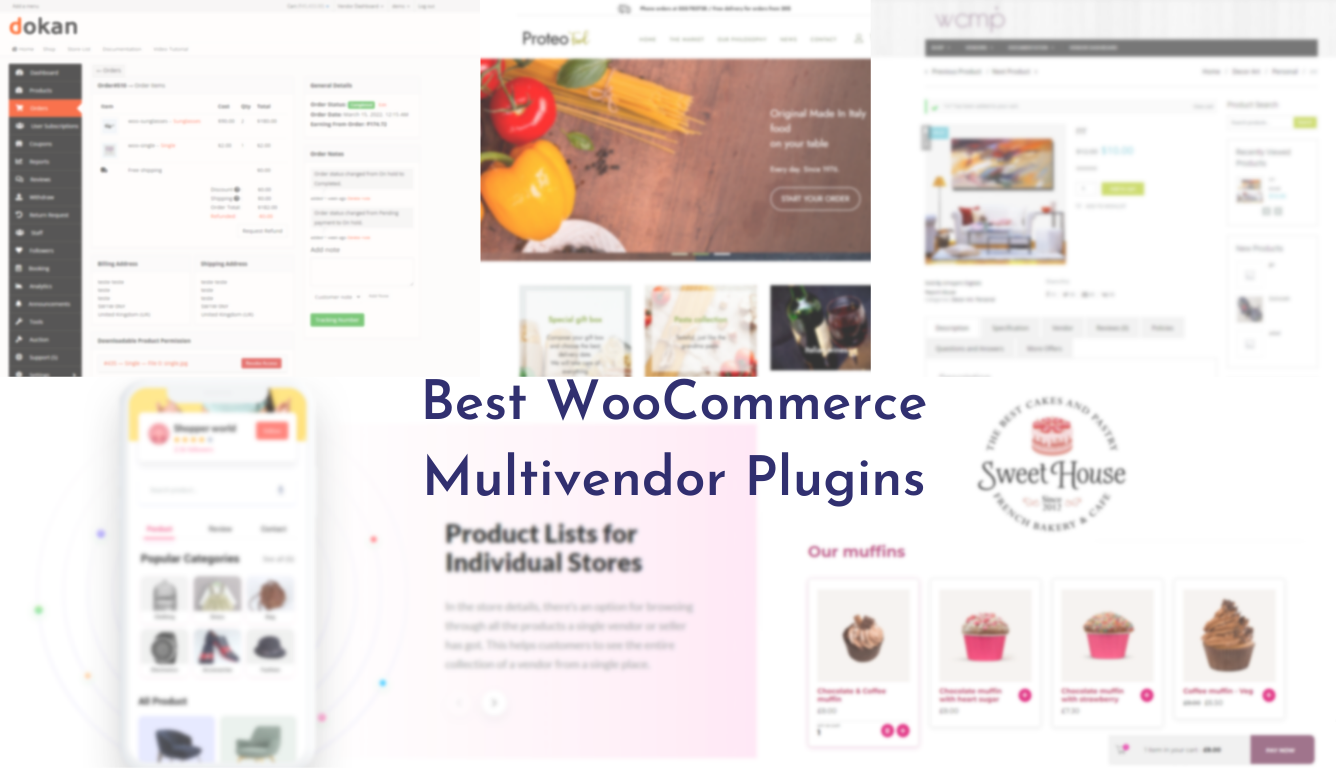
eCommerce sites like Amazon, Alibaba, and eBay have revolutionized the means of online trading. The purpose of creating a multivendor market is to get more sellers to a single platform. It helps customers to choose the best from various offerings. Instead of spending hours coding, rely on WordPress. Build your eCommerce site using WooCommerce multivendor plugins.
Here, in this article, we dive deep into the most proficient & reliable 6-best WooCommerce multivendor plugins with their key differences.
List Of Multivendor Plugins For WooCommerce & Key Features
All of these plugins have distinct features and are notable in their functionality aspects. It is essential to consider salient features like a user-friendly front-end, flexible payment options, support, and other functionalities. Thus, we have categorized the leading WordPress multivendor plugins accordingly. It might help you build a full-fledged multivendor marketplace.
Dokan Multivendor Plugin
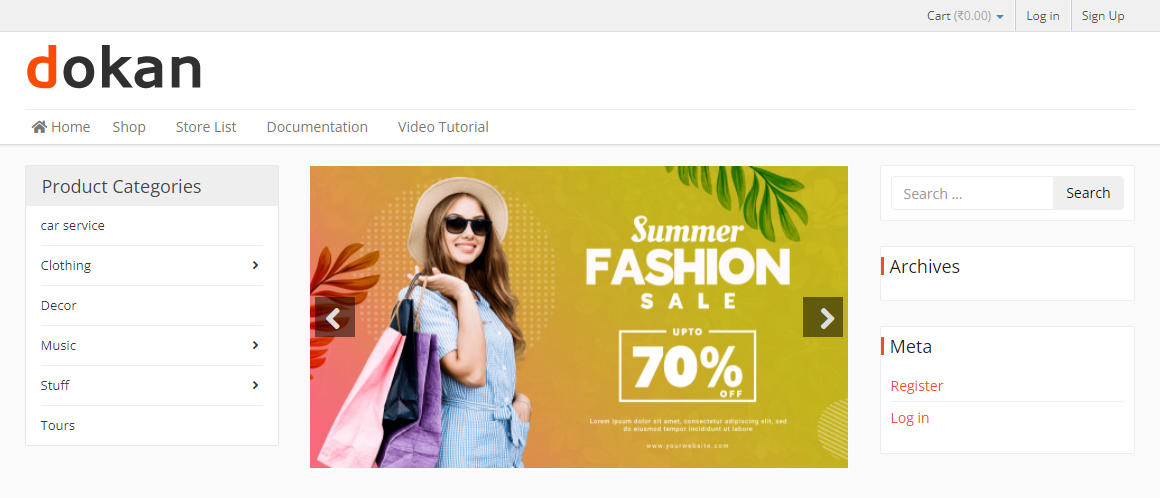
(Image screenshot- WeDevs- Dokan)
The Dokan is undoubtedly the best free plugin for creating a marketplace like popular eCommerce sites like Amazon and others. WeDevs- Dokan comes up with an extensive range of features and is easy to set up. It offers a distinctive front-end to the vendors for monitoring the operations. The plugin is also compatible with mobile devices. It helps both vendors & consumers in managing orders, product inventory, sales, discounts, and lots more.
Since you own a multivendor marketplace, it’s predictable to have a commission for the sales generated by a vendor. So, Dokan allows you to fix a commission for individual products on global vendors.
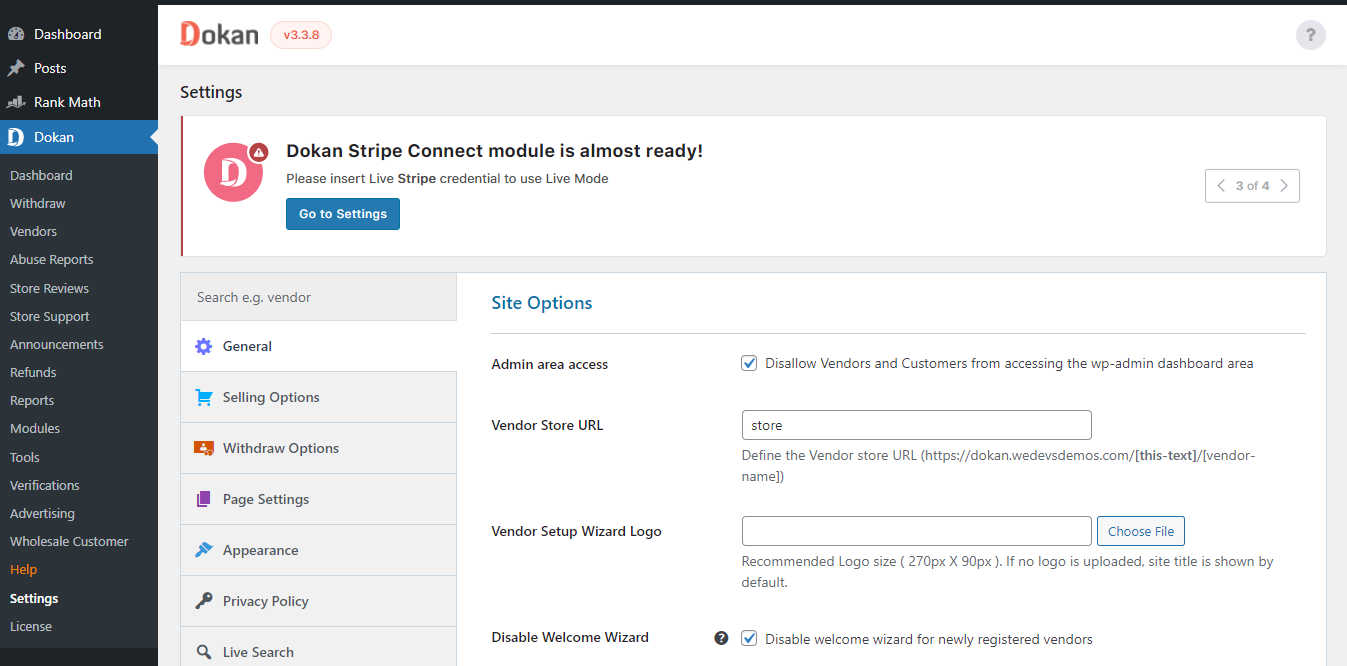
Additionally, you also get a Dokan Multivendor add-on with PeepSo membership. Integrating the PeepSo Dokan Multivendor add-on intensifies the functionalities. It helps you mark your favorite products in a separate list for better purchasing. This plugin works seamlessly with both Dokan Lite & Pro.
In terms of pricing, Dokan Multivendor has a free plan. It facilitates you to add unlimited vendors with other beneficial services. The starter plan costs you $119 per year & lifetime package will be $522. The package comes with vendor management, commission types, front-end products, social login, etc. The subsequent premium packages include more features for building an advanced multivendor marketplace inside WordPress.
Essential Features
- The plugin offers a vendor-friendly front-end for managing products and auditing their sales from one place.
- It allows you to add unlimited vendors with independent stores and customized storefronts for each vendor.
- Dokan works with all WooCommerce compatible themes.
- A global commission charge model and specific rates on products for every vendor help the admin to earn profit from sales.
- Admin gets full authority over the individual transaction within the marketplace.
- Vendors can maintain the store performance by scrutinizing the sales insights with reports & statements.
- It offers an easy withdrawal system that helps you to set payment channels, minimum withdrawal limits, and more for vendors.
- A vendor can handle the shipping management for each store.
- A wide range of premium modules includes external payment gateway integrations, product add-ons, Ajax Live Search, color scheme customization, live chat, etc.
WCFM Marketplace
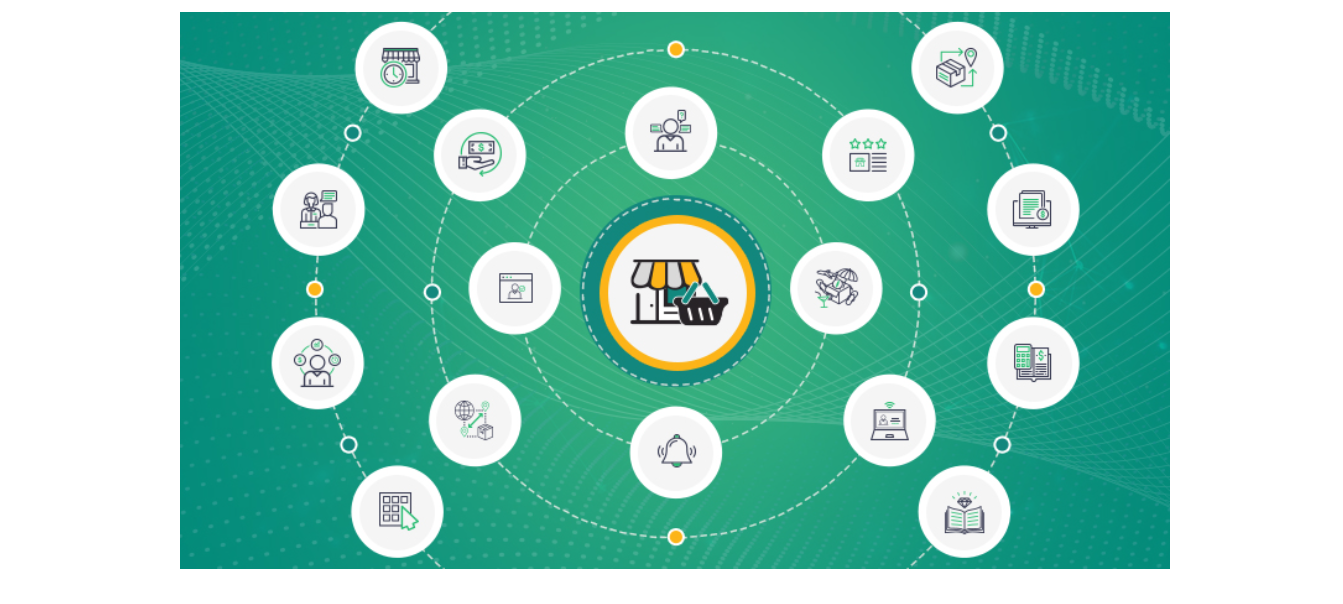
(Image screenshot- WCLovers- WCFM Marketplace)
The WCFM Marketplace claims to be a versatile multivendor plugin with multiple features. The plugin from WC Lovers has both free & paid versions that help you create a multivendor digital marketplace.
With the WCFM plugin, you can set the commission rates for vendors based on the percentage, purchase quantity, sales, etc. It provides several store management options that include store SEO for configuring the store ranking grounds. Vendors can feasibly customize or monitor the functionalities using the basic front-end without facing the complexities of the admin panel. Be it generating coupons, adding products, and tracking sales reports- you get a bird’s-eye view of the site from the front-end.
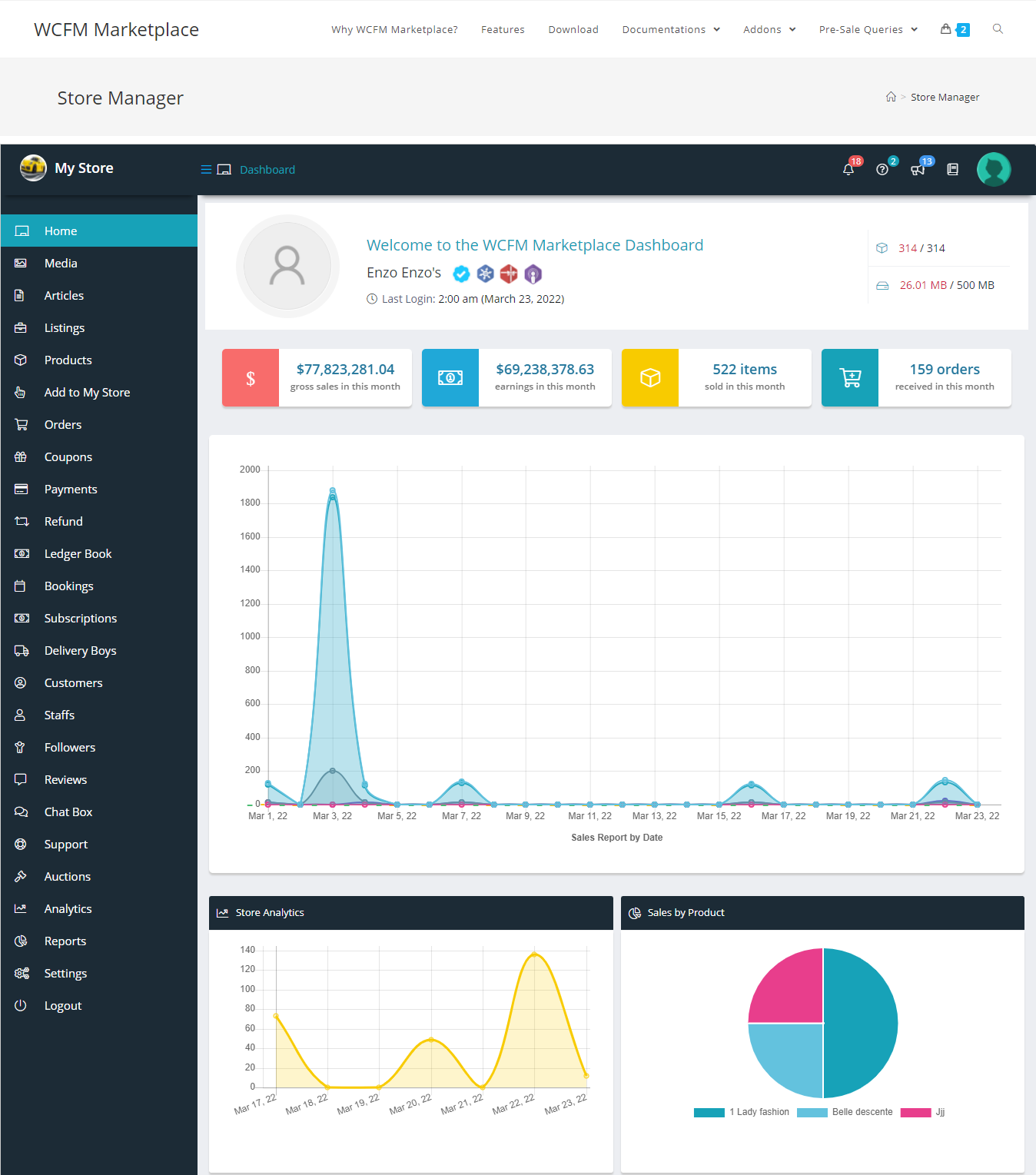
WCMF plugin offers a vendor ledger that helps both vendor & admin to keep a record of every store transaction. You can check withdrawal, refund, commission, partial refund, and more from the front-end. The facility of adding 40+ integrations with major WooCommerce & WordPress plugins unlocks the trading possibilities of the marketplace.
The plugin comes with a free seller app. It gives the power to supervise their store and orders from any location. The shipping management system lets vendors add a tracking code to ensure trouble-free product delivery. WCFM Marketplace gives notifications to vendors & admin for sales, purchases, returns, and other activities.
WCFM is a pocket-friendly multivendor plugin. The premium extensions include different WooCommerce front-end manager categories. The cost of 2-sites for one year is $168 and unlimited sites for a lifetime fetch you $1044.
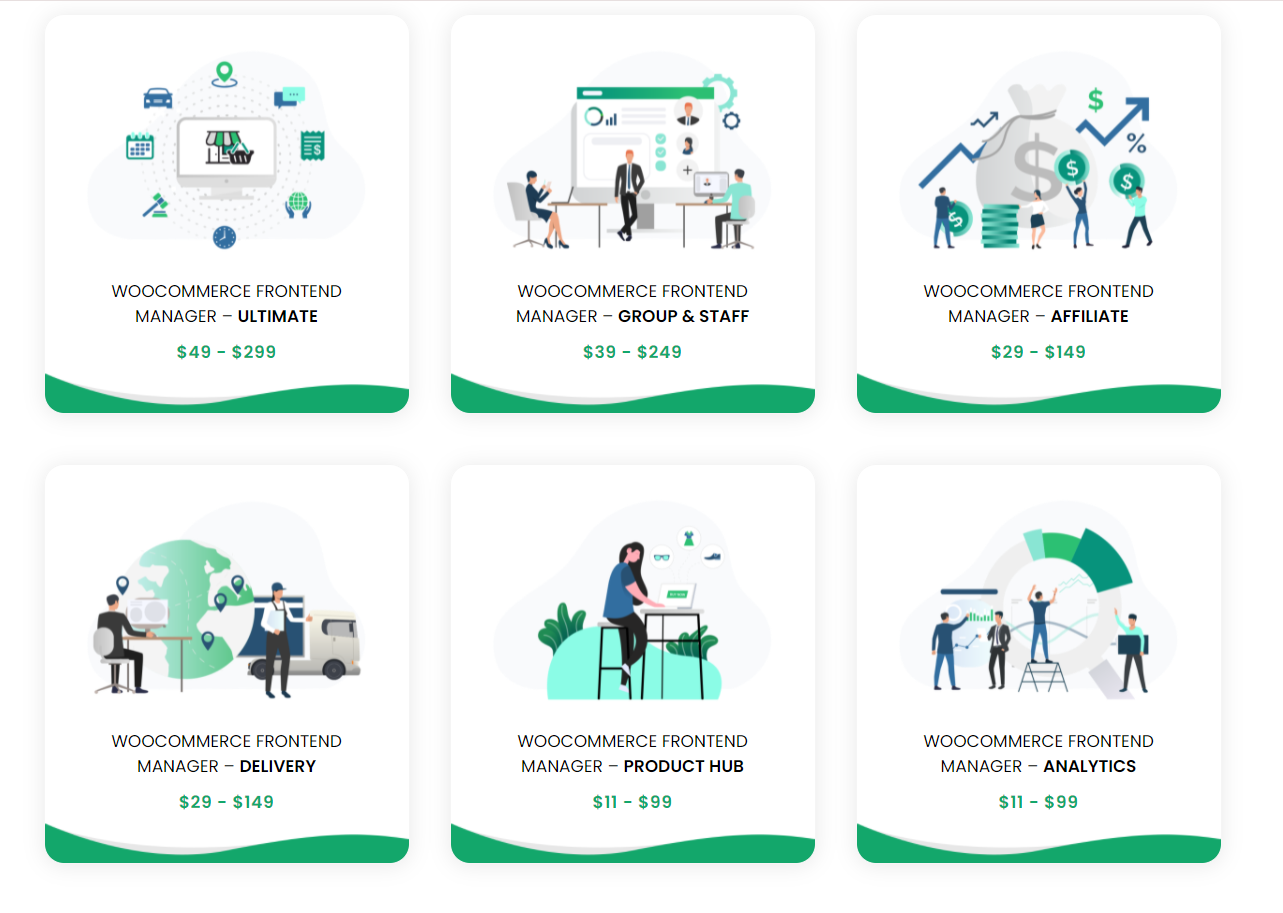
Essential Features
- The plugin offers an impressive front-end manager with rich features for vendors and admin to customize the site.
- It provides a flexible vendor commission system where the admin can pay the commission to vendors by-product sales, purchase quantity, percent plus fixed, etc.
- You get several payment gateway options for hassle-free checkouts.
- With this plugin, you can easily configure the shipping options following zones, country, and distance, all from the front-end.
- Admin gets vendor registration options such as membership or simple registration.
- A vendor can set the operational hours like opening and closing times or week-off days under store hours options.
- Manage your delivery peripherals with ease. You get Live status for shipment and delivery.
- Support ticketing system helps customers to post their queries.
- Process store-wise invoices and labels to the customer as per the order.
- Under the policy section, you can manage the purchase orders, returns, and cancellations policies.
WC Vendors
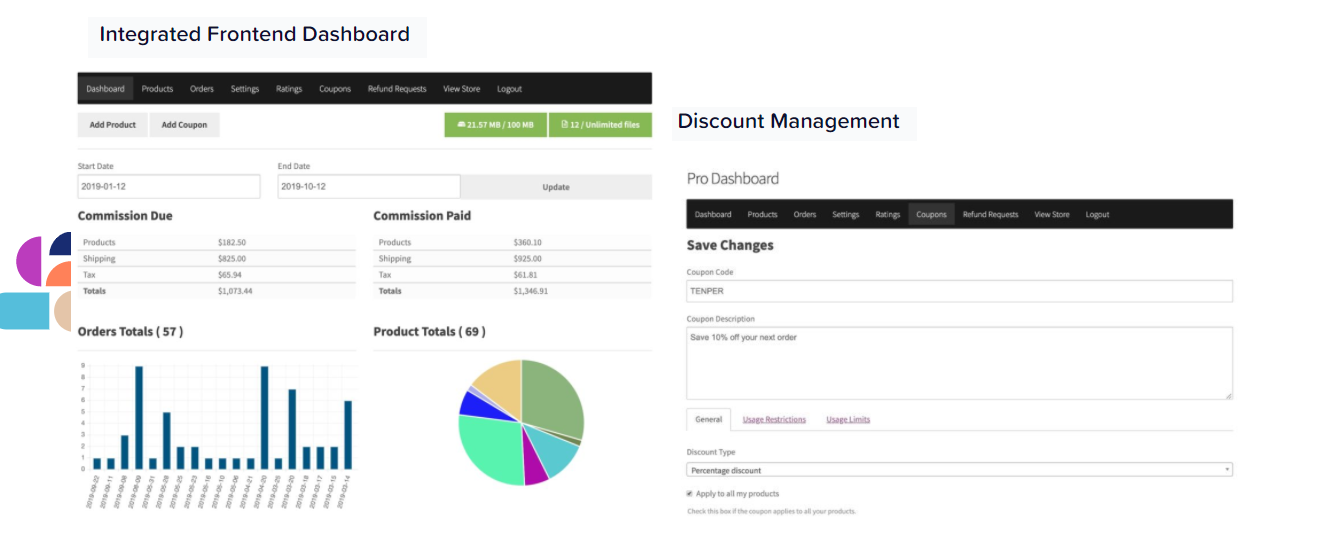
(Image screenshot- WC Vendors)
The next multivendor plugin in the list with over 10,000 active installations is the WC Vendors. In terms of usability, the plugin holds an authoritative position. It offers centralized administration over vendor storefronts and the entire marketplace. With the strategic marketing campaign, you can focus on sales growth and increase conversion rates of your online marketplace.
WC Vendors allows you to sell all sorts of products- tangible and digital, including bookings, subscriptions, and more. You can sell membership plans to vendors and set up parameters on the product selling categories. The free version of the plugin provides valuable services like inventory management, commission management (percentage), multiple payment gateways, etc. This plugin is compatible with these best free WordPress themes, such as BuddyX, OceanWP, GeneratePress, etc.
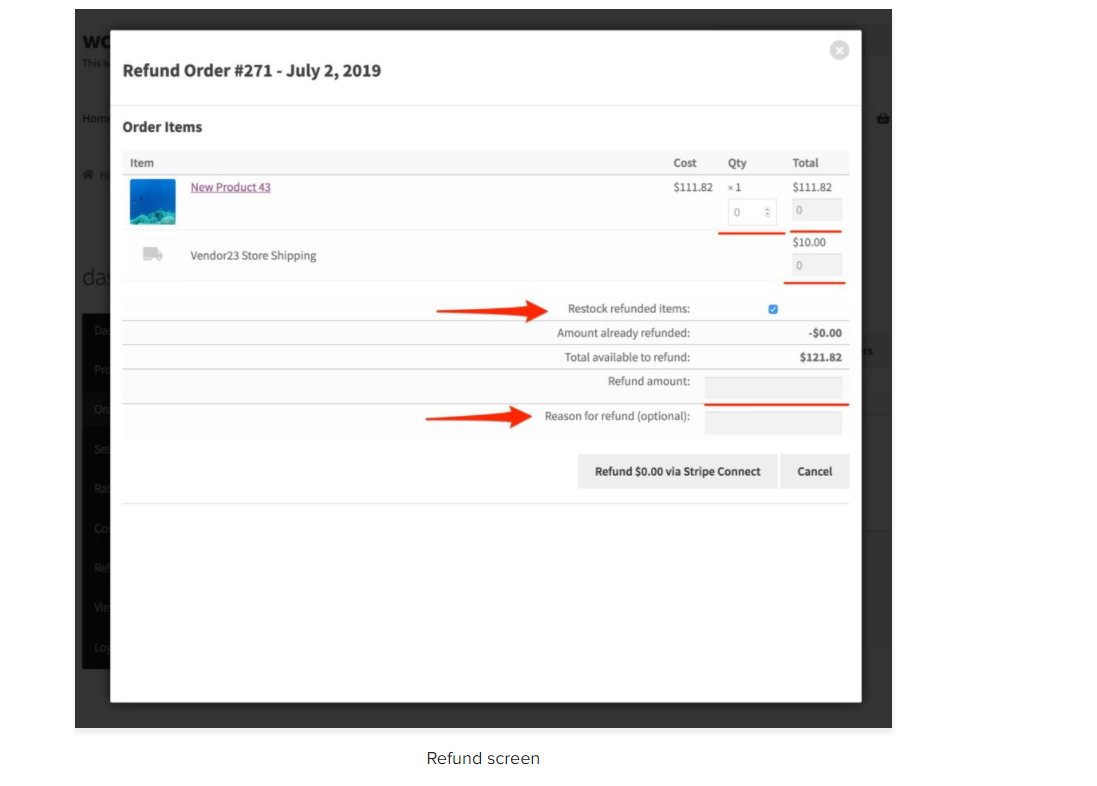
Some features are only available with the pro version, such as an integrated front-end dashboard, coupons, shipping management, product SEO, etc. You can also set different policies regarding the orders, refunds, and cancellations through the policy section. Additionally, you get real-time chat support to interact with the customers. Besides, the plugin doesn’t provide a back ordering system. It is also incapable of generating the vendor statement report.
WC Vendors Pro version costs you $199/ year with a 30-days moneyback guarantee. It includes unlimited vendors, flat rate & table rate shipping, order management, and other advanced features. WC Vendors Pro bundle comes for $397/ year with several add-ons like Stripe Connect, WooCommerce subscription & booking, including all WC Vendors pro features.
Essential Features
- The plugin comes with an integrated vendor front-end that blends flawlessly with your theme.
- Vendors can sell all types of products, whether physical or digital.
- The plugin offers a lucrative commission distributive system like percentage, fee, & sales by product or vendor.
- Vendors get their unique URL and independent storefront to sell their products.
- It also facilitates an advanced discount management system to set the commission rates per vendor or product globally.
- Vendors can also improve their online visibility & brand value through the vendor rating system.
YITH WooCommerce Multivendor
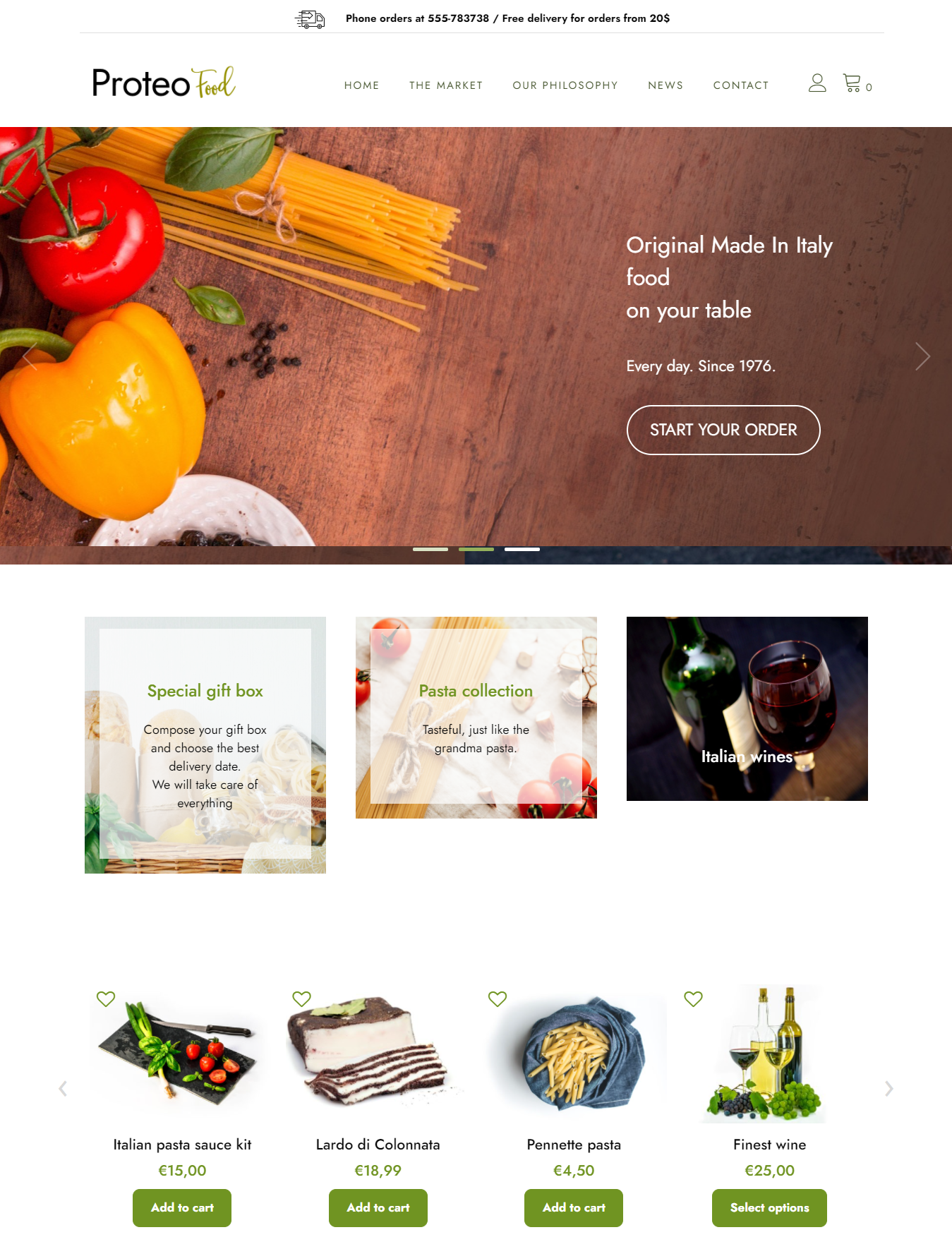
(Image screenshot- YITH)
YITH is another considerable multivendor plugin that pops up for your WooCommerce marketplace. There’s a scope of passive income from the user’s sales for their products on your site. This plugin allows you to select multiple administrators, manage specific campaigns, create product catalogs, etc.
Additionally, you can build a multivendor store with global commission rates, generate sales & commission reports, and vendors’ product details. The super admin feature gives you options to control vendors’ accounts and sales. This robust extension lets you set up various advanced functionalities like pay bulk commissions, report management, shipping & order management, shortcodes, etc.
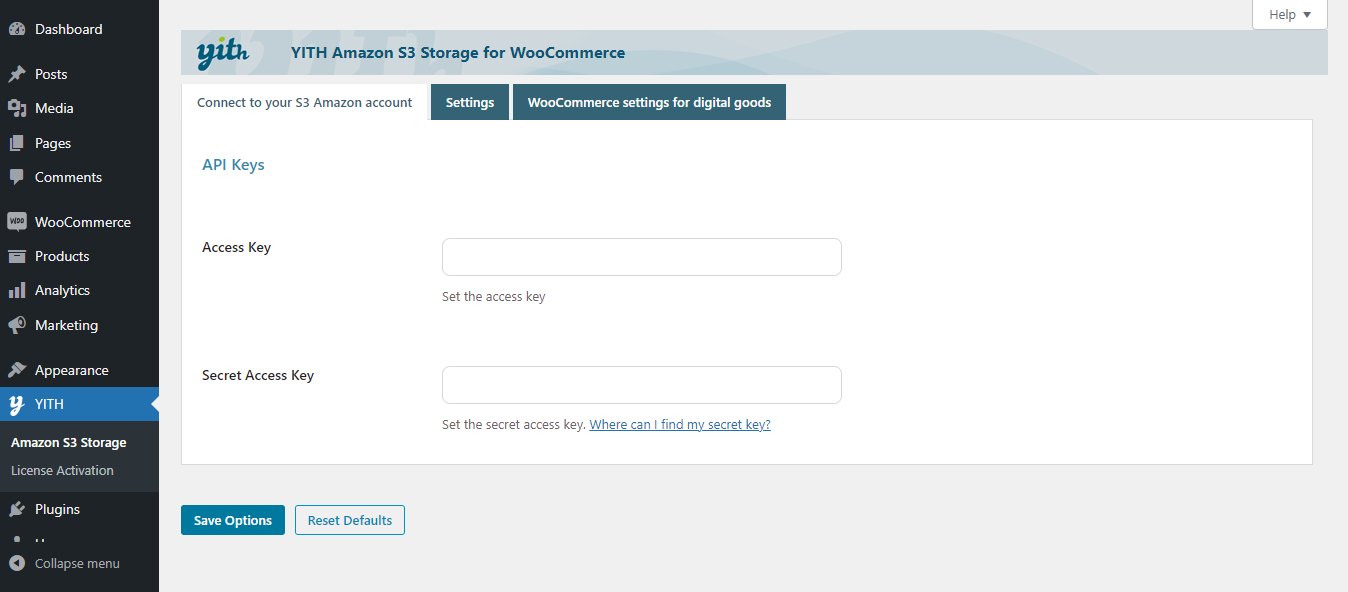
Though the free version available in the WordPress repository has limited features. To access advanced features, you need to go for the pro version. It costs $99/year for one site with support & updates. You can upgrade it to a 6-sites license for $199 & $299, respectively.
Essential Features
- The plugin offers a comprehensive overview of the marketplace with a detailed sales & commission report.
- The super admin option helps you centrally enable or disable each vendor’s sales.
- The plugin offers you to set a limit on sales commission as per the sales ratio.
- All vendors can manage their products and create coupons inside the marketplace.
- It also provides abandoned cart recovery facilities to retrieve or complete the due orders.
- The badge management feature helps highlight discounts, product USP, and promotions to grab more consumers.
- Vendors can boost their conversions and sales by adding media files with their products from the media library.
- The plugin allows vendors to create shipping zones, cost calculations, refunds, and lots more through an advanced shipping module.
WC Marketplace
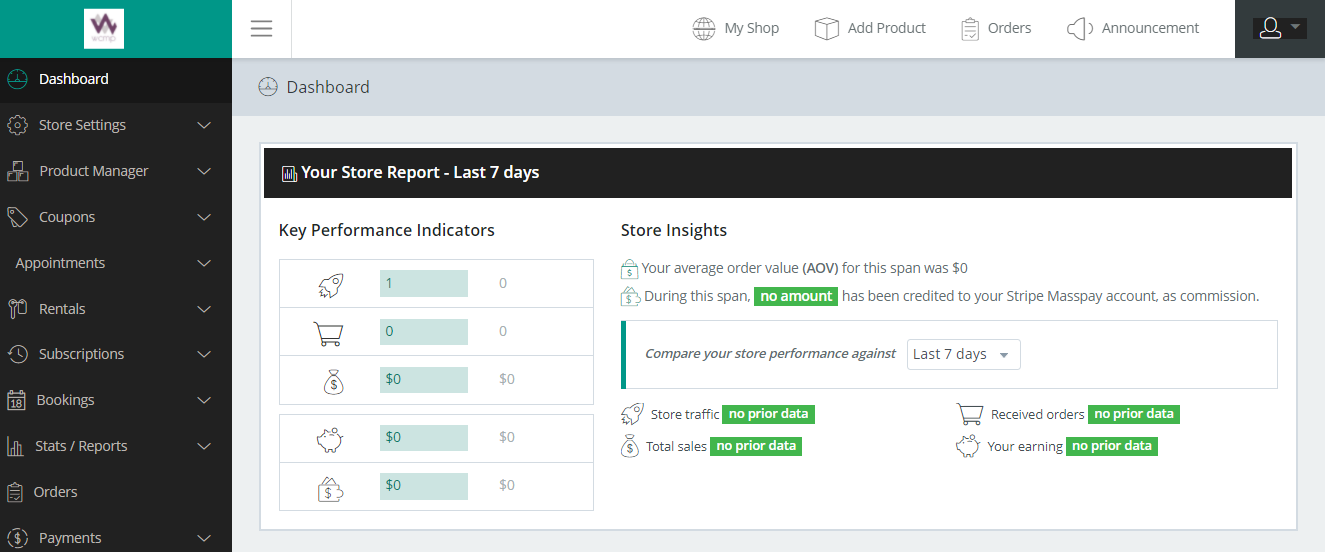
(Image screenshot- WC Marketplace)
Another multivendor plugin that depends on WooCommerce is WC Marketplace. It is in demand for providing an effortless setup. Varieties of features are available with both free & paid versions. The plugin comes with a custom dashboard for vendors to manage orders and products.
The admin gets convenient authority over the marketplace, including sales, commission sections, sales reports, etc. The flexible commission plans you may choose as per your requirements. The plugin offers exclusive features like scheduling auto payments, coupon management, shipping, tax management, refunds, and lots more. One noteworthy service of this plugin is multiple payment processing options. It helps customers to pay however they want. The only issue you might face is a lack of trusted seller tags.
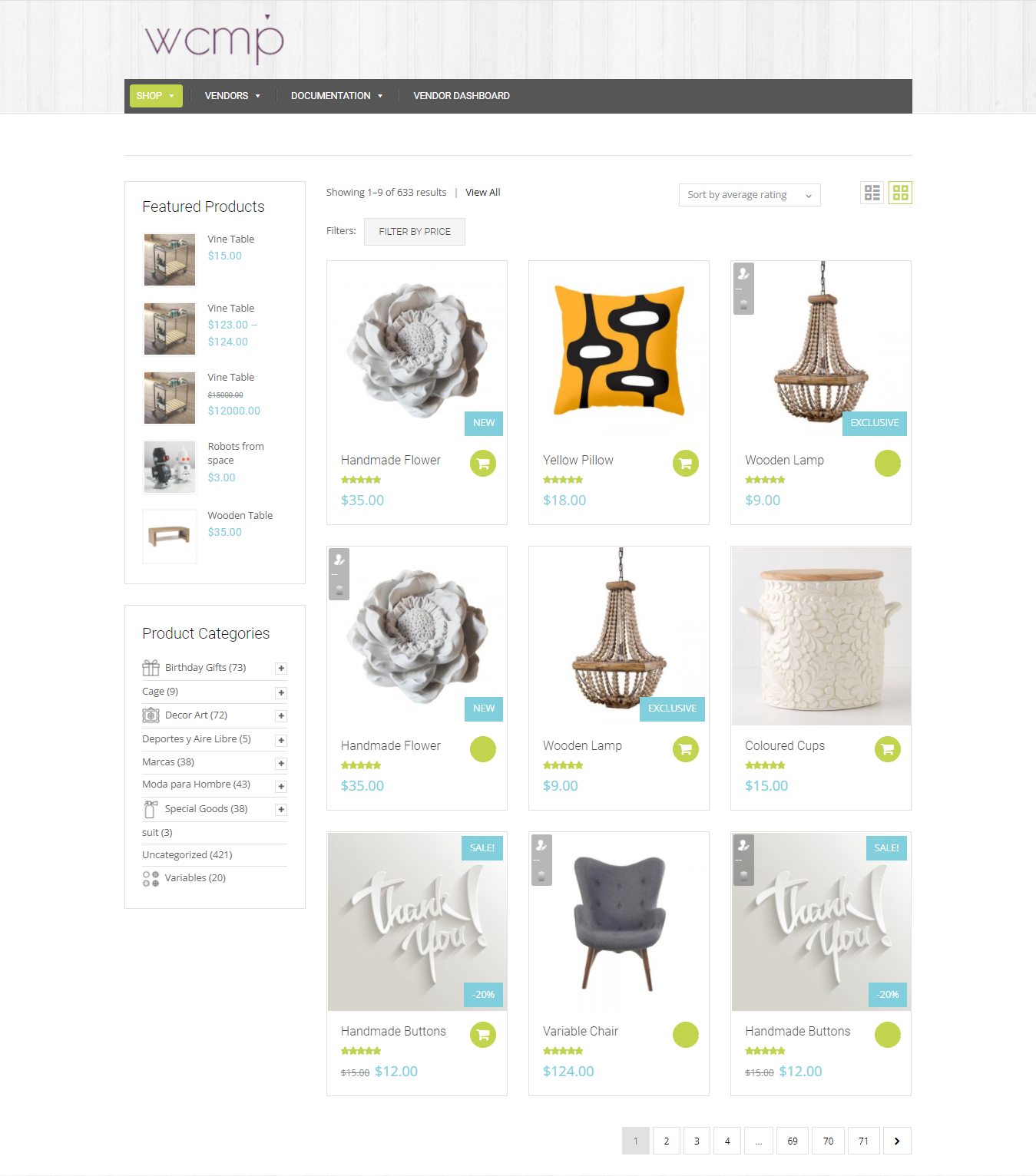
Most of the core features of the plugin come for free. If you need to upgrade, premium add-ons are available starting from $15-$250.
Essential Features
- The plugin offers a user-friendly personalized dashboard to manage their marketplace.
- Easy to customize the vendor page with additional information such as social networks, contact numbers, etc.
- WC Marketplace allows Single Product Multiple Vendor functionality.
- Multiple payment gateways like PayPal, Stripe, and Mangopay integrations are available for seamless real-time payment transactions.
- The plugin also offers vendor stock alerts to control your low or out-of-stock limits.
Product Vendors
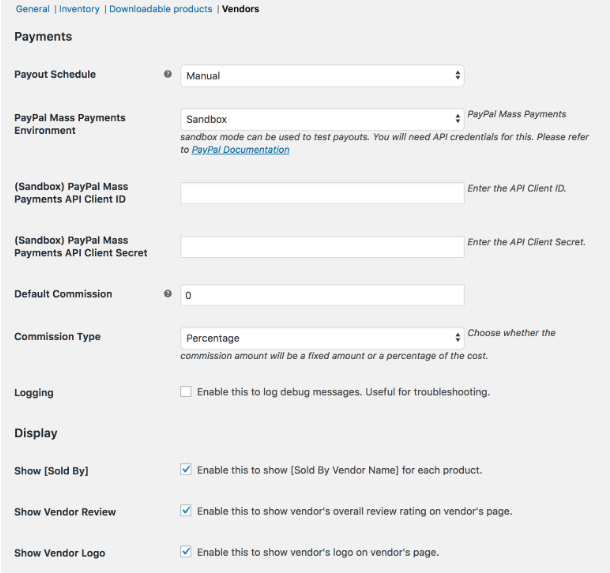
(Image screenshot- Product Vendors)
The plugin that falls under the enforcement of WooCommerce itself is Product Vendors. It is an intuitive extension of WooCommerce that helps you transform your site into a multivendor marketplace. The process is simple- you need to add vendors and earn a commission over each sale. It offers several functionalities to vendors, such as receiving a commission on payouts, maintaining public profiles, viewing orders & reports on sales performance.
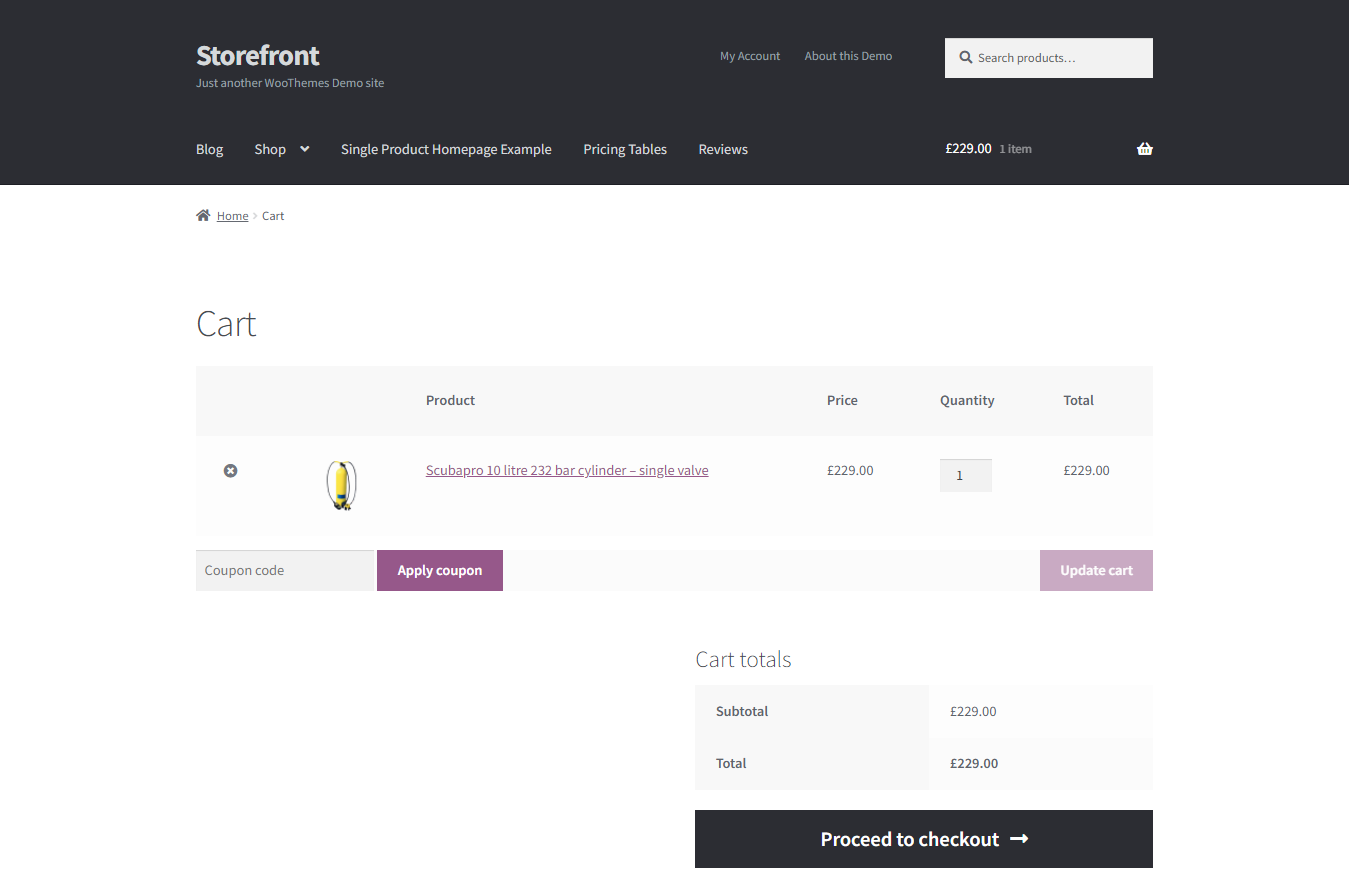
Moreover, the plugin lets vendors manage orders, shipments, and tracking numbers. You can also set payout settings for vendors on a weekly, bi-weekly, and monthly basis. Compared to other multivendor plugins, Product Vendors offer limited features. The price of the plugin extension is $79 annually with product support and updates.
Essential Features
- From hand-made and physical products to digital downloads, sell anything here, including a time-based booking facility with WooCommerce bookings.
- Vendors can control their shipping and product sales management by themselves.
- You can set specific commission plans for different vendors.
- It offers vendor ratings based on the products they sell.
- You can authorize a vendor as a manager or admin to help you oversee tax orders, sales, etc.
Final Thoughts
WooCommerce multivendor plugins are one of the best ways to enhance your online marketplace. Choosing the best plugin might be a tricky proposition. So, we have prepared the list of 6-multivendor plugins for WordPress by reviewing all features and functionalities to make your marketplace a fruitful one.
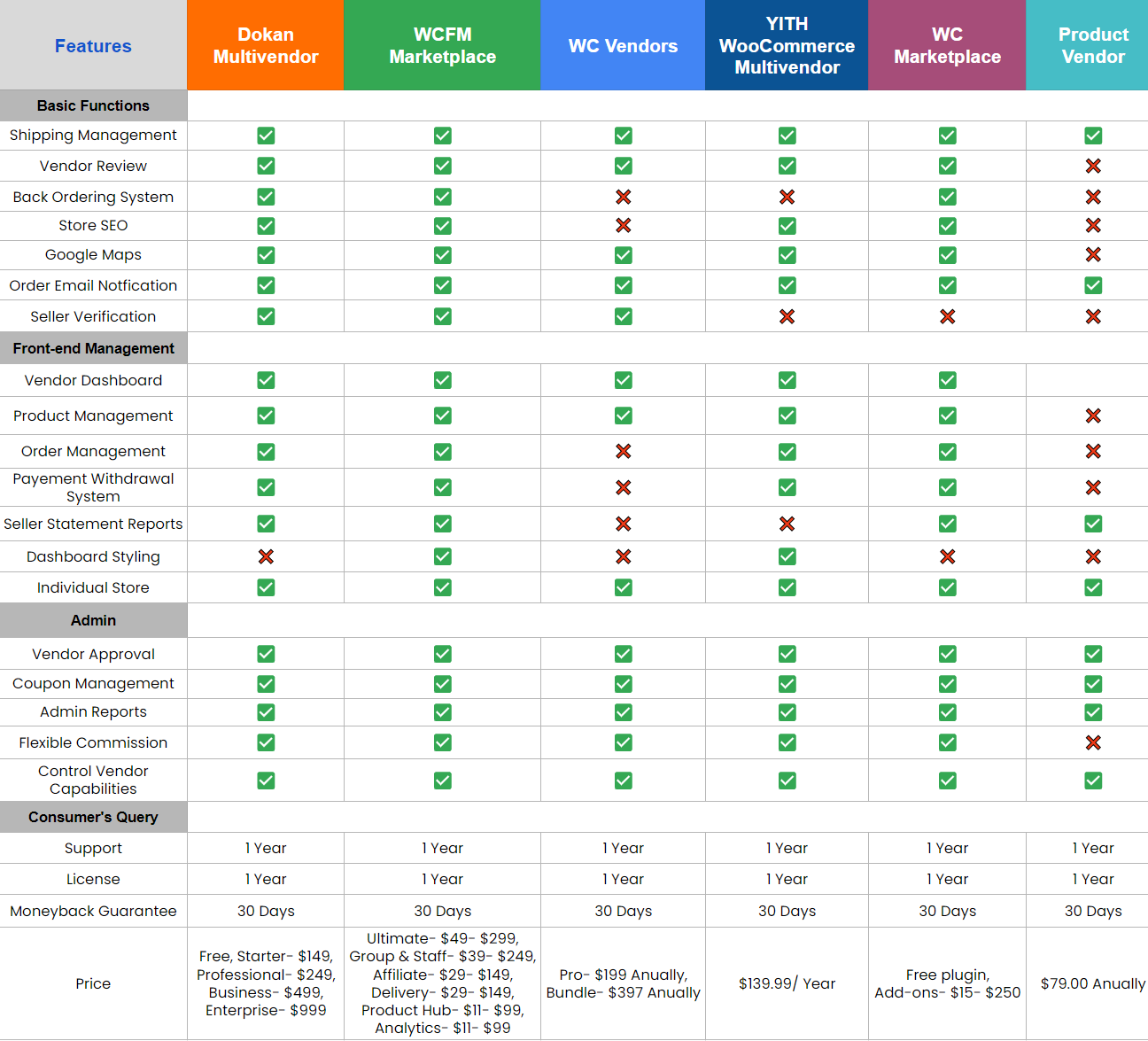
Talking about free multivendor plugins, Dokan has secured the topmost position on the list for its vendor-friendly front-end & uncountable advanced features. Let’s wrap up by taking a final look at the comparison table highlighting all the essential elements based on your primary concerns. If you need to know more about WooCommerce multivendor plugins, drop your comments below or reach us here.
How To Handle High Traffic On Your WordPress Website?
How To Handle High Traffic On Your WordPress Website?
If you ask, can WordPress handle high traffic? The honest answer is yes, WordPress can. The performance of a WordPress website is no less than any custom-made site which is built using high-end tech stacks. But of course, you must know a few do’s & don’ts to ensure optimum performance during peak traffic. In this blog, We will guide you with 10-technical factors that enhance the performance of a WordPress website during peak business hours.

10 Technical Factors To Improve Scalability Of WordPress Website For Managing High Traffic
To cope with millions of users’ visits to your site, you need to integrate additional resources based on your needs and preferences. Several factors are responsible for controlling the traffic load and smooth functioning of the website.
-
Remove Unnecessary & Heavy Plugins

Plugins help you in optimizing the functionalities of your website. From business directories listing to payment collections, plugins exist for everything. But you need to select the right plugin as per your requirements. Installing excessive and heavy plugins can make your site performance slow. They might add extra load to the server-side. Instead of using multiple unnecessary WordPress plugins, consider the ones that fulfill your business needs to run your site faster without traffic issues.
-
Page Builders
A page builder lets you customize and design your website with several eye-popping layouts and content. However, using a pre-designed template offers several nonessential components that can make your site heavy. For instance, your site doesn’t require a chatbot facility though it comes with your stalk template, which might affect the consistency of data functioning. Additionally, it might create an impact on webpage loading and coding errors on the backend.

Hence, try to eliminate render-blocking resources, optimize your image size, reduce unused JavaScript, and work on the CSS files to reduce the traffic vulnerability. Some legitimate page builders available in the online market are Elementor, Divi, Beaver Builder, etc. So, select the right one to make your site customization more impactful without harming the website’s database.
-
Choose The Right Hosting For WordPress Website
The most actionable factor you need to focus on is your web hosting. Your host can block your website if your site gets a sudden heavy rush of traffic. Never opt for a hosting plan that comes with bandwidth limitations. Otherwise, if the visitors’ counts increase, it might put pressure on the hosting resources. Maximizing your hosting plan’s bandwidth might be an alternative option. Though, the location of the website’s physical server and the current location of your visitors can be a reason for your traffic challenges. Some hosts offer limited speed to avoid overload activities as several other websites run on the same server.

You may encounter different hosting types and providers while shopping online. Choose the right one as per your traffic flow and necessity. For example, shared hosting plans are unsuitable for sites with high traffic. It shares the CPU time with other users, which will lead to slow website loading. In the case of some hostings, such as managed hosting, it comes with a monthly estimation. Hence, it can create a problematic situation for both the website owner and your visitors.
If you need uninterrupted functioning of your website, cloud hosting is a reliable and advanced option nowadays. It uses cloud-based data storage and transfer system for which you never need to invest in renting an entire server like VPS and dedicated server hosting. Cloud hosting distributes the data with numerous data centers with multiple servers. It helps users to access the data from any location at any point in time without any issues. Some in-demand cloud hosting providers are Amazon Web Services, IBM Cloud, Cloudways.
-
Page Caching

When users visit your WP site, their browsers store various webpage components, including scripts and content. A section of the content remains static across the site and doesn’t need to load the same file repeatedly. So, caching these files minimizes the HTTP requests between browser and server. It not only improves the data loading speed of the server but also decreases the load that saves your site from technical collapses. The effective way to maintain page caching is using a cache plugin like W3 Total Cache, WP Super Cache, and more to maximize your WP site’s performance speed and protect your site from the negative effects of high traffic downtime.
-
Considering A Content Delivery Network

In many cases, it is not possible to choose your host’s server location, falling under your website’s proximity. Considering a Content Delivery Network (CDN) might help you avoid traffic problems with better site response. With CDN, your site’s files remain with the nearest data center to your web visitor. So, you don’t need to think about the exact server location related to your visitor’s place. Your WP site stays live and accessible from any corner of the world. For a sudden traffic spike, your visitors from a distant location may fail to open your WP site. Thus, you may opt for a pay-as-you-go Content Delivery Network solution as per your necessities. Cloudflare is one of the trustable names for providing CDN support.
-
Burst Data
Traffic growth is uncertain, and you may need to plan it with your host to manage your traffic needs. That’s where the necessity of burst data or burst transmission is indispensable. Some web hosts facilitate you to exceed the pre-set data transfer speed limit against your traffic demand. In some cases, your host may provide you with this service, or you need to pay charges accordingly.
-
Hardware Limitations
Like other web applications, WordPress can also manage the traffic as long as your hardware facilitates. The two server resources you need are adequate memory and processor power. High amounts of traffic mean demand for immense processor power and memory. Ensure that your web host has enough power resources to meet your traffic demands. WordPress depends on MySQL & PHP for storing data; make sure that you have updated and stable versions for reducing the database request to perform a given operation.
The best thing is you enhance your MySQL settings to allow simultaneous database connections. That means, with a process of replication, users won’t get any connection error or timed-out message while accessing your busy site. You can improve MySQL performance through query caching and proper indexing. For a non-techie person, it might sound all alien. That’s why WordPress has an advanced database class- HyperDB plugin that offers replications, partitioning, load balancing, and failover for scaling WordPress.
-
Smooth Website Navigation

The best thing is to keep your WordPress website customization simple. Design your web pages according to the service categories. You can opt for a scroll-down menu to highlight your service lists for organizing the page layout structure systematically. You may also add a search bar to make your website navigation easier. If you have better website navigation, less load it might create on the database.
-
Minimize The WordPress Website Database Load
Managing your database structure is essential for convenient data transmission between your WP site and visitors. Preparing a schema as per your feasibility for the database is necessary if your site contains many metadata, posts, and comments.
Look after the WP-options table for load optimization. The table includes home URL, site URL, admin data, setting themes, cache data, and a lot more. Even combining multiple SQL queries might also help to balance your data load. You need to figure out the location of your multimedia files on your WP website. If you see the media file is in the database, try to transfer it to an external storage or delete the unnecessary files. So, minimizing the load on the database makes your WP site’s operation smoother and faster, even if you have millions of users.
-
Keep Regular Backups

With the increase in traffic, your site may get heavier. Site crash will be a probable result because of heavy load. Thus, you may need to safeguard your data during traffic issues. For instance, you can use a cloud-based storage system to keep your essential data safely without getting misplaced or destroyed. Depending on your storage needs, you need to segregate or allocate the space for storing your data. Regular backups not only help you protect your data at the time of traffic crashes but also ensure the safety of your content.
Bottomline
Traffic growth is something that every website owner seeks to improve the online presence. It is an elementary metric that helps you track the increase of visitors to your website. Additionally, it gives you more exposure to promote your business products & services to a large audience that generates better conversions.
However, you need to make sure that your website needs to be capable enough to handle more users. If it’s not, this might affect your website’s performance, and you will lose your visitor’s count. The same thing applies to your WordPress website in times of heavy traffic load. We have pointed out every technical area to simplify your WordPress traffic issues. If you still have any queries regarding high traffic on your WordPress website, hit the comment box or get in touch with us for a better solution.
List Of Best Business Directory Plugins For WordPress Website
List Of Best Business Directory Plugins For WordPress Website
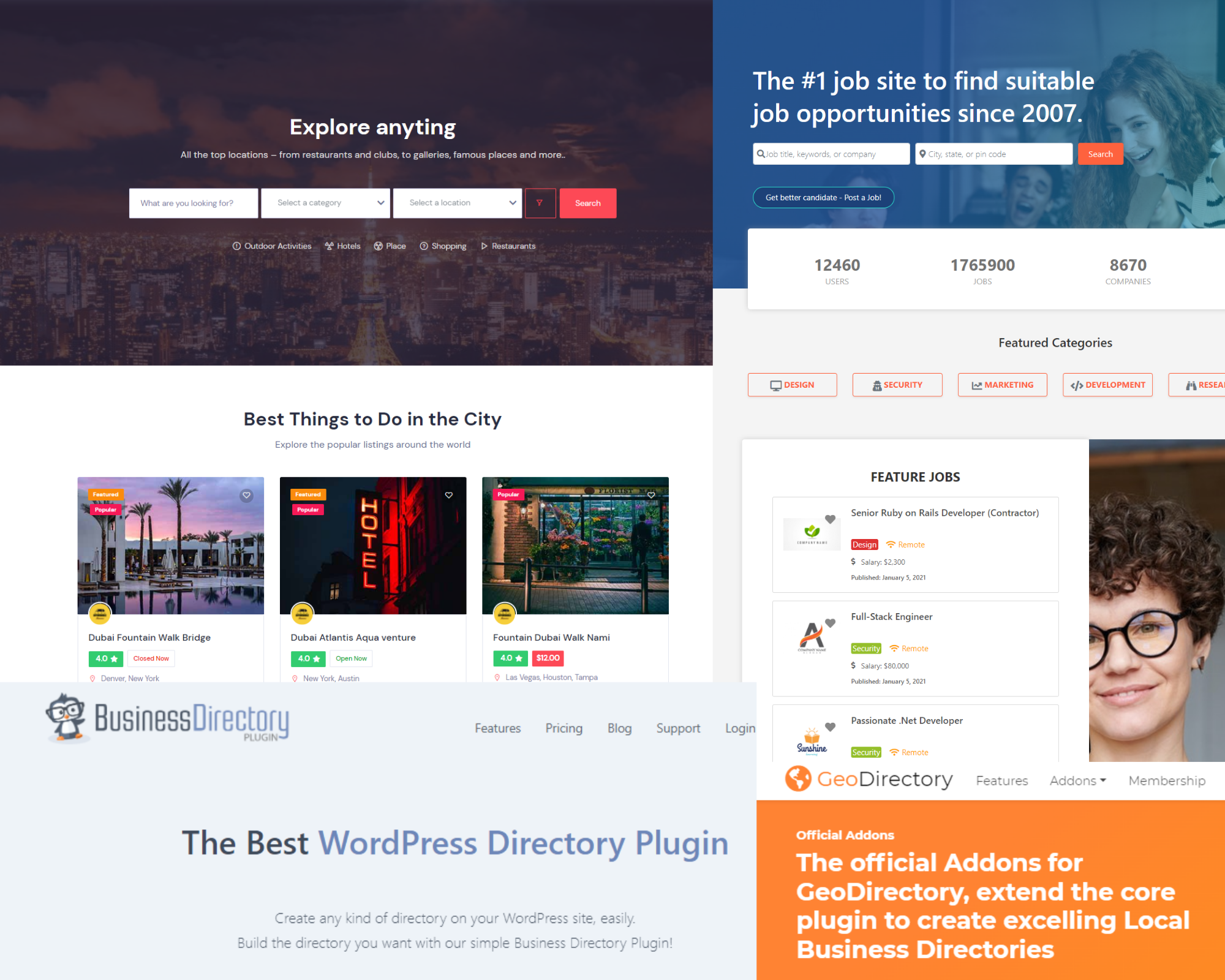
Adding a directory listing plugin to your WordPress website helps you get information about businesses in a particular niche. Plus, it has the potential to increase traffic and enhance the visibility of your website. Creating a directory listing website helps you gain authority in your domain. So, people can discover your business availability by location or category. Whether to broadcast a lexicon of names or an extensive business index on your website, business directory plugins make it possible.
Several WordPress directory plugins are available on the web. Here are the top WordPress business directory plugins that might fulfill your requirements. Let’s have a quick look at the reviews and comparison table for building an ideal directory site.
5-Top WordPress Business Directory Plugins 2022 (Reviews & Features)
1. Directorist– A Complete Directory Listing Solution For WordPress
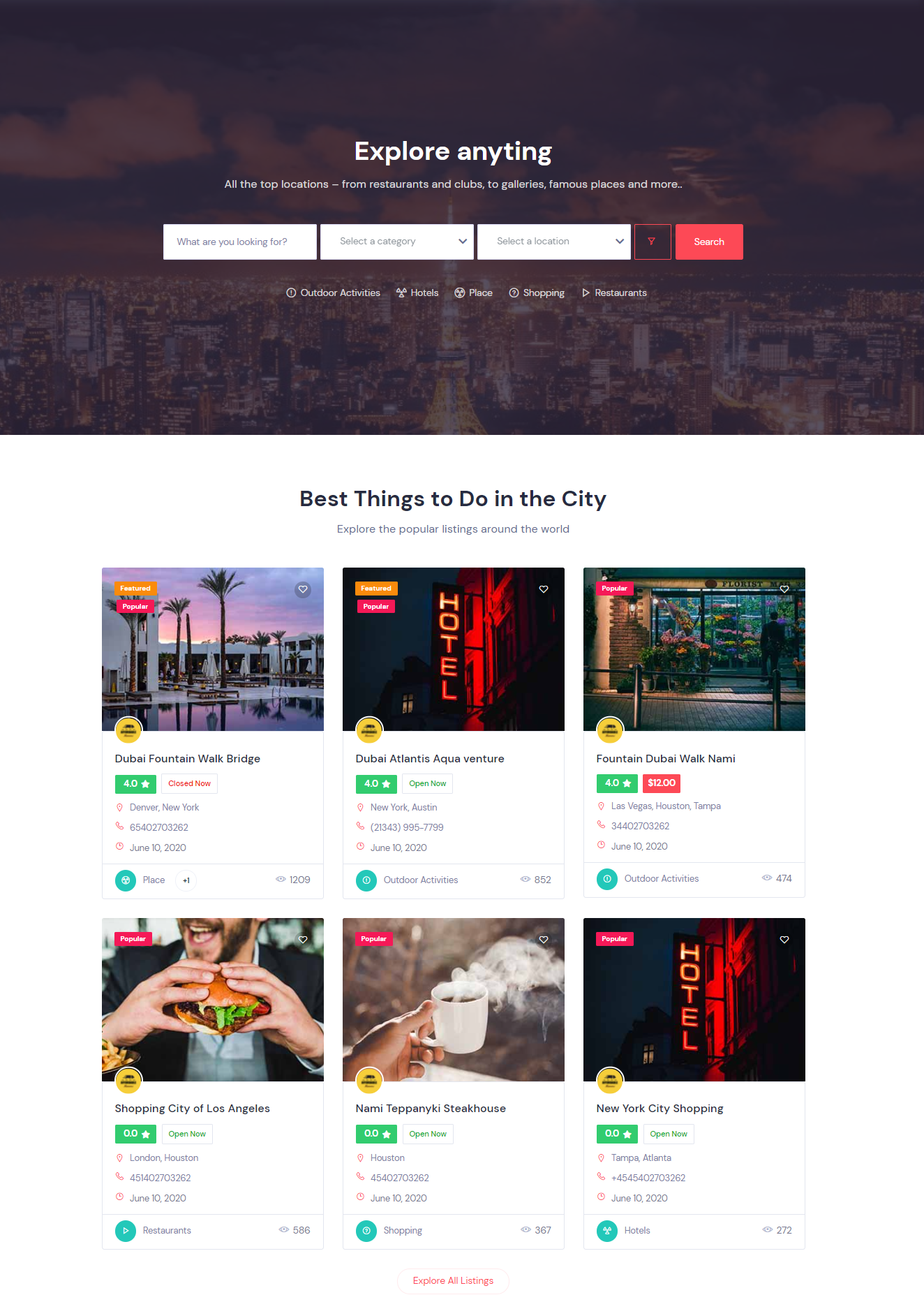
(Image Source: Directorist)
Directorist is an absolute directory plugin for your WordPress website. It allows you to create a service directory, local directory, and classified ad. Directorist is a well-optimized plugin that ensures low memory consumption. Therefore, it can scale to millions of listings and provide efficient query execution.
Moreover, the powerful search enables you to find businesses based on nearby listings and geolocations. It allows users to manage and submit listings from the front-end. With an advanced filter, users can search listings by price range, category, tags, etc. It grants complete control of the site to the admin. Though, users can maintain the listings without accessing the admin panel. The core plugin works as a standalone system for building a responsive directory website.
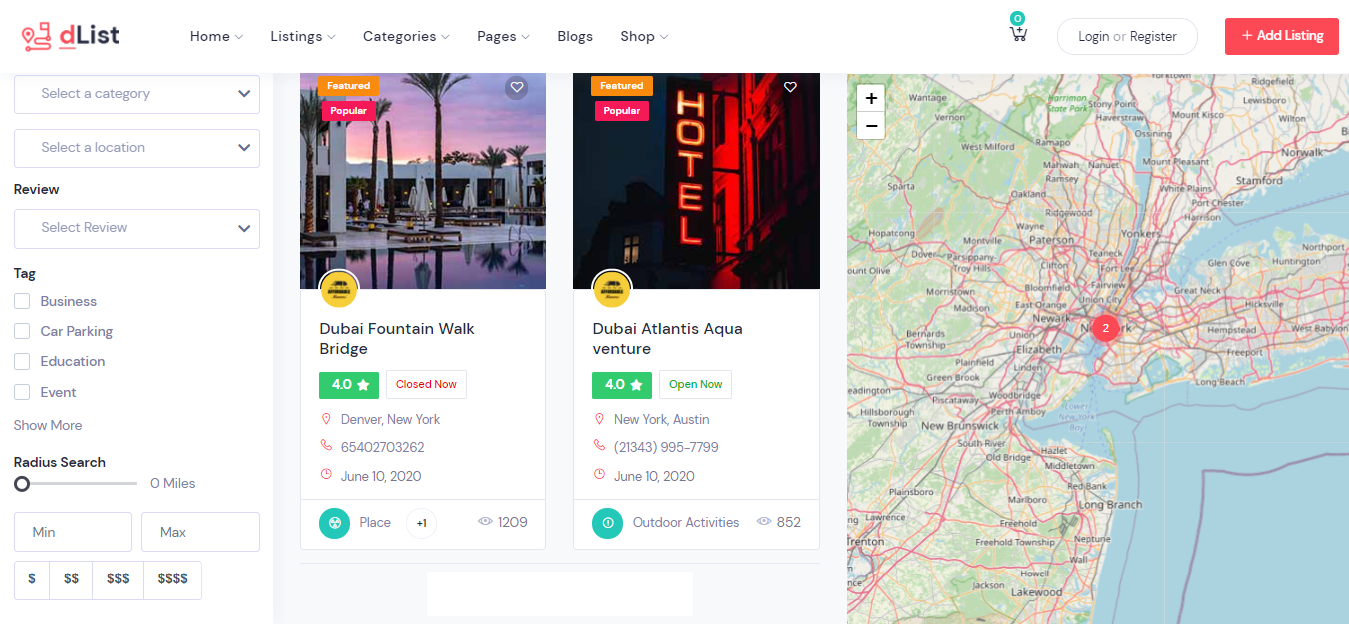
The intuitive custom form builder helps you uplift your directory listing experience. Plus, the drag & drop-based input fields make your site customization easier. You can create listing card layouts, and single-page layouts and customize listings for grid view. It works seamlessly with all the leading WordPress eCommerce themes. Revamp your existing website design into a personalized directory using 25+ Elementor widgets.
The free version of the Directorist plugin offers a CSV bulk importer wizard. It simplifies your listings import process from a CSV file. So, migration and directory personalization is easy with a wide range of shortcodes.
It works perfectly with multiple mapping sources such as Google Maps and OpenStreet Maps. It auto-fills the location fields and helps users to get desired services. Moreover, the plugin offers a multilingual facility. It is compatible with RTL languages like Arabic, Azeri, etc. It uses the Loco Translate tool for translating your website language. Some more features available with the free version are Rating & Reviews, Custom Badges, Email notifications, and lots more.
What Makes It Distinct?
The directorist plugin facilitates a Multi-user roles program. That means service providers & seekers can utilize similar extended functionalities. With premium features, you can list preferred services to your directory sites. Here is a list of services and benefits that mark the Directorist plugin at the top of our list.
- Service-oriented or event booking listing facility
- Built-in checkout and payment acceptance through PayPal, WooCommerce, Stripe, and bank transfers
- Compare listings
- Pay per submit
- Directorist Ads manager
- Claim listings
- Rank featured listings
- Listing with multiple mapping sources like Google Maps & OpenStreet Maps
- Image gallery
- Google reCAPTCHA for spam protection
- Live chat or private messaging
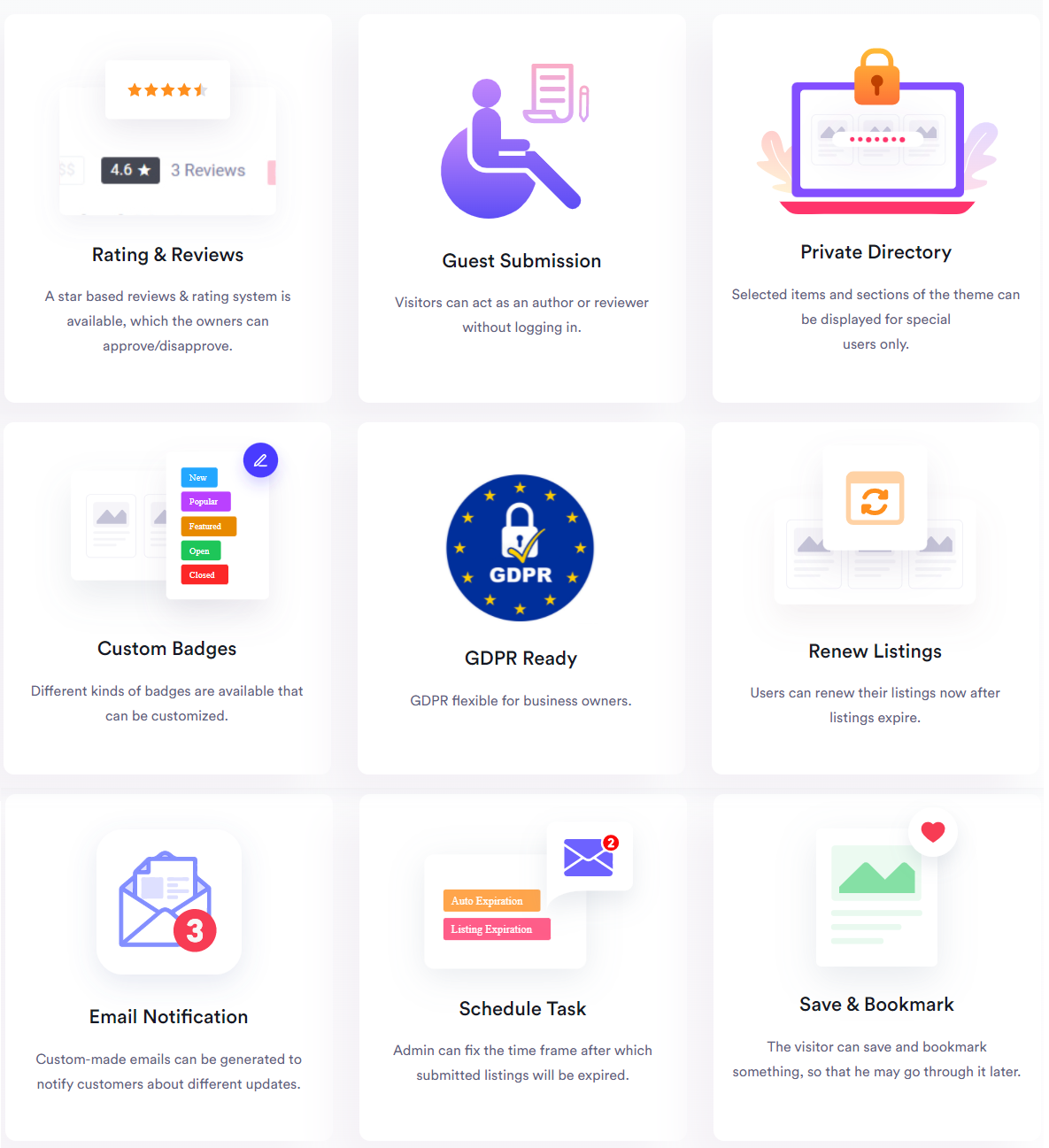
Pricing Plans
The Directorist core plugin comes for free and 3-paid plans for lifetime service. Here are the pricing plans for Directorist premium plugins:
- The pricing plan starts at $79 for 3-months. It offers all extensions, premium themes, a 30% renewal discount, and more services.
-
The next one is $129 per 6-months which includes an unlimited site license. It also comes with all extensions, a 40% renewal discount, and lots more.
-
The yearly plan comes at $199 that offers all extensions and premium themes. It also includes priority support and a 50% renewal with other services.
- The most popular one is the lifetime plan, where you can buy the extensions individually. A 1-site license costs you $399, for the 5-sites price is $699, and $999 for 100-sites.
2. Business Directory Plugin– A Versatile Plugin To Create Local Directories
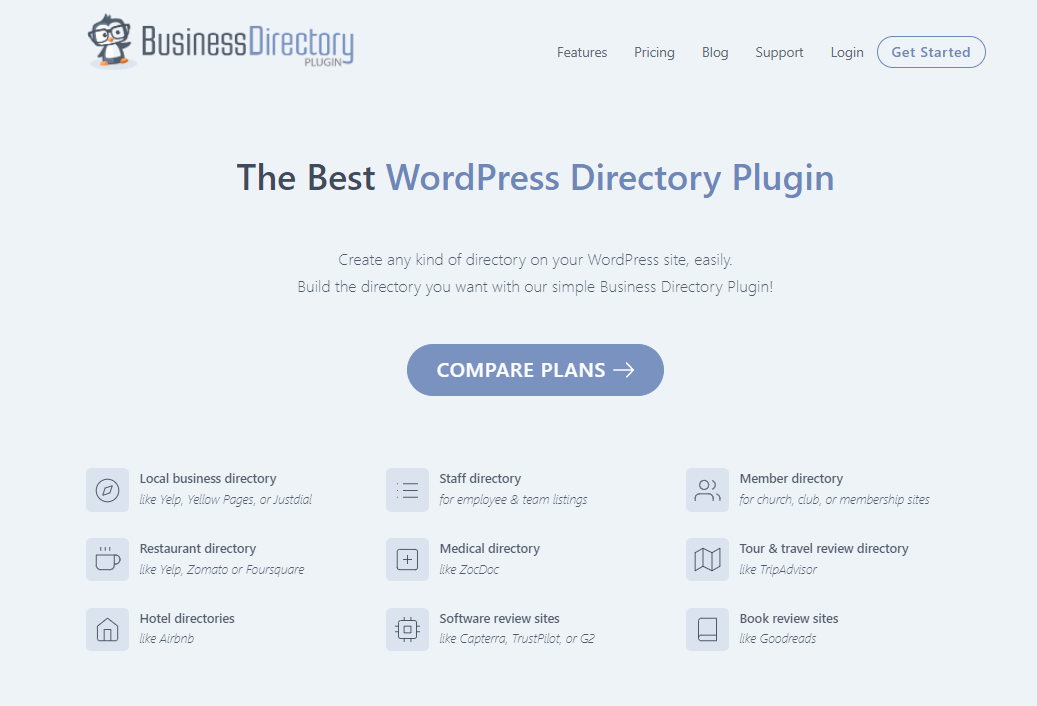
(Image Source: Business Directory Plugin)
If you need a dedicated directory listing plugin for your WordPress site, Business Directory Plugin is the perfect one. It lets you build local directories such as Yelp, Yellow Pages, etc. Moreover, you can add business provider listings like restaurants, hotels, tours & travel, etc.
The plugin also covers the internal directories feature. It helps store information about team members or employees. You can create featured entries and sort entries into tags and categories as per your feasibility.
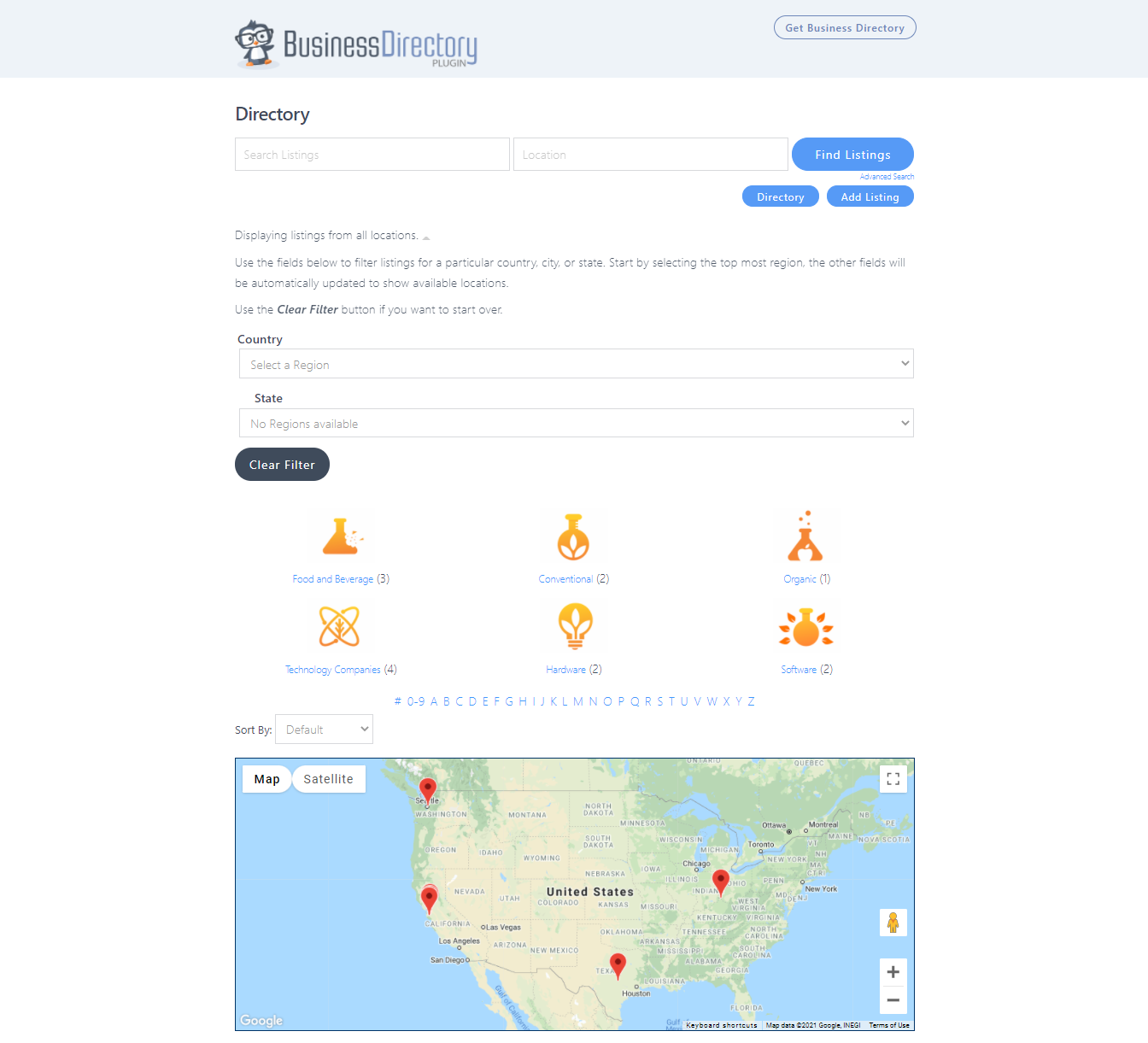
Business Directory Plugin offers an easy installation process for every WordPress user. By using the pre-built templates, you can customize the style and layouts of the directory. It allows you to have full-field control for creating custom form fields.
With the free version, you can earn revenue for subscription-based paid listings. Both admin and users can edit the directory listings through the front-end. For more features and add-ons, upgrade the plugin to the premium version.
What Makes It Distinct?
Here are some notable features of the premium version that you might consider:
- Mobile-friendly listings
- File attachments
- Discount codes
- Paid & free submissions
- Google maps support
- Recurring payments
- Rating module
- Zip code search filter
- WPML support
- 2-checkout gateway
- Compatible with payment integration software like PayPal, Stripe, Authorize.net, etc
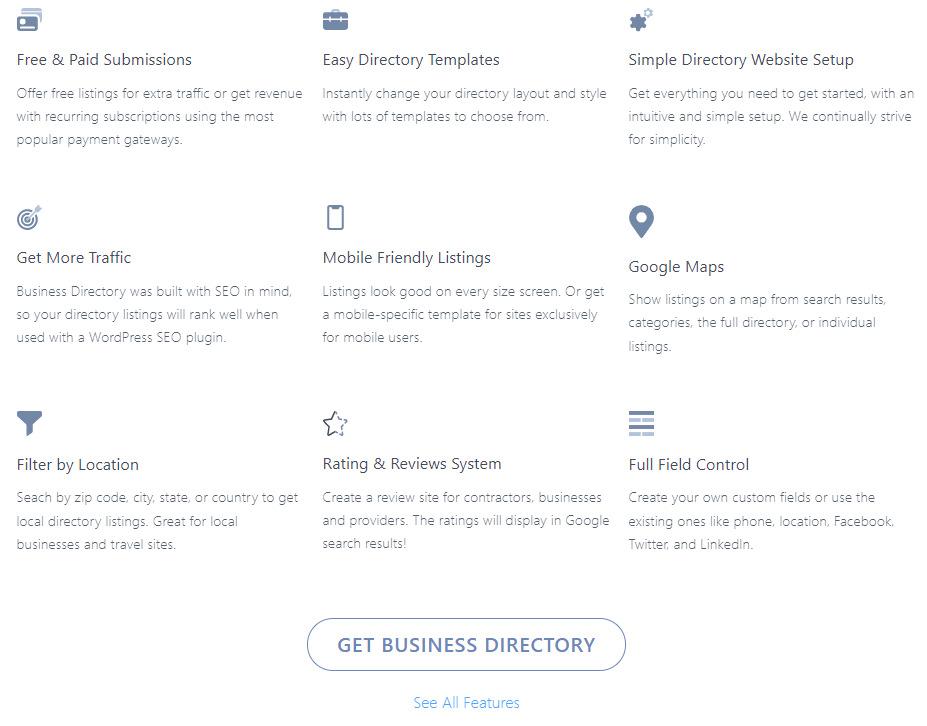
Additionally, it provides drag-and-drop image upload and a built-in CSV import facility. It also offers a reCAPTCHA tool for preventing spam listings. You can use this plugin with all the best premium directory themes. Furthermore, it helps achieve better traffic when you integrate with SEO plugins.
Pricing Plans
Business Directory Plugin has three different pricing plans:
- The basic plan comes with unlimited listings and 1-year of support at $99 per year.
- The next one is the Pro plan which offers all the basic features and priority support just for $299/year. It is the most popular Business Directory Plugin plan.
- The elite plan costs you $499/year. It offers all the Pro features with all directory themes.
3. GeoDirectory– Best Location-based Customizable Directory
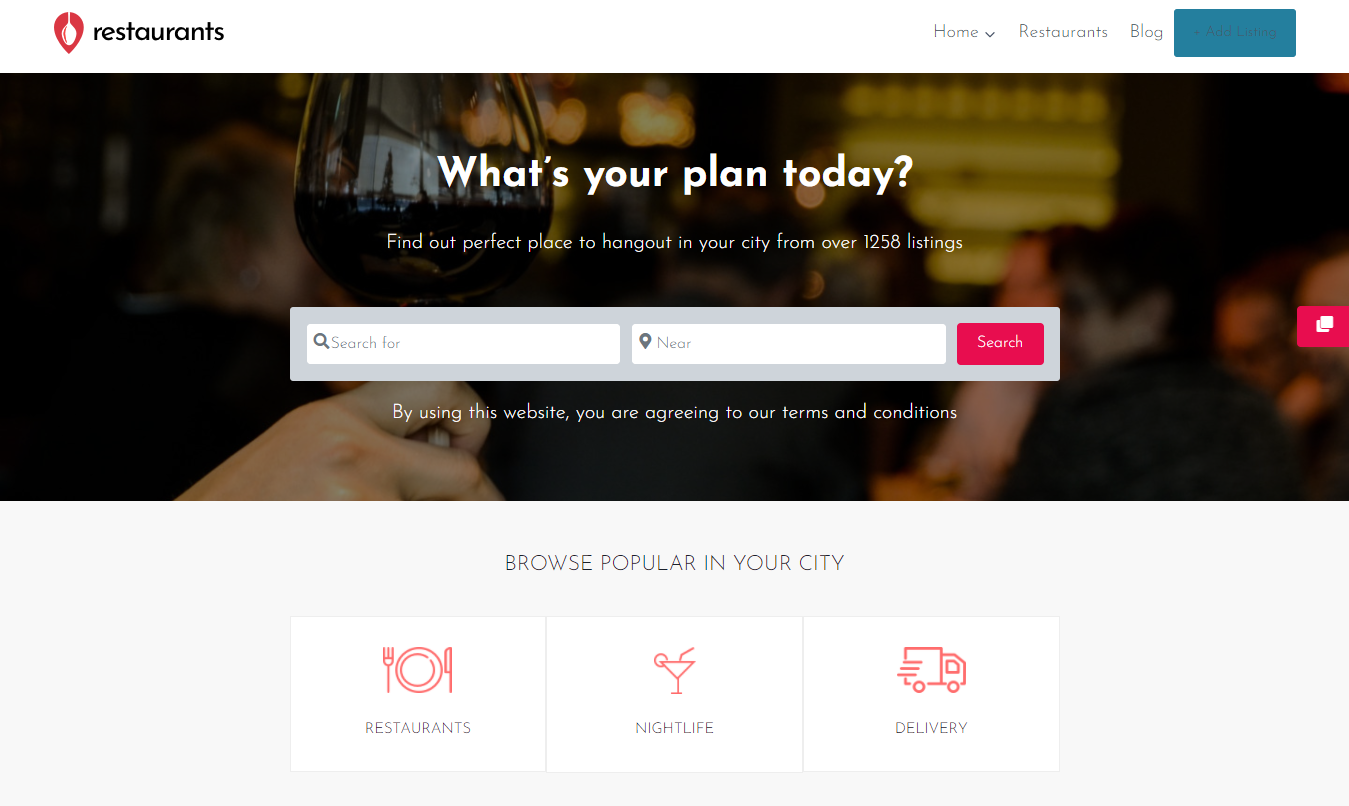
(Image Source: GeoDirectory)
GeoDirectory is an advanced WordPress directory plugin. It allows you to create a location-based directory site. When it comes to ultimate customization and flexibility, GeoDirectory has no alternatives. It accommodates fast scaling opportunities for its highly-optimized database structures.
Most of the directory plugin features of the GeoDirectory are available for free. However, you will get a constricted search directory and the core plugin functionalities. The plugin seamlessly integrates with Google Maps. Every listing in the directory has a clickable and large map. Thus, it helps users to find the direction of the business location comfortably. Plus, it shows the business search results by proximity. That means it gives the closest and nearby options to the users.
It is highly compatible with most WordPress themes. The plugin offers an intuitive drag & drop form builder. It helps in creating a custom front-end form for listings. GeoDirectory allows you to customize shortcodes, 40+ widgets, and blocks as per your needs. Additionally, custom fields come with a unique badge system. You can use these customized badges with social links, counts, and video icons.
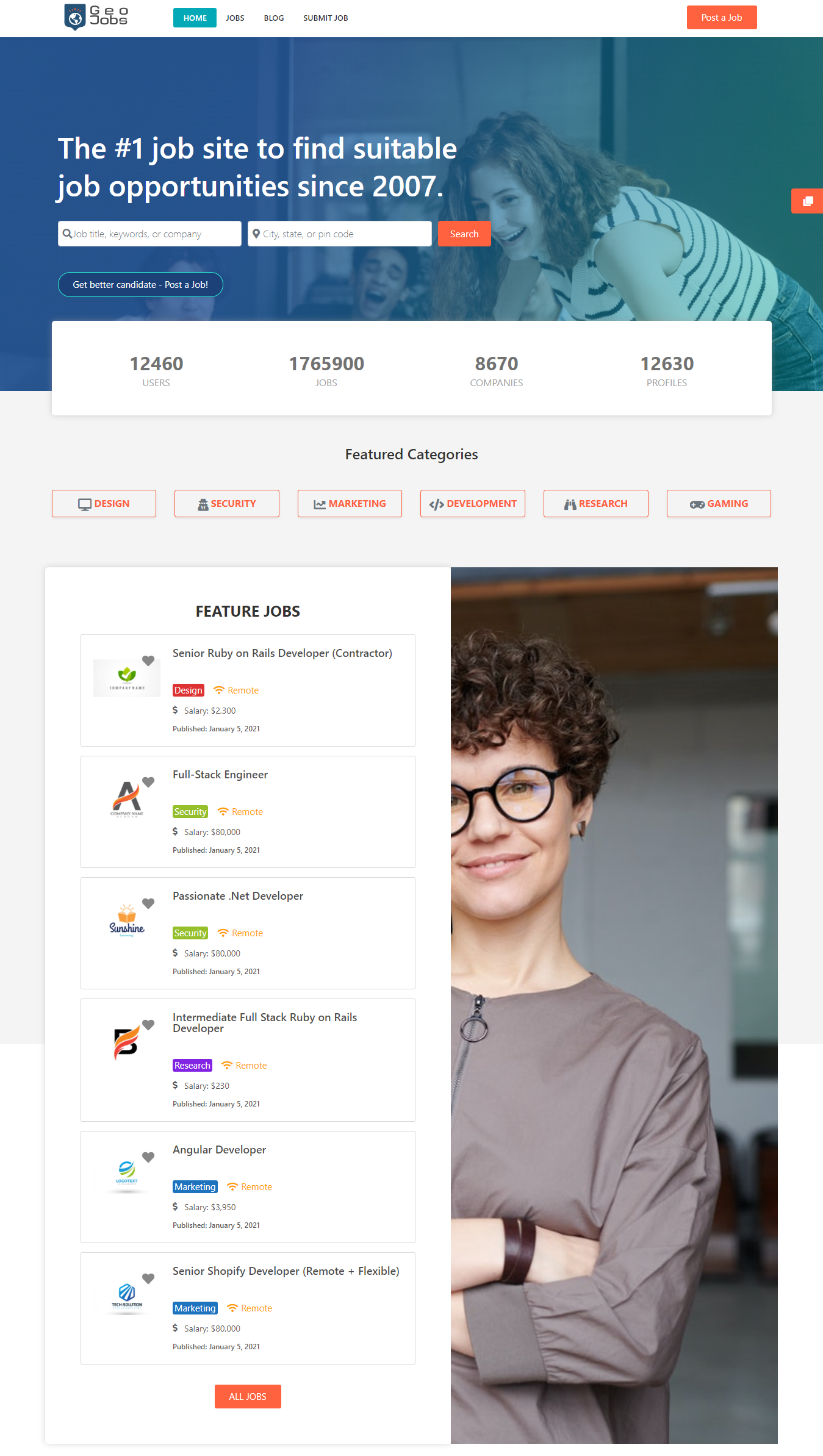
Planning to develop a directory site from scratch, GeoDirectory offers you extensive features & benefits. Furthermore, service providers in your directory will have access to Google Analytics. It shows how many responses they are getting from your site.
What Makes It Distinct?
Here are some features that make GeoDirectory a comprehensive WordPress business directory plugin.
- Option to add business working hours and availability
- Compatible with major WordPress themes and page builders
- Payment integrations
- Advanced search filters based on a specific location or zip code
- BuddyPress integration
- Drag & drop builder form for custom fields
- Claim listing
- Google Analytics
- Rating & Reviews
- Multi-location listing support
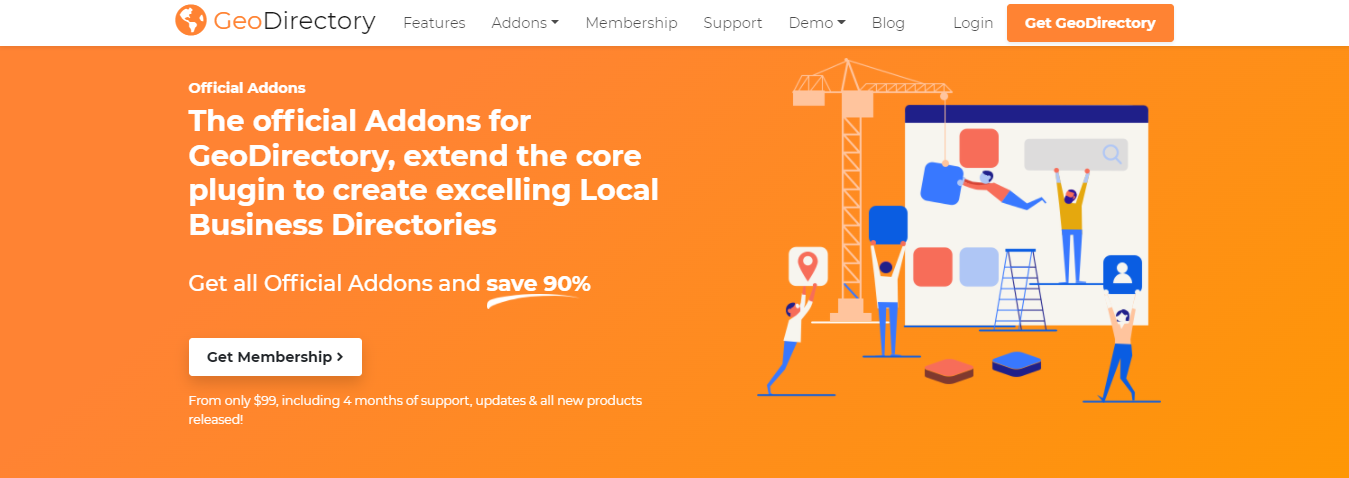
Pricing Plans
For adding premium add-ons to your site, you may need to subscribe to a paid membership. It offers four pricing plans that include different features.
- For 4-months, the pricing plan costs you $99.
- $129 for every 6-months.
- The 12-months package is the most popular one that costs you $199.
- The lifetime plan comes at $995.
Every plan offers all add-ons, auto-updates, and premium support. All three monthly packages offer a 30-day money-back guarantee. It also provides unlimited domains except the lifetime one.
4. Connections Business Directory– A Free Plugin Aimed At Creating Address Book
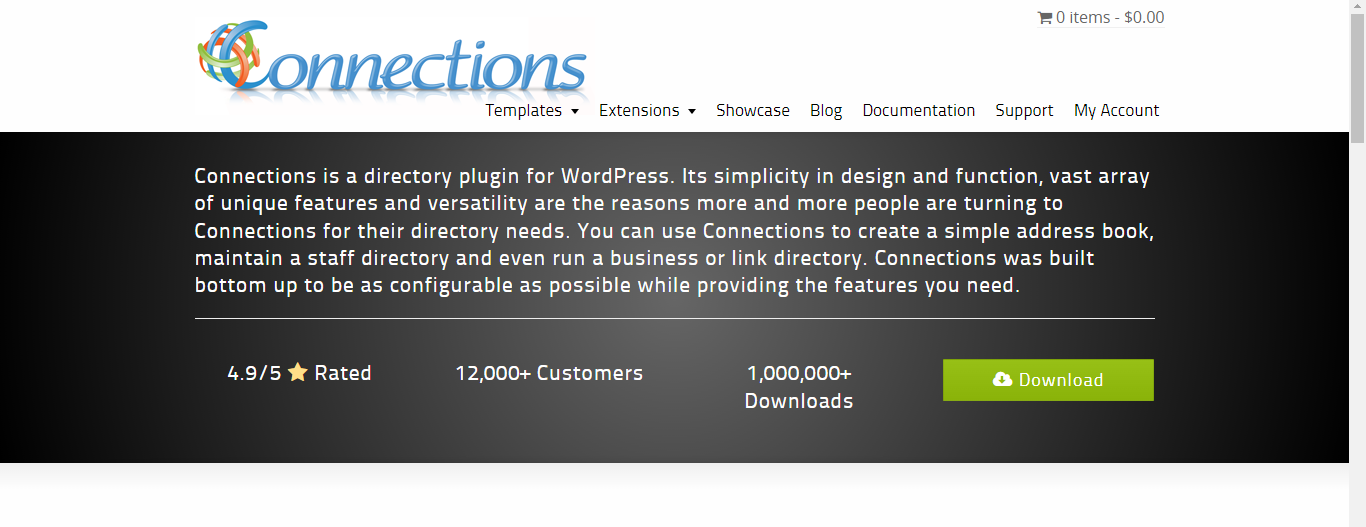
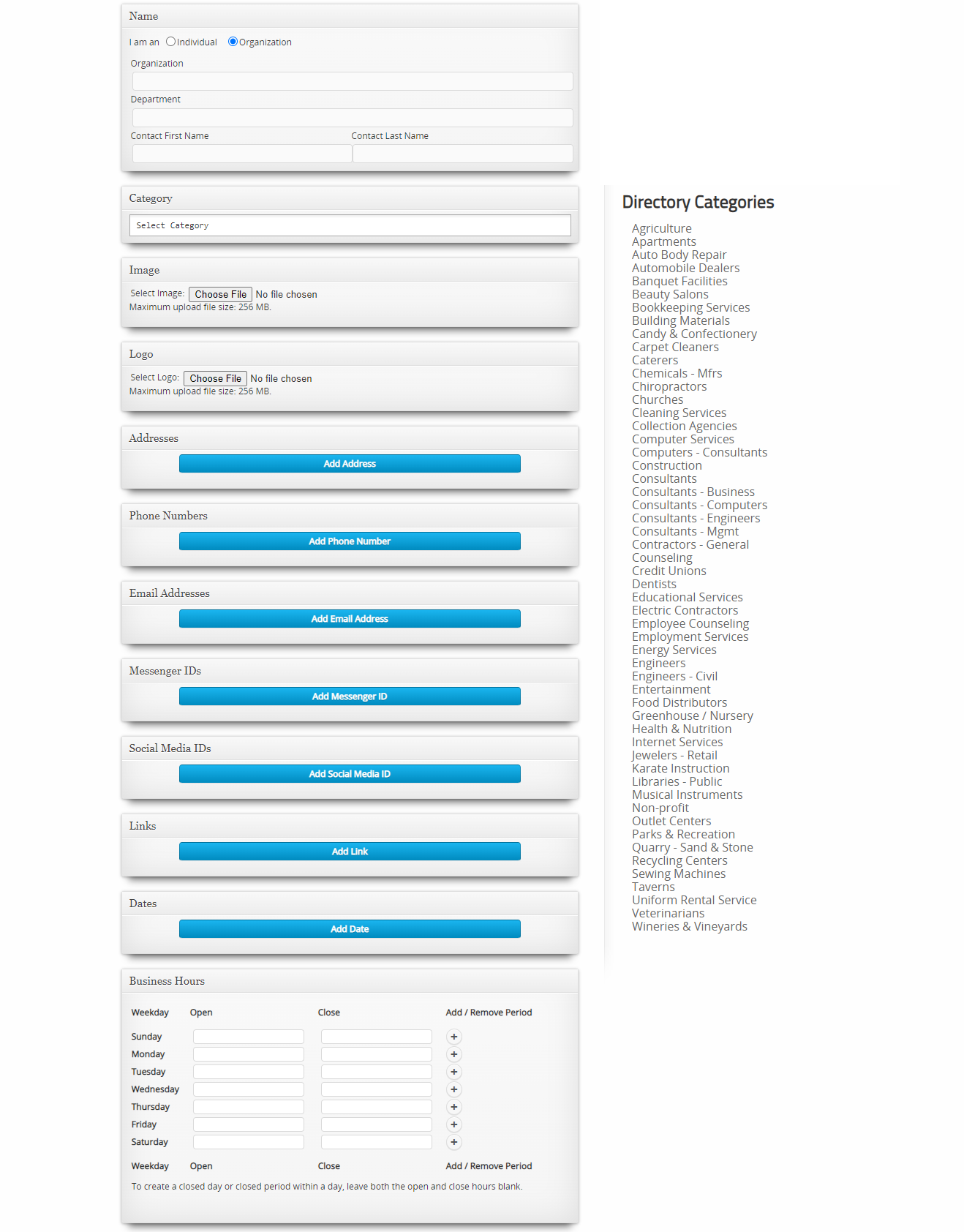
Another extraordinary feature of this free plugin is the robust templates. You get a decent range of templates with the free version that enhances your site customization. For instance, a few names of individual templates are cMap, Circled, Expert Plus, Gridder, etc. Apart from being a free business directory plugin, it also offers several paid premium add-ons.
What Makes It Distinct?
Connections Business Directory has various salient features & functionalities that include:
- Template customizer
- Extensive free & paid templates
- Responsive support forum
- Language translation
- CSV file import & export
- ROT13 Email encryption
- Open-source code
- Custom category order
- Repeatable fields
- Premium extensions
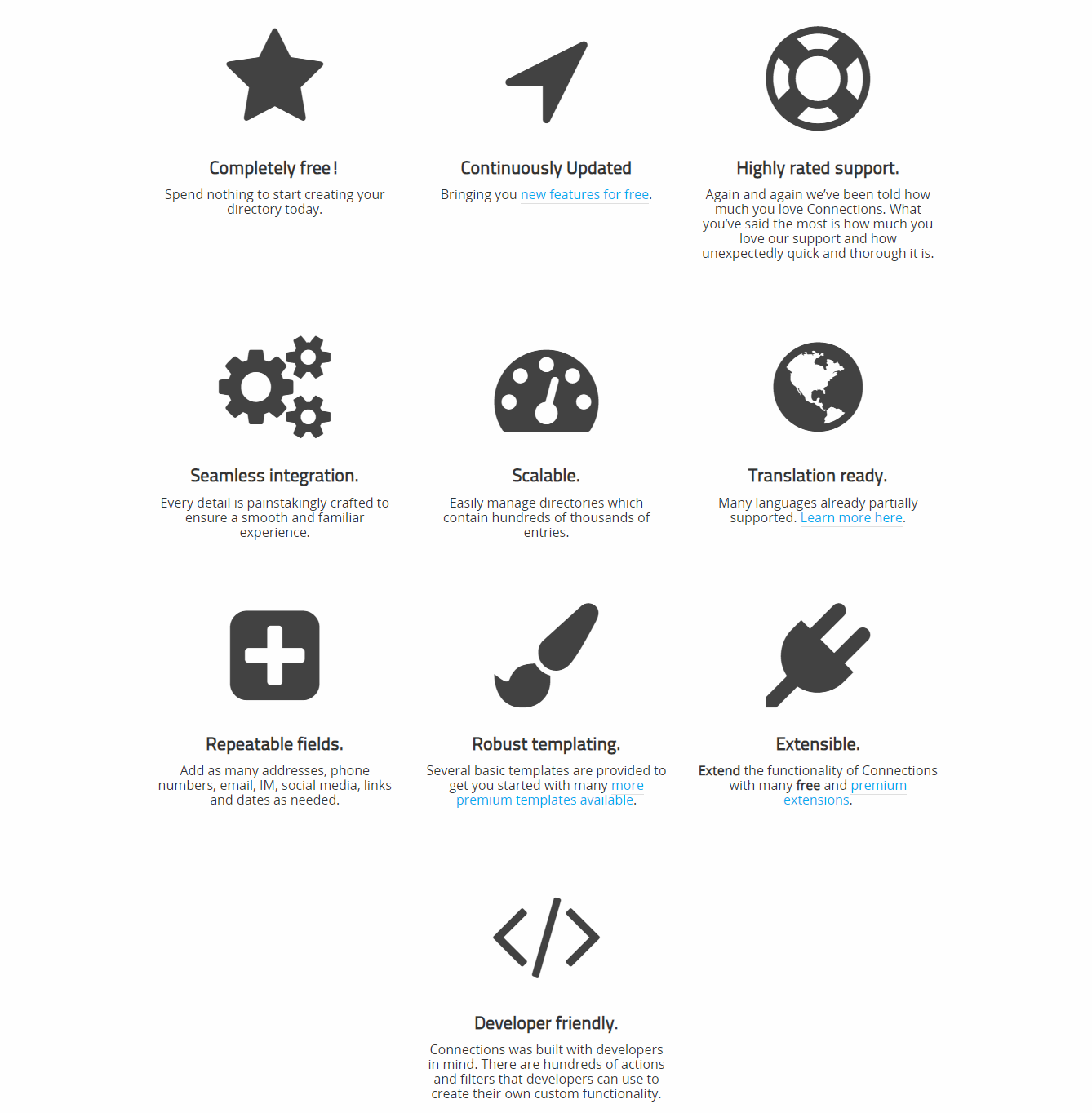
Additionally, the admin can include other extensions to the directory. A few extensions are dates, social links, contact, custom entry order, etc. With a 4.9/5 rating and 12,000+ customers, Connections Business Directory is an affordable directory plugin.
Pricing Plans
Apparently, the Connections Business Directory is a free WP plugin. However, you can buy the add-ons for more services. It offers three premium bundles with individual pricing plans.
- Template Pro Pack for single-site costs you $59.99 and $149.99 for 1 to 5 sites. The price of unlimited sites is $199.99.
- The next one is the Extension Pro Pack which includes all extensions and costs $29.99 for one site. Similarly, $99.99 is for 1 to 5 sites. For unlimited sites, the price plan is $199.99.
- The Pro Pack bundle includes all extensions and templates for $74.99 single site. 1-5 sites cost you $149.99, and unlimited sites price is $299.99.
5. Sabai Business Directory– Best For Creating Community-driven Listings
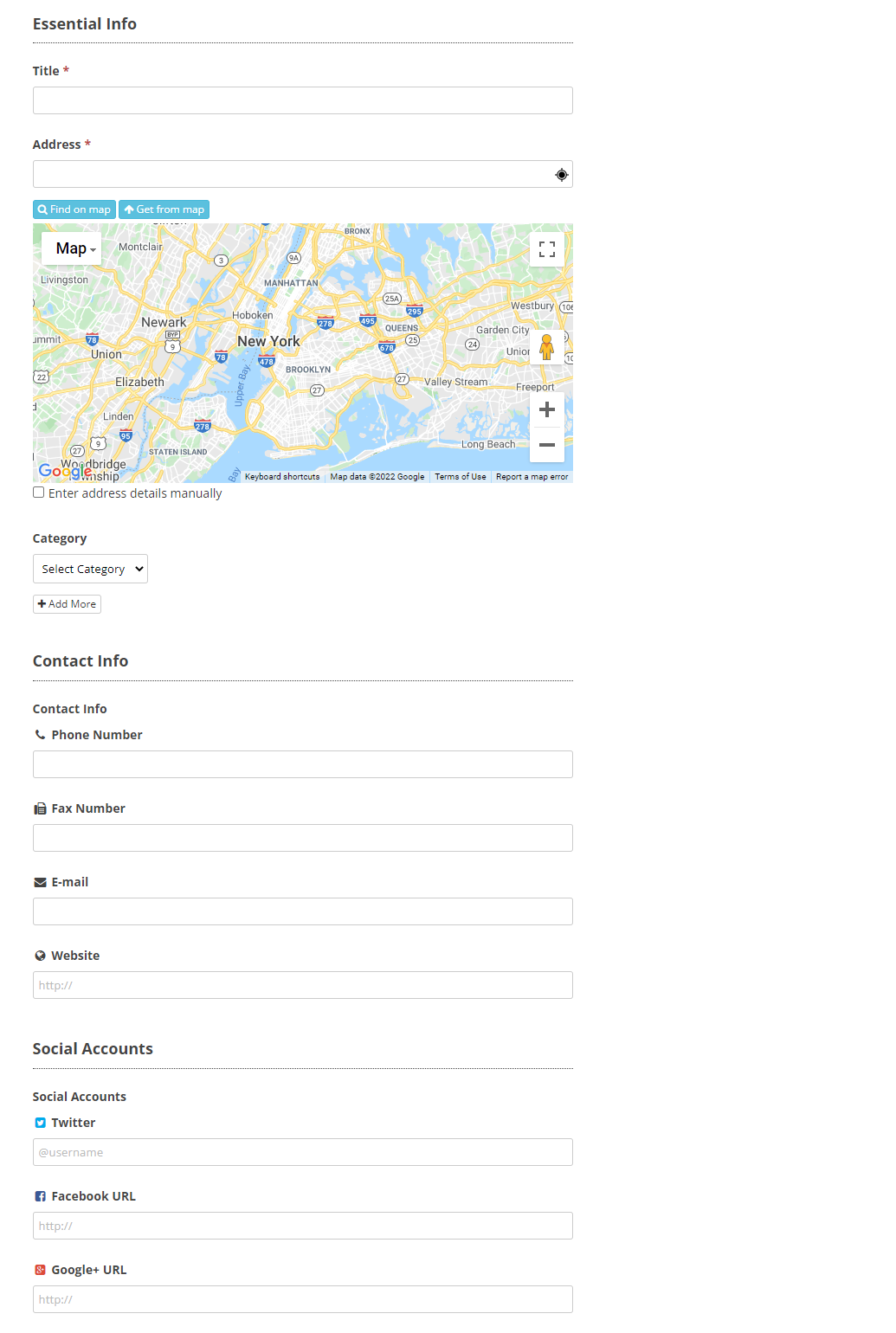
(Image Source: Sabai Directory)
Whether you want to build a community-driven business directory or a location-based search list, Sabai Directory is a premium WordPress plugin. Though, it offers free add-ons and other services. For instance, you can search listings by category, keywords, and user-friendly auto-suggestions. Plus, it offers several rating & review options. Additionally, it gives you access to upload various media files, bookmarked listings, email notifications, and lots more.
Creating custom fields is easier with the Sabai directory’s visual form editor tool. So, users can conveniently use front-end forms for uploading listings and pictures. Including that, users can comment on others’ posts and reviews. Furthermore, it allows users to share votes on reviews, claim listings, flag errors, etc. Thus, it helps service providers and seekers regulate the site to ensure its credibility.
For a beginner, this premium plugin might seem intricate initially. With 16 different interactive Google Map styles and 11 widgets, you can customize the site. Plus, 12-shortcodes that help you enhance the default listing display. You can check their live demo at the product page on CodeCanyon.net as per your necessity.
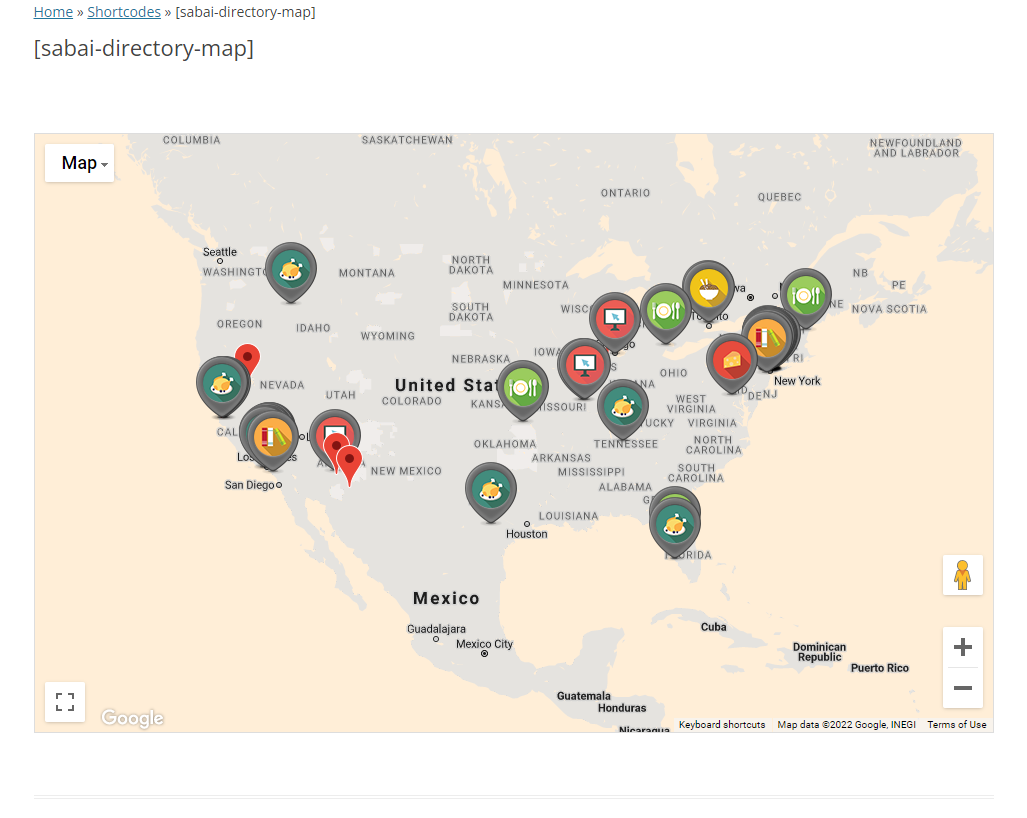
What Makes It Distinct?
As a premium WordPress directory plugin, the feature collection is impressively long. Still, some of the reasonable factors that are available with the Sabai directory:
- 3-listing display designs
- 16-Google map styles with custom map markers
- Ratings & Reviews
- Visual form editor
- Upvote pictures and comments on listings
- Claim listings
- Listing with image file
- 27-email notifications
- Custom pricing plans for paid listings and add-ons
- 4-payment gateway options, including Stripe & PayPal compatibility
Pricing Plans
The regular license fee of the Sabai Directory is $29. This plan includes 6-months of support from Envato Elements. You need to extend the license if you need to use Sabai as a part of a product that you sell. This extended license costs you $150, including 6-months support. Plus, you can extend the support for 12 months at $9 only.
Things Help You To Choose The Best Business Directory Plugins For WordPress
Several WordPress business directory plugins are available on the web. The crucial task is to find the right one as per your personal needs & business requirements. Every plugin offers extensive features and services that make it distinct from others. So, here are some essential pointers you might consider before picking the ideal plugin for your website.
Listing Customization
A plugin that lets you customize your old and new listings is preeminent to the development of your business index. For instance, a plugin like Directorist offers an intuitive custom form builder to optimize your directory site. So, a directory site without a customization option decreases the overall functionality. Thus, opt for a plugin that at least offers minimum customization services.
Rating & Reviews
A rating and review option helps users express their opinions regarding the listed businesses. Furthermore, a rating module allows your users to rate or flag listings as per their services. Thus, it makes your directory site trustable and credible. It will ensure your customers that the site contains accurate and updated information.
Map Integration
Sometimes finding a business location online is difficult for many individuals. Thus, several business directory plugins offer a map integration facility. You can easily navigate the direction of the place without leaving the website. Specifically, plugins that facilitate Google Maps give you a better experience.
Bookmarking Tools
Bookmarking is one of the efficient ways to engage your users for future references. That means your users can bookmark listings individually and check them later on. It saves time and also generates more traffic to your business directory site.
Final Thoughts
The reason to integrate functional business directory plugins is to create a user-friendly database. It is advantageous for users to find new vendors with up-to-date details. Plus, it is beneficial for businesses to connect with other online enterprises and customers. Unlike a Google search, directory plugins allow you to submit listings and images.
Additionally, you can set up a paywall for accepting paid submissions. Some directory plugins offer refined search options or filters. So, it makes the search queries of users easier for specific business categories. A website with the best directory listings delivers relevant information about the preferred businesses. Here we have categorized a few search criteria as per price, core functionalities, and other services.
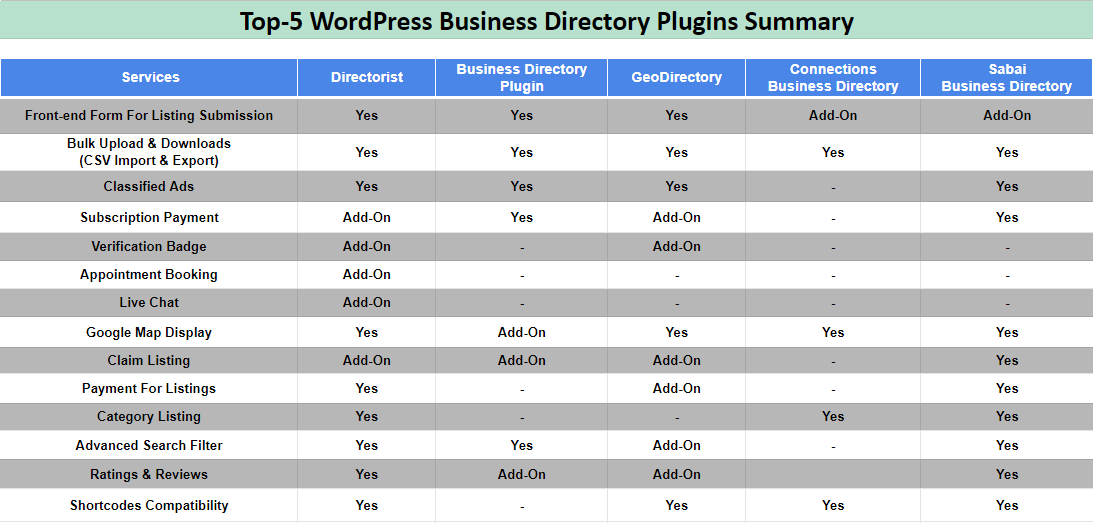
After comparing all the feature lists of the above plugins, we consider Directorist as one of the best WordPress business directory plugins in this list. Specifically, for the multi-user roles function and other extensive categories that suit every business needs. Apart from Directorist, the other 4-plugins are also excellent options to start. To gather more information on WordPress themes & directory plugins, contact us here.
Leading WordPress eCommerce Themes- Tech Opinion
Leading WordPress eCommerce Themes- Tech Opinion
Why do online businesses fail to carry out their operations in the long run? You can delineate several reasons for the collapse of an enterprise. The foremost factor that obstructs business visibility is poor website design. To promote a brand value to a large audience, you need to enhance the display of your digital storefront. It is imperative to consider the responsive WordPress themes for revamping the eCommerce site.

WordPress is the most developer-friendly and preferably used CMS on the online platform. By using a WP eCommerce theme, you can seamlessly set up your website as per the business niche. You can modify a shopping cart widget, product listing category, and price ranges. Plus, it may help you to convert website visitors into potential leads. So, here we have compiled a list of the best WordPress eCommerce themes of 2021. It might help you improve your website user experience for better business opportunities.
5-WordPress eCommerce Themes With Features & Reviews
1. Astra– A Multi-purpose theme with impressionable customizability

(Image source: Astra)
Astra is undoubtedly one of the most promising and popular WordPress themes of all time. Its highly customizable feature makes it a perfect choice for any market niche, even outside eCommerce. It operates seamlessly with several page builders such as Elementor, Visual Composer, and Gutenberg. Plus, Astra offers extensive features, layouts, and functionalities.
It has a WooCommerce integration facility and plenty of customization options. Astra grants the absolute privilege to choose a variety of demo sites as per your needs. Even with the free version, you get impressive designs, SEO integration, and impressionable fonts to get a head start.

With Astra Pro, you get various sales-friendly features. It includes an infinite scroll, an off-canvas sidebar, a dropdown cart, and a collection of add-ons. And custom widgets make your site more user-friendly. It provides a quick display or view so you can implement custom layouts on one page or sitewide. You can alter the page width and turn off the sidebar or title. Manage page layouts for your blogs, posts, headers, footers, sidebars, colors, and typography. So, it’s easy to customize the demo design without delving into code.
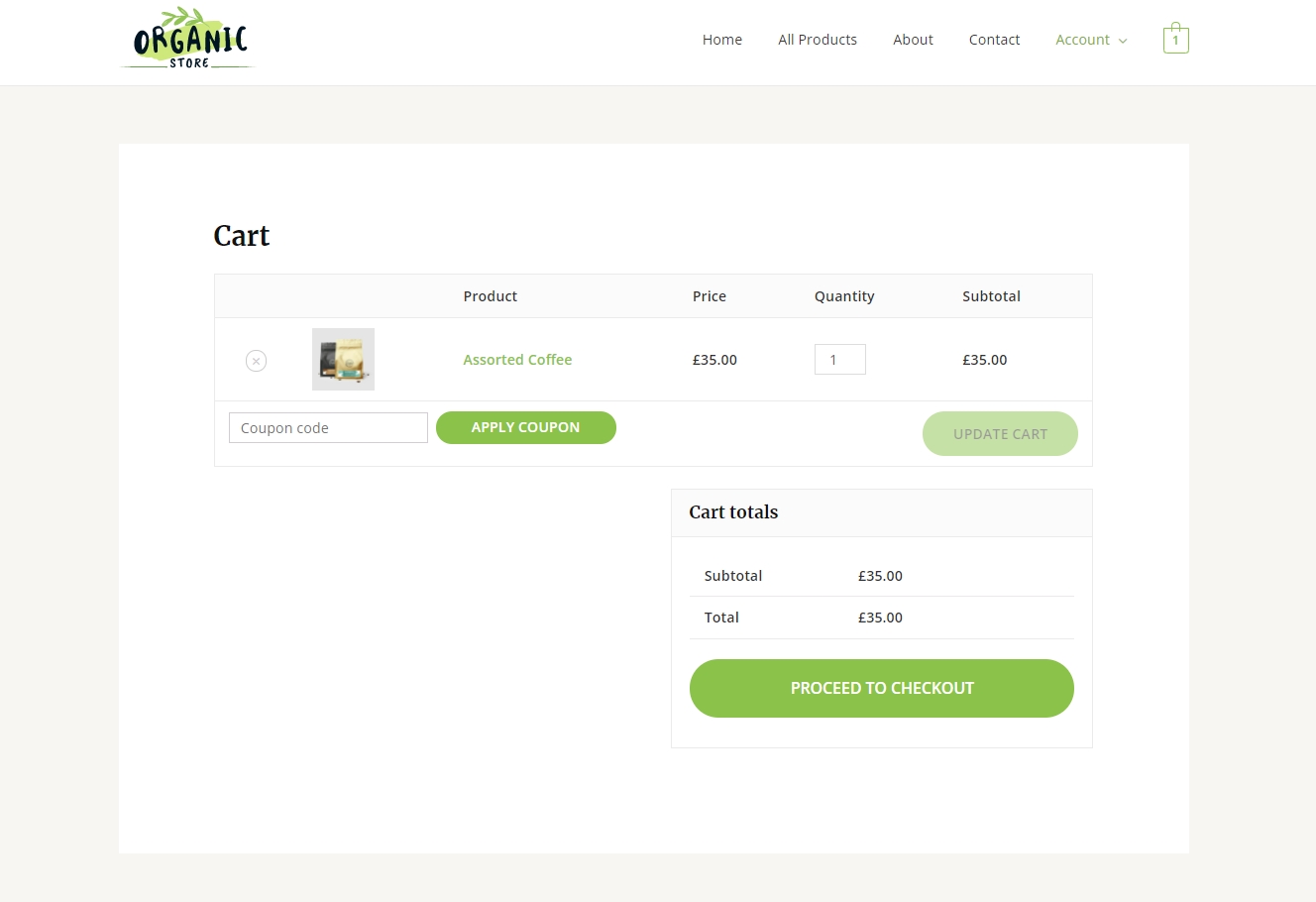
(Astra Shopping Cart Page)
It offers multiple checkout options based on your requirements. With a two-step & distraction-free checkout option, customize your cart page.
3-Paid Plans & Packages Of Astra
- The annual subscription fee for Astra Pro is $59 or a lifetime license is $249. It offers two additional bundle packages. Namely- Essential Bundle(Mini Agency Bundle) & Growth Bundle (Agency Bundle). With the Astra Pro plan, you get over 20 free starter templates. It includes one-to-one support, extensive training, unlimited website usage, and other services.
- The essential Bundle plan comes for $169 annually or $499 for a lifetime fee. It includes all the features of Astra Pro, plus access to 50+ prebuilt starter templates. You also get WP Portfolio plugins and page builder Addon for Elementor or Beaver Builder.
- The annual charge for Growth Bundle is $249 or a one-time fee of $699. The Growth Bundle bumps you up to 55+ starter templates. You also get all the previously mentioned features of the Mini Agency Bundle. It offers a WordPress Portfolio plugin and Ultimate Addons for Builder Beaver & Elementor.
It also provides Convert Pro, Schema Pro, and other beneficial plugins. An online training course by SkillJet Academy comes with this plan. It helps you to learn the vital aspects of the web design business.
Key Features & Functionalities
- Better Performance: Astra is the most lightweight theme. It follows optimized coding standards and uses default WordPress data. It uses Vanilla Javascript that counters render blocking jQuery for better performance. Hence, Astra is a fast, fully optimized theme built for speedy execution.
- Extensive Design Options: With Astra Pro, you get impressive pre-designed free templates. Therefore, it might perfectly fulfill your eCommerce requirement. You can use multiple layout options to manage the headers, footers, blogs, archives, etc.
- Typography: Typography makes your site customization more impactful and reader-friendly. It offers 700+ Google fonts. You can choose different font sizes to manage line spacing between the paragraphs.
- WooCommerce Module: WooCommerce module allows you to grid display customization for your products. You can add an Off-Canvas sidebar, Dropdown cart, or Infinite scroll to encourage customers. Plus, the Quick view option and Sales Bubble Style also boost sales.
- Pre-designed Layouts: Astra’s custom layouts help you modify your website’s headers and footers. You can customize the 404 error page, display conditions, and other areas.
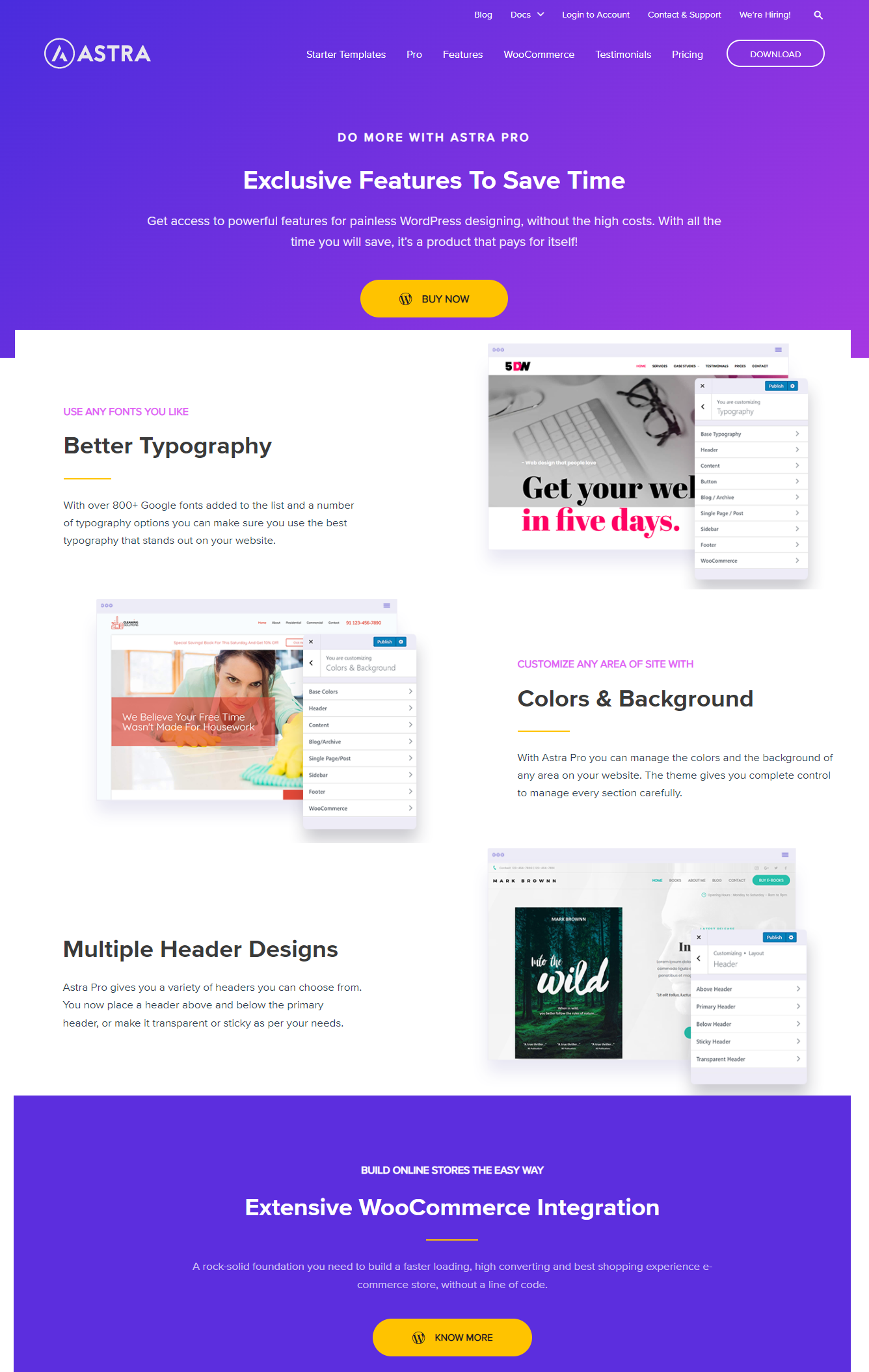
2. Flatsome– A Responsive WordPress Theme For WooCommerce Store

(Image Sources: Flatsome)
Flatsome WordPress theme focuses on simplifying your eCommerce store uses for both sides. It allows you to create and maintain all sorts of WordPress projects at your convenience. Thus, it has become one of the popular WordPress eCommerce themes on ThemeForest. It is one of the top-selling themes with thousands of positive reviews. For WooCommerce users, Flatsome is an ideal theme to consider.
Get extensive performance features like quick site changes, product listing, and impressive parallel effects. You can also enable UX creator and an integrated Wireframe Kit. With the help of Flatsome’s live page builder tool, you can comfortably build or modify your web store.
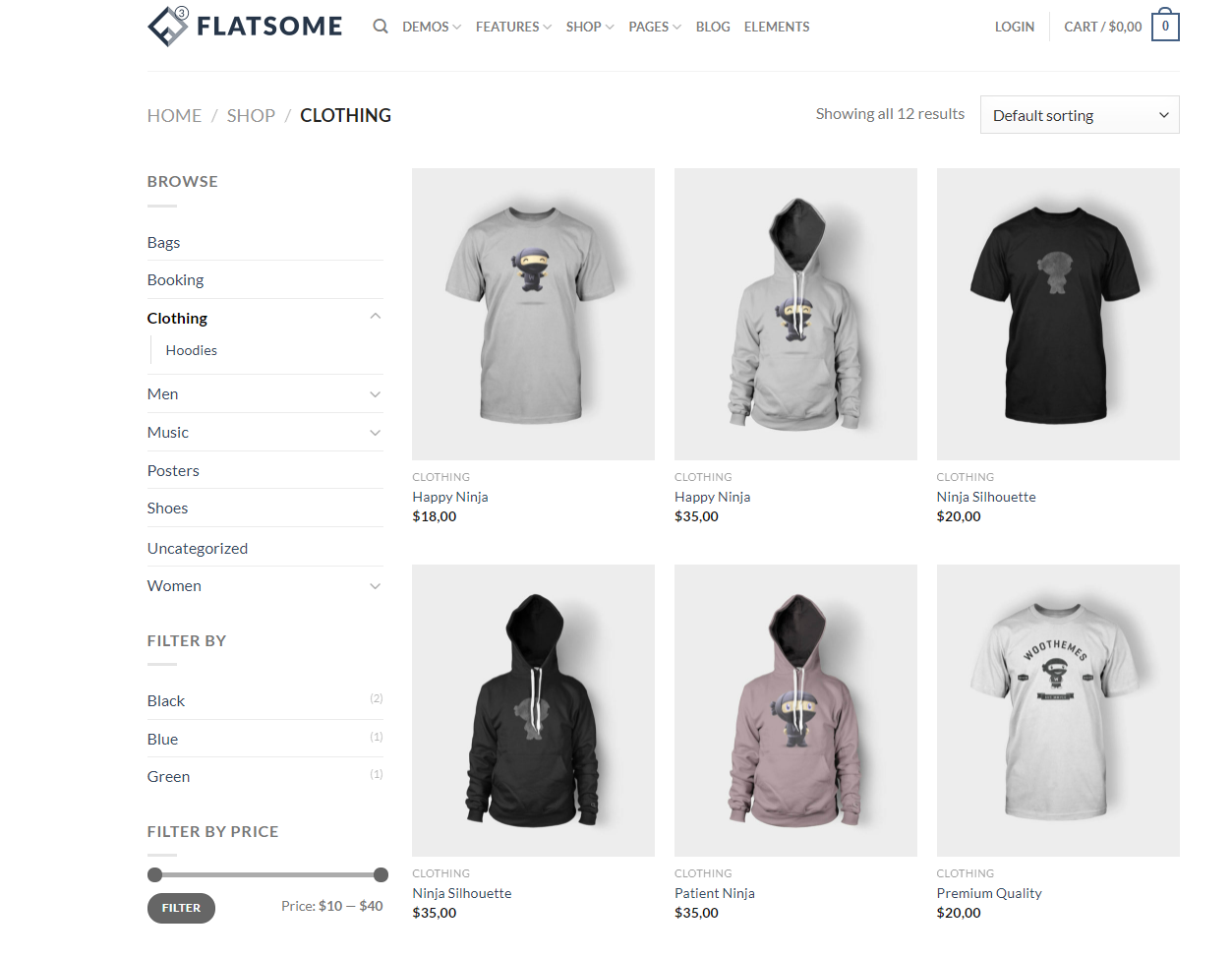
For instance, drag & drop functionality helps you organize your content as per your requirements. The Live Theme Options panel enables you to alter the layout, and background designs. The theme is compatible with the screen size of every device. You can change page color, fonts, and every single element in an awe-inspiring way.
Numerous templates are available that make your eCommerce website’s appearance mind-blowing and user-friendly. Flatsome Studio is a wide range of free digital libraries. It helps you incorporate pre-designed layouts, images, price tables, testimonials, call to action, and lots more. Use the UX Builder tool to create a responsive website without coding experience. Plus, you can incorporate additional options to the cart page. And the fast loading speed helps to enhance the user experience.
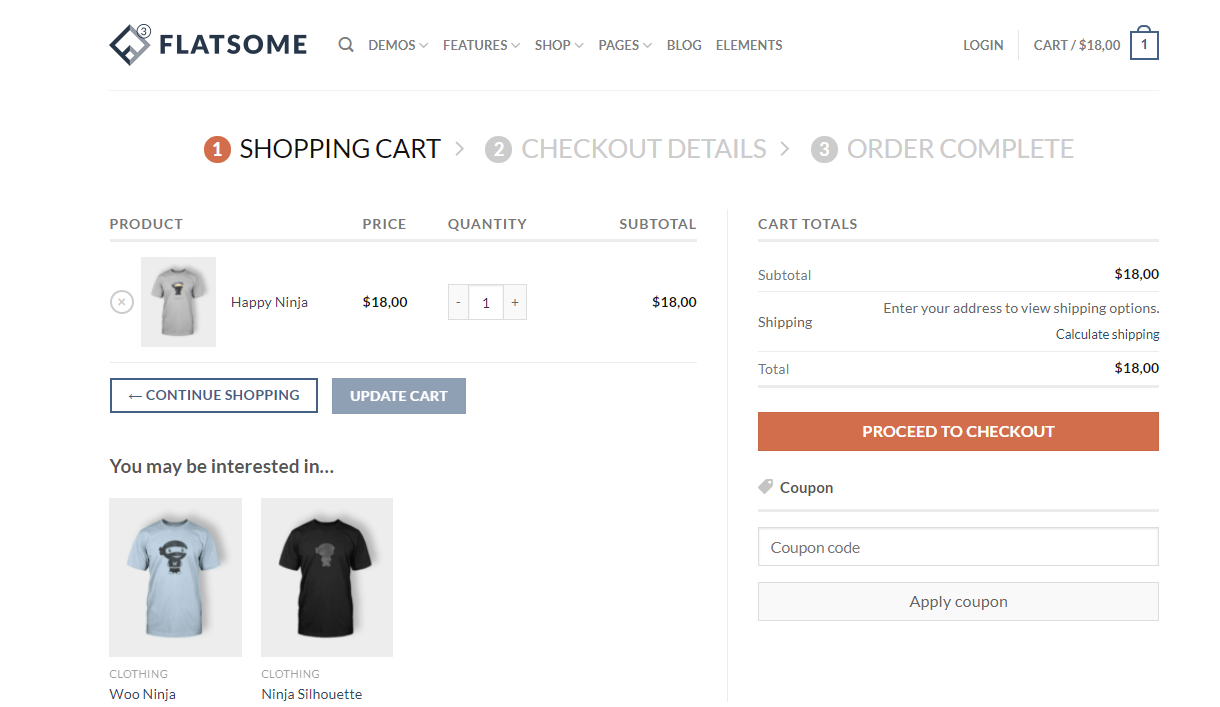
(Flatsome Shopping Cart)
You can edit the bottom shopping cart’s bottom widget for a distraction-free approach.
Paid Plans & packages Of Flatsome
- For one single site on ThemeForest, the monthly license fee is $59. If you need to extend your license or access multiple store theme customizations, the cost is $2,950.
- The cost for 12 months of support to extension is $17.63.
Key Features & Functionalities
- Front-End Page: With Live Page builder, you can customize your page as per your imagination.
- Live Theme Options: Create banners, sliders, and responsive layouts using Live Theme Options.
- Speed Optimization: Angular-based UX Builder makes your eCommerce page loading fast and fluid.
- Flatsome Studio: Flatsome Studio offers varieties of theme designs with WooCommerce integration features. It mainly focuses on intuitive user experience.
- Latest Updates: Flatsome keeps you up to date by following the latest updates on WooCommerce and WordPress.
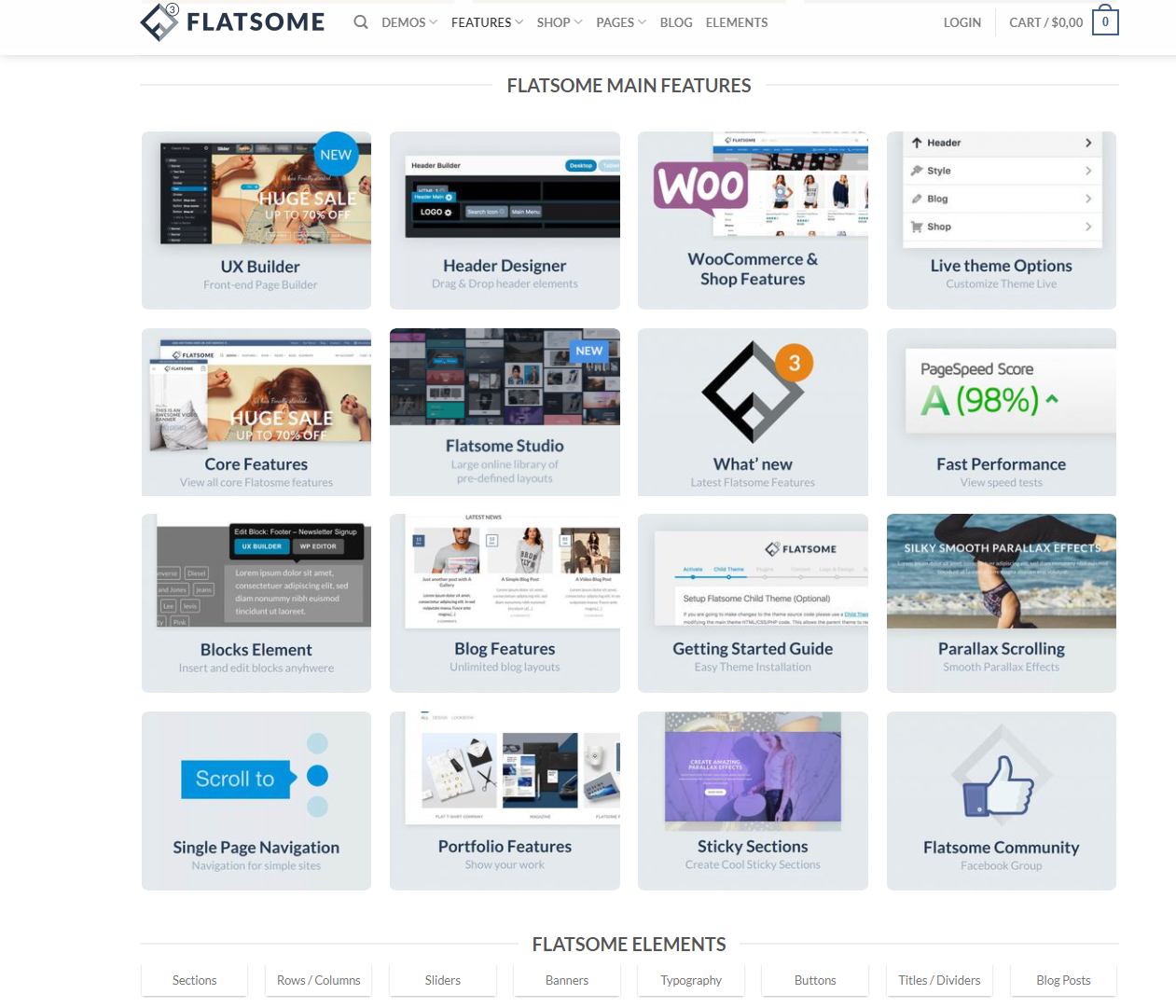
3. Porto– Best For Niche eCommerce Customization
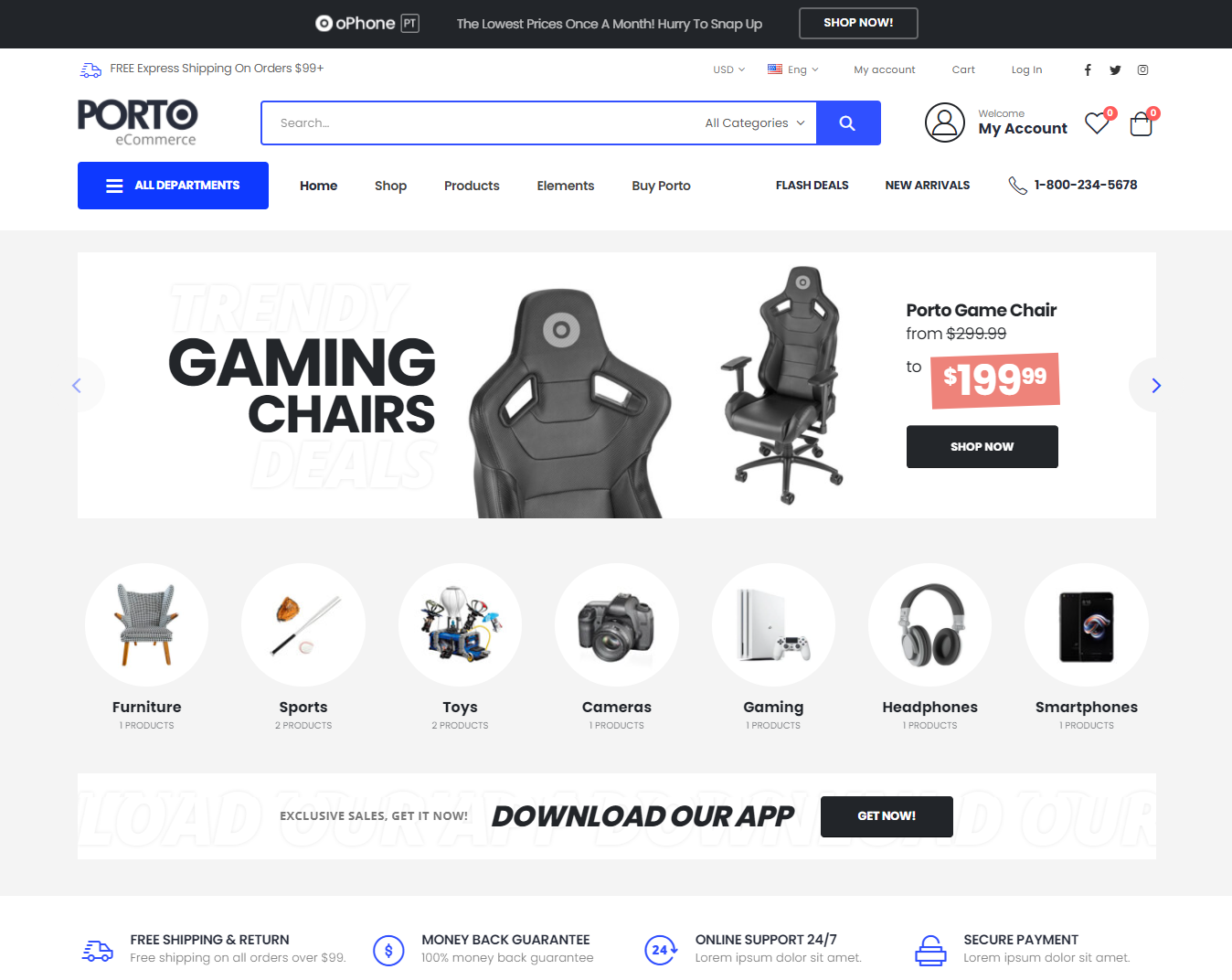
(Image Sources: Porto)
The next best-selling eCommerce-specific theme is Porto. It has 30 different layouts to configure your web store. It has classified all the variations into niches for better website customization. So, customize your site with ready-made demo versions that reflect your products and services. It is suitable for all business categories that deal with gadgets, garments, auto parts, cycles, shoes, and many more.
You can have complete control over its features. To illustrate, it offers you varieties of pre-made headers. Additionally, you can modify the sliders to highlight your best-selling products. Add product categories, parallax scrolling, mega menu, and quick display with lightbox. Porto’s lightweight layouts offer fast loading speed and a responsive website to users.
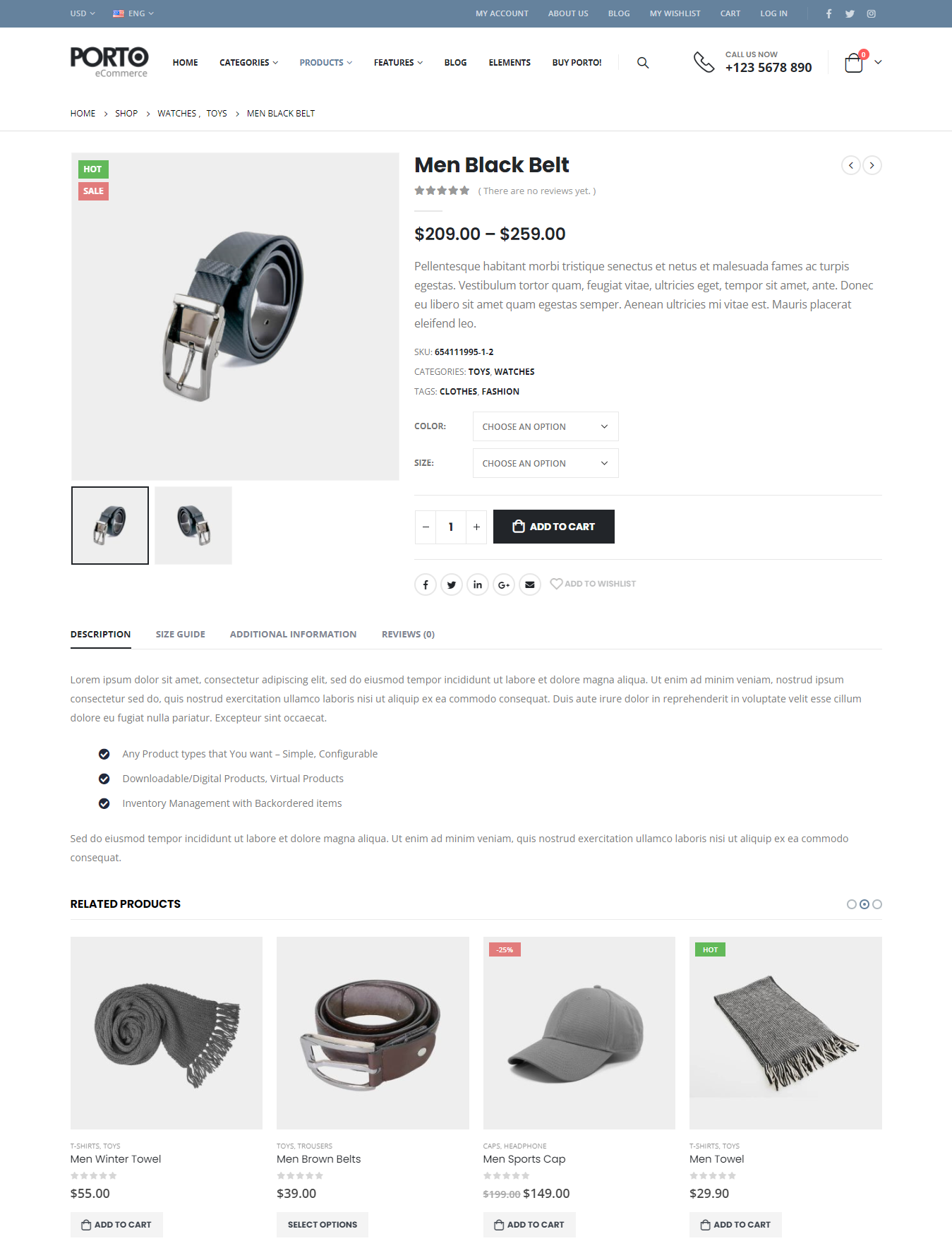
Porto is still a more user-friendly and SEO-optimized theme. Thus, it helps you increase search ranking. It has exclusive speed optimization tools that minimize your page load time. Porto also supports high-quality images and is accessible from every portable device. As a result, it maximizes user visibility and boosts conversions.
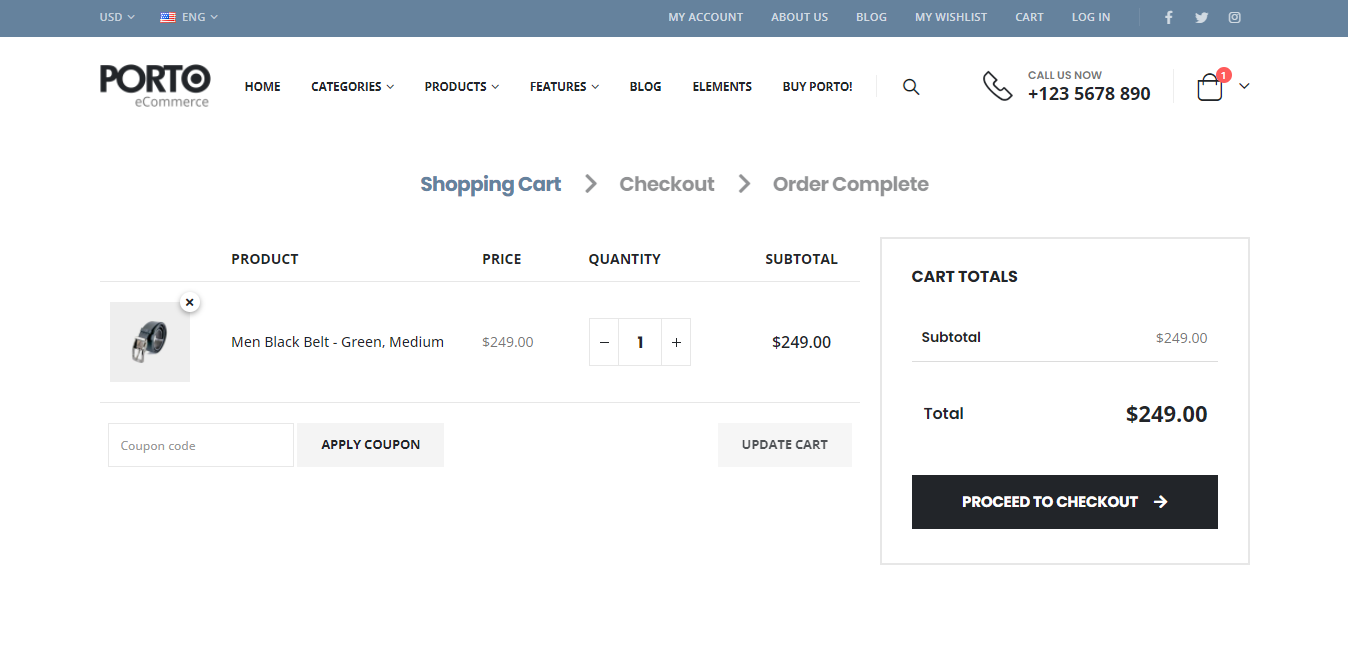
(Porto Shopping Cart Page)
Porto has a simple shopping cart page view that makes your purchasing distraction-free.
Paid Plans & Packages Of Porto
- The price range of Porto is very competitive. The monthly license fee for the Enterprise package is $59, and the Standard plan comes for $17 monthly.
- Whereas the Basic plan for the Porto theme is $9 monthly, and the Professional package costs you $29 per month.
- However, this package includes two premium plugins- WP Bakery Page Builder and Slider Revolution.
Key Features & Functionalities
- Ready-made demos: WordPress Porto Theme offers varieties of ready-made demo versions. These demos cover a wide range of layouts and styles for every business type.
- Visual composer: The Drag & Drop functionality helps you customize your page layout. The Visual composer Addons pack is available with Porto. So, you can also integrate a video player, pricing table, sliders, and other elements.
- SEO-friendly & Speed Optimizer: Porto’s SEO-friendly tool helps you maximize your search results. The lightweight layout makes your webpage loading speed fast. Plus, it also increases the usability for the user.
- Low-level hosting server support: Some demo versions may not provide low-level hosting. But Porto’s demo versions support low-level hosting servers for eCommerce.
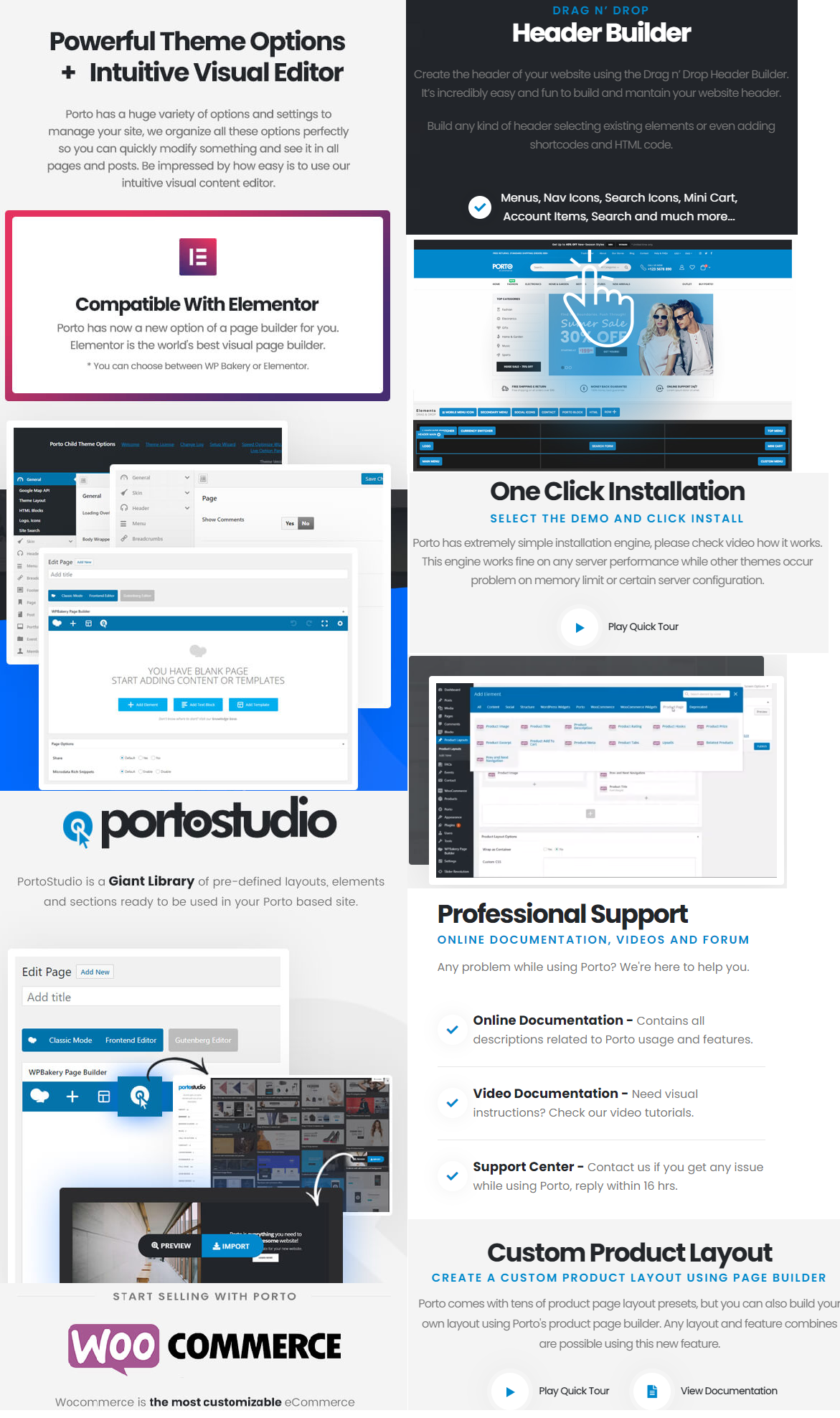
4. Shopkeeper– An eCommerce Store With Blog Layouts

(Image Sources: Shopkeeper)
Shopkeeper is a well-designed eCommerce theme that focuses on increasing conversions and sales. With comprehensive product pages for reviews and long-form content, you can grab customer attention. Additionally, it offers an on-screen, off-screen sidebar, and product listing category. It provides digital downloads, and affiliate links, and allows for variables. You can set items on sales or out of stock.
Shopkeeper has pre-designed layouts for individual product pages and homepage. Similar to other WordPress themes, there is no need for coding to create or modify your online store. The Auto-Updates facility looks after your site maintenance. The drag & drop page building gives you space to design your eCommerce site as per your needs.
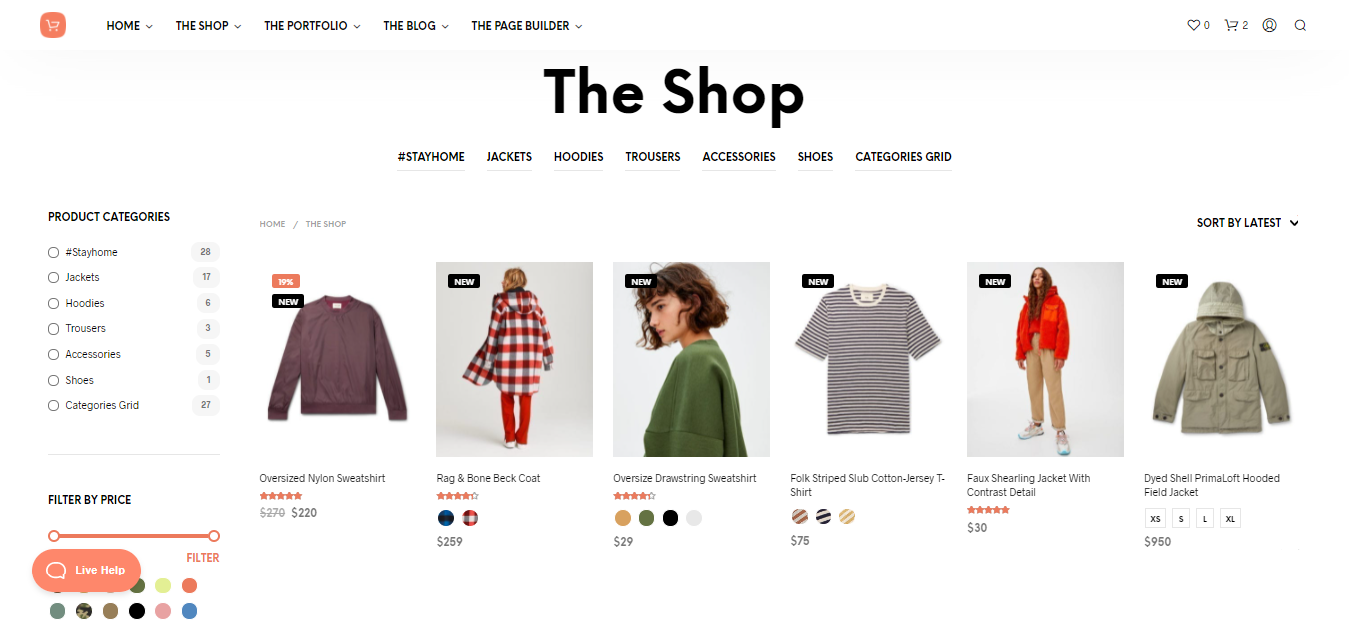
As it’s a WP eCommerce theme, you can customize your site with contact information and bios. Shopkeeper has three different blog layouts and catalog modes. So, it engages customers to view your product or read blogs. With fast-loading speed, this WP theme gives you a chance to high-quality shop.
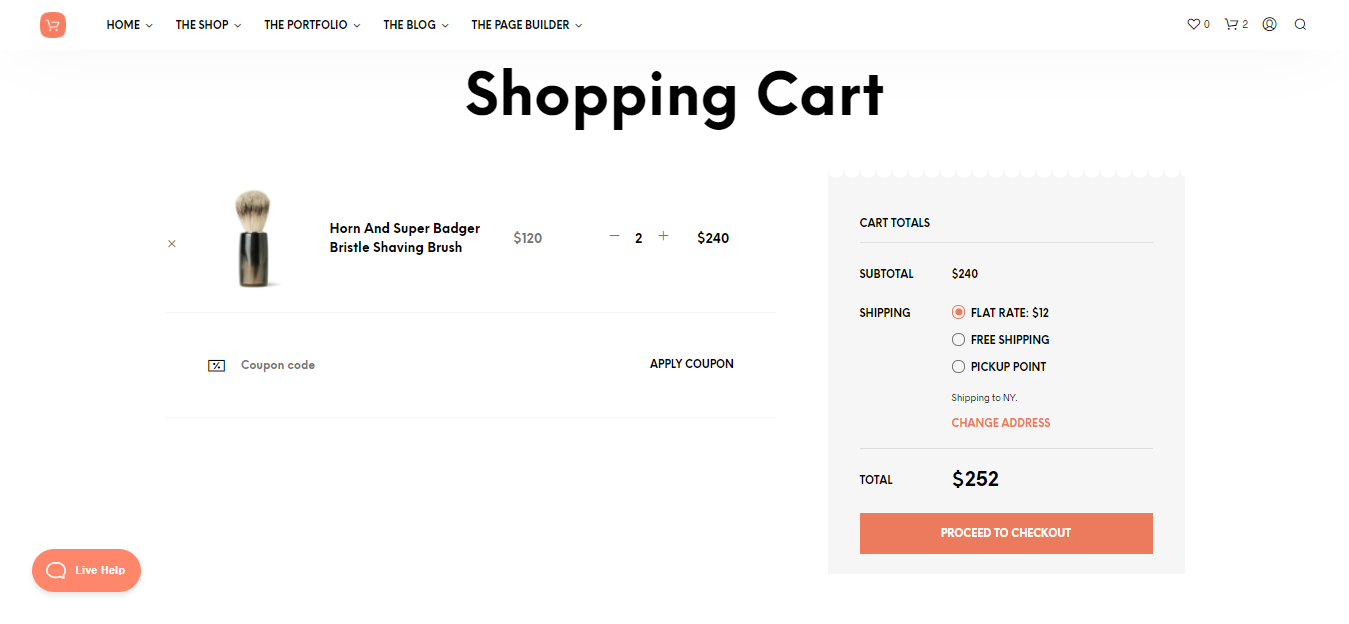
(Shopkeeper Shopping Cart Page)
The shopping cart page of the Shopkeeper is straightforward. Just add your product and proceed to checkout to complete the transaction.
Paid Plans & Packages Of Shopkeeper
- The Shopkeeper theme costs you only $59. It includes six months of support and all future updates.
- You can pay a $17.63 additional charge for 12 months of extended support.
Key Features & Functionalities
- Beginner-friendly Theme: It is the most beginner-friendly WP theme for your eCommerce. The shopkeeper makes your web store more responsive and eye-popping.
- Blog Layout page: Shopkeeper has 3-different blogging layouts. So, you can organize your product page content in a better way.
- Responsive Designs: Responsive website design makes your eCommerce website more user-friendly. Design the layout according to the screen size, irrespective of the mobile device. It will reduce the bounce rate, increase conversion, and search engine rankings.
- Product Portfolio Page: The portfolio is a unique functionality. People can check the images or products from your specified product categories.

5. Divi– Create Modern WordPress Website With A Visual Creative Tool

(Image Sources: Divi)
Divi is an ultimate combined package of visual page builder and flagship theme powered by Elegant Themes. Like Astra, Divi has gained the same popularity in the eCommerce website theme market. So, it allows you to customize your WordPress website effortlessly. You can choose the layout from the template pages, altering the colors, fonts, etc.
Altering the page elements on the homepage is easier with the handy sliders. Thus, you don’t have to modify the CSS by yourself. The best advantage of choosing Divi is that it lets you create any model of design you fancy.
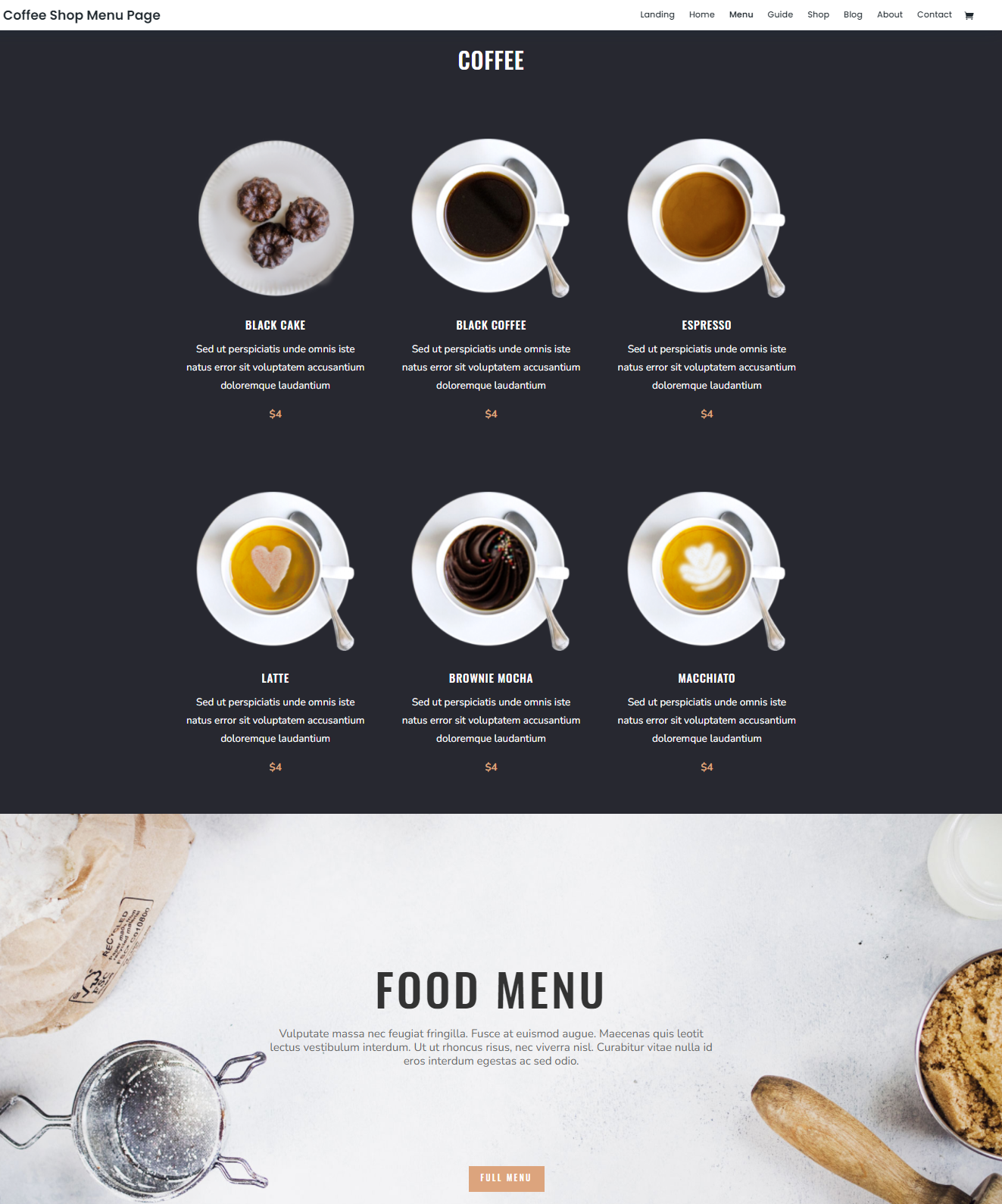
By using Visual Page Builder, you get access to 40+ slider templates, vectors, CTAs, galleries, and other elements. The WYSIWYG tool helps you customize your site’s interface. Plus, it enhances the overall aesthetics of the website.
With a drag & drop page builder facility, you can easily combine and arrange content on your page. It comes with Woocommerce integrations that soothe your tasks on the product listing, checkouts, and many more. So, Divi is more like an art program than a website-building tool.
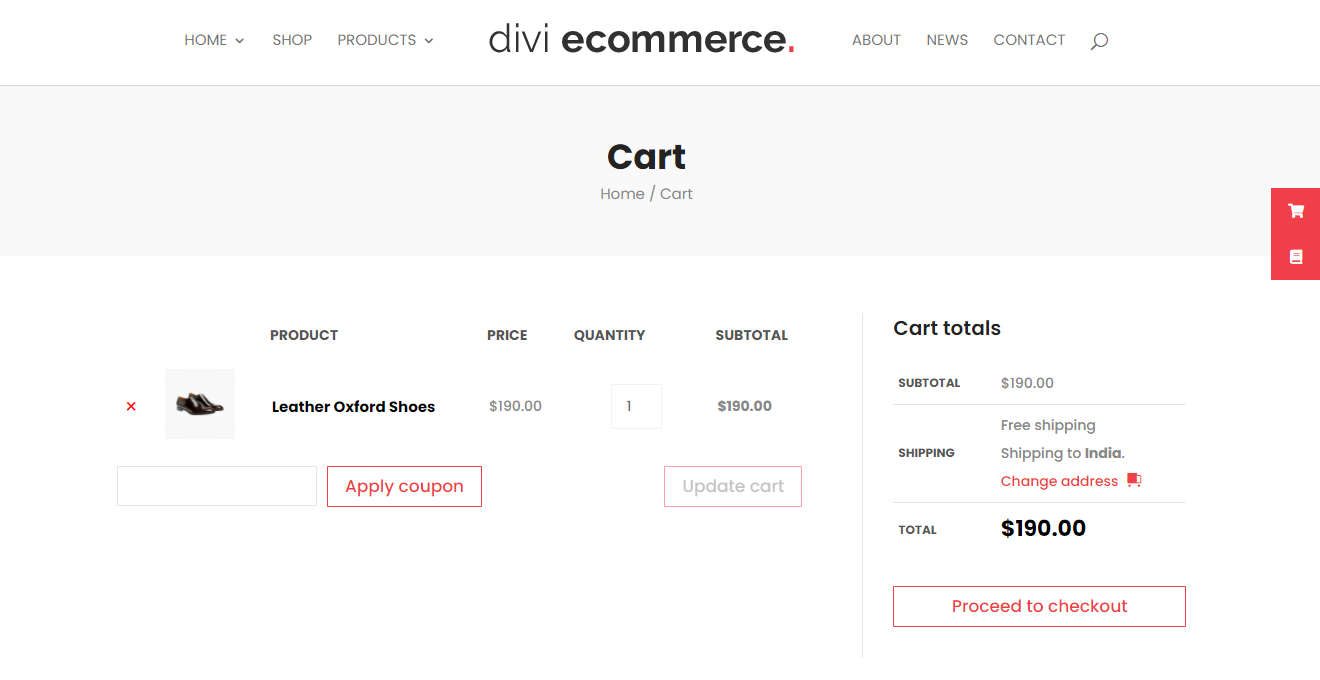
(Divi eCommerce Shopping Cart Page)
Likewise, Divi’s cart page has a minimal design and a simple checkout option.
Paid Plans & Packages Of Divi
- The yearly membership cost of Elegant Themes is $89. It includes Divi packages, 3 WordPress plugins, and 86 WordPress themes.
- The lifetime access or license fee of Divi is $249.
Key Features & Functionalities
- Visual Page Builder: With this feature, easily design your WordPress site from scratch. It is a complete design framework that allows you to build your page on the website’s front-end.
- Extensive Divi Module Library: You can save and edit layouts in the Divi Library for further use.
- API Integration: Divi’s Email Optin and Contact form modules allow you to integrate a 3-party spam protection service.
- Pre-made Layouts & plugins: You can load a pre-made layout to your existing ones. You can replace the existing content that suits your brand. Monarch social media plugin & Bloom email option plugin are the two salient features of Elegant Themes. Bloom email option plugin helps you convert users into email subscribers. Monarch social media plugin connects you with your visitors through all social giants such as Facebook, Twitter, etc.
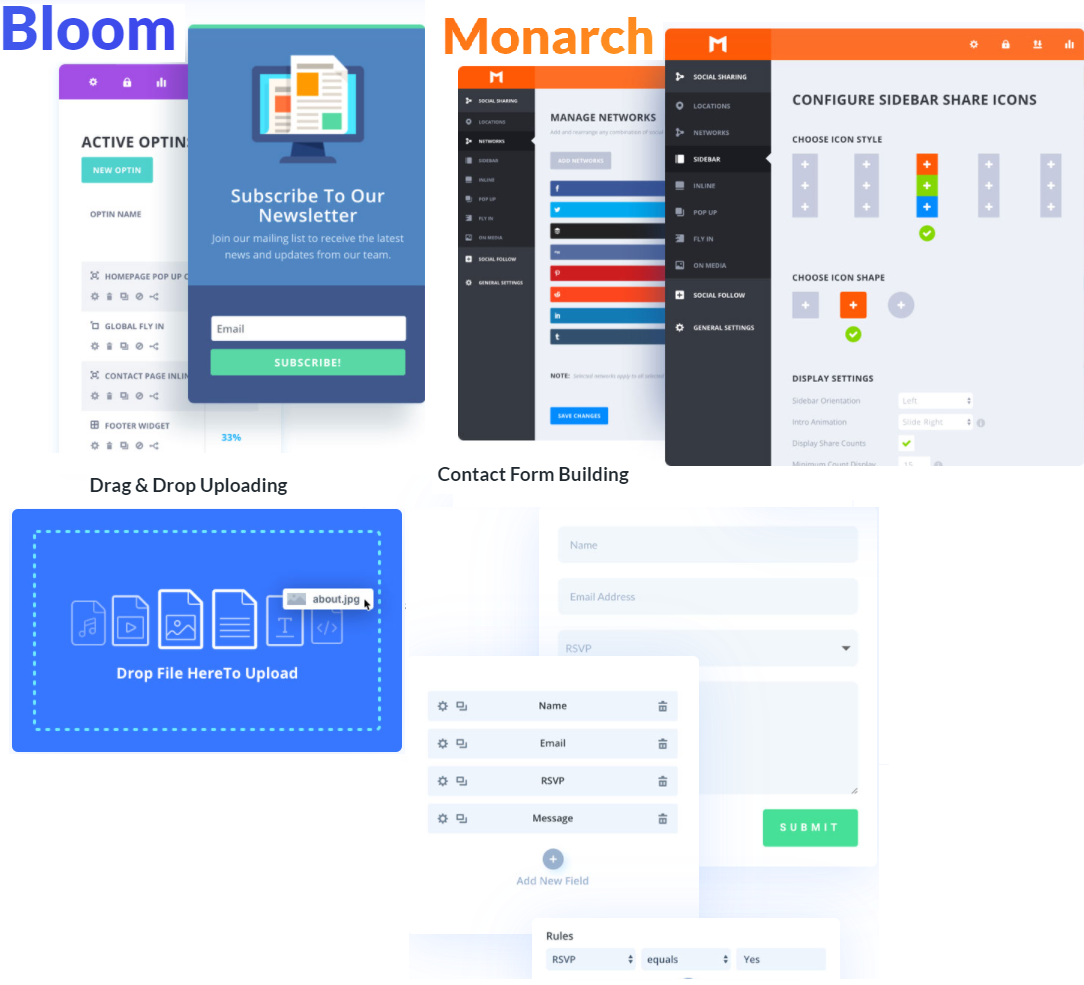
Indispensable Factors Need To Consider Before Choosing WordPress eCommerce Themes
The eCommerce theme has become the essential tool for organizing your online store sensibly. Every website template has a distinct feature and functionality. Hence, for delivering the best brand experience to your customers, rely on WP themes. You may need to consider a few factors before choosing suitable WordPress eCommerce themes.
- Loading Speed
As per the online marketing dive, people leave a website for its slow loading speed. The loading speed of a page contributes a lot to user experience and search engine rankings. So, you need to improve your product display images, widgets, and other elements.
- Security Features
When it comes to eCommerce website building, security is one of the crucial factors. Many WordPress ready-made themes come with extra security features. A secure WordPress theme makes your eCommerce store credible and trustworthy.
- Device Compatibility
A mobile-friendliness website triggers the UX and increases your organic reach. Before selecting WordPress eCommerce themes, always check the device compatibility. Google also prioritizes mobile-friendliness as a part of the ranking criteria.
Bottom Line
WP eCommerce theme building depends on several factors that include functionalities, designs, security, hosting plans, and lots more. Fortunately, creating an eCommerce theme on the WordPress platform is straightforward. You may not need any web development experience to revamp a website.
This platform offers you numerous tools accessibility with user-friendliness for creating a website. You can know more about how to start an eCommerce store in 3-simple steps based on your niche. If you need to grasp more information regarding eCommerce, hit the comment box below or contact us.
How To Integrate Suitable WooCommerce Payment Gateways For WordPress?
How To Integrate Suitable WooCommerce Payment Gateways For WordPress?
In the world of digitization, thousands of e-commerce business platforms are rapidly emerging. You might have negotiated with the inconsistent payment gateways on the e-commerce stores. Thus, payment integration is an integral part of online businesses. So, the WooCommerce payment gateway makes business transactions easier for both retailers and consumers.

WooCommerce is a powerful tool that allows you to use external API to store or process payment information. It offers secure payment integration, including order tracking and tax management. WooCommerce payment processor makes online selling through WordPress much easier.
Thus, selecting a suitable WooCommerce payment gateway helps you intensify your sales drive. It gives faster payment collection and gives you reliability. So, here’s why you should integrate more gateways and how to choose the acceptable ones.
Necessity Of Setting Up Different Payment Gateways For WooCommerce
The payment gateways offer payment collection services against your salable products online. You may need to select at least one method, even if it’s a manual gateway like Direct Bank Transfer. So, let’s scrutinize why various gateways are convenient for payment transactions.
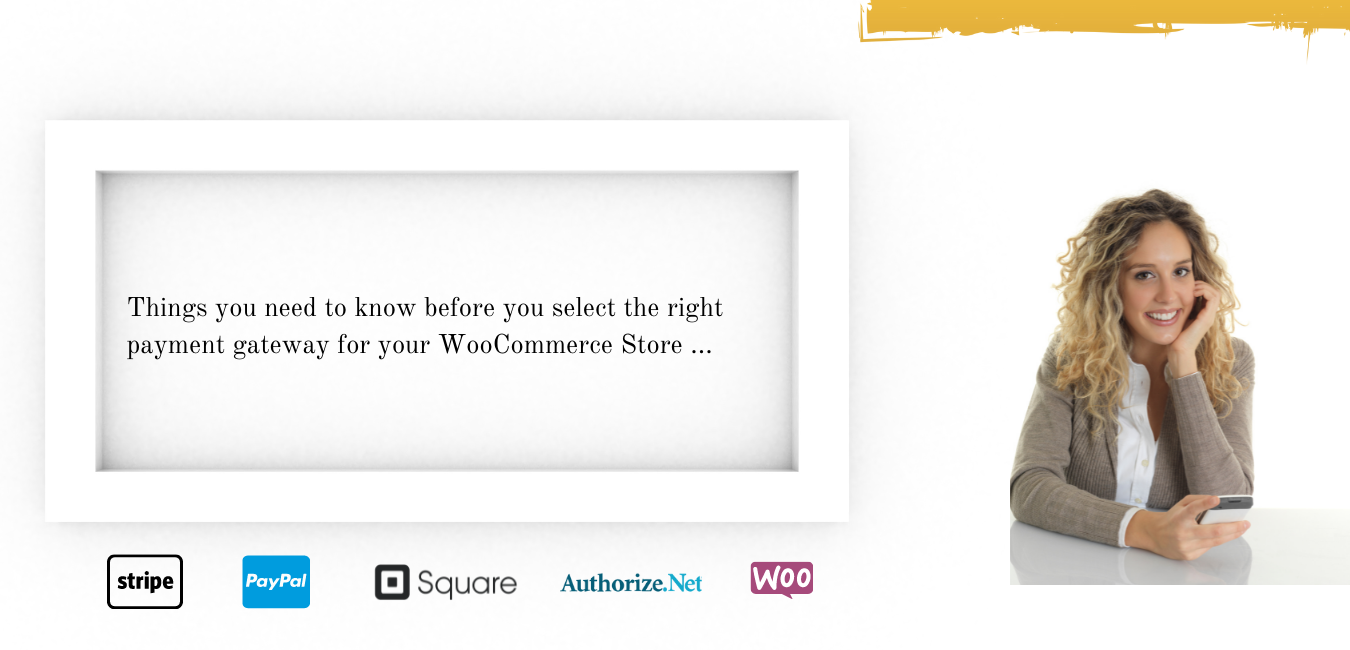
- Offering more than one payment gateway option amplifies the possibility of error-free checkout. It helps you to complete the transaction method successfully.
- You can get the backup in case of any server issue or technical problem. In times of emergency, you can switch to an alternate one.
- Many gateways offer standard card fields and also accept the use of “express” payment options. A few notable names are Google Pay, Apple Pay, and in-built WooCommerce payments.
Adding a different payment gateway might give a preferable solution to accept payments. Customers can pay as per their choices and preferences. Whereas selecting too many gateways might create your site complicated. Depending on the business needs and requirements, integrate the gateways.
How To Pick The Ideal WooCommerce Payment Gateway
Several third-party service providers run online payment gateways globally. It connects you to accept digital payments on your e-commerce site. Now, if you select an inappropriate gateway, you might lose potential consumers. It may even turn down your business growth curve. These are a few crucial aspects you might consider while setting up the gateways.
-
Transaction Charges
The transaction fees for ongoing and startup are different for every payment gateway. It may depend on the geographical location, customer card type, and the choice of your gateway. So, at the time of purchasing the gateway, you need to bear extra costs. It includes maintenance fees, monthly or yearly subscription fees, and bank withdrawal charges.
-
Availability In Your Location
Next, you need to check if the payment option is available in your target location and consumers’ area or not. For instance, if your customer base is from the UK, choose the widely accepted gateway. It makes the transaction process unchallenging.
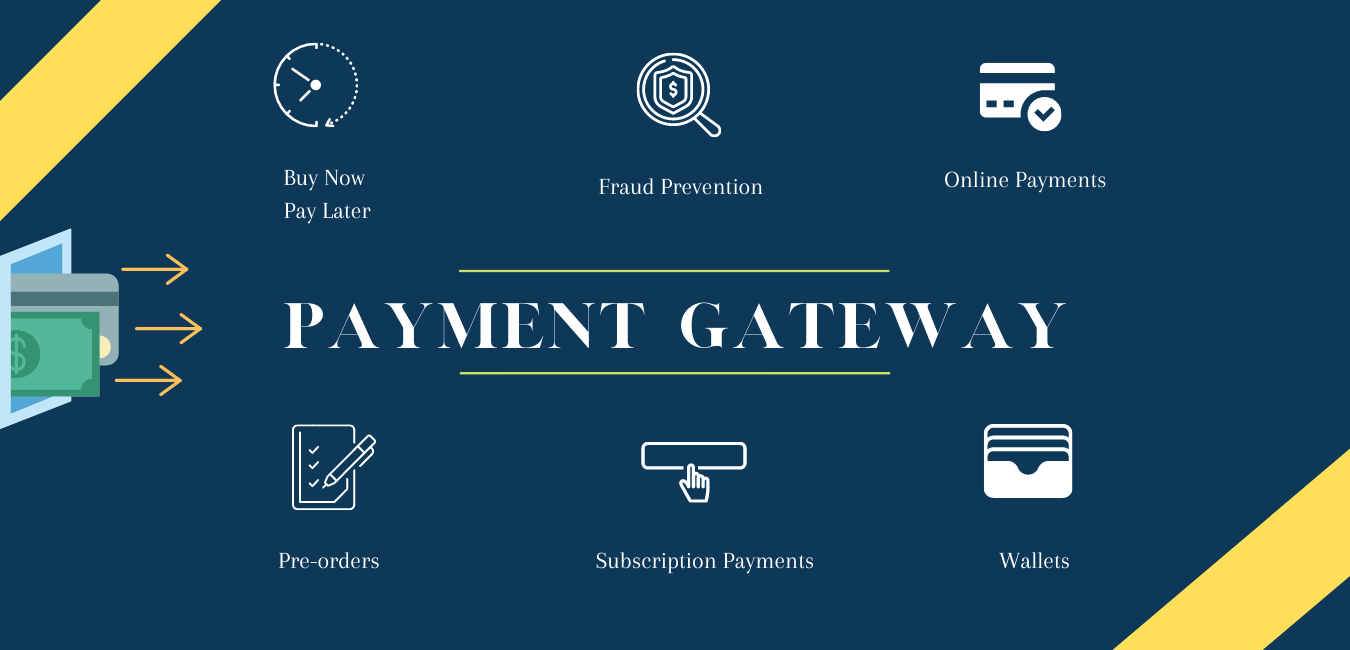
-
Security
Security is a key to strengthening the relationship between a customer and an online seller. Now, there are two common ways of transactions that include- Redirect & Direct.
In the first one, the consumer needs to process payment at the gateway site. Then it redirects back to your page for completing the checkout. In the second case, a buyer can directly pay the amount. And it requires an SSL Certificate for PCI Compliance.
As a responsible online merchant, it’s your responsibility to safeguard consumer information. From email id, billing details to the shipping address, and other transaction data, prioritize security. So, SSL encrypts the communication between the buyer and the online seller. It also includes the payment processor and your e-commerce site.
-
Recurring Payments
Many online business sites sell subscription-oriented products or membership plans. Select the gateway that supports automatic or manual recurring payments for subscription-based extensions.
Leading Payment Gateways Available In WooCommerce
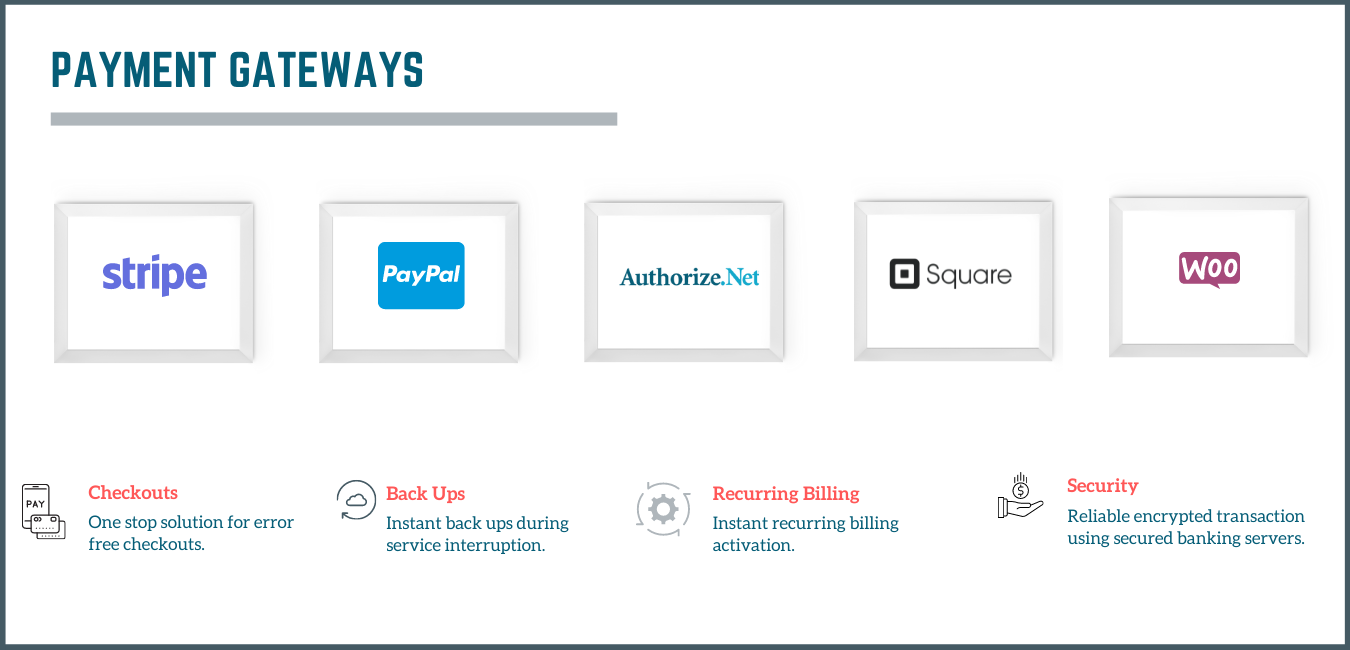
1. PayPal
PayPal is one of the pioneers in this online payment industry, with 200 million global users. It offers various services for your online business, personal, and e-commerce transactions.
WooCommerce has a built-in option that you can use as the default gateway on your e-commerce store. This international gateway gives your customer a preferable mode of the online transaction. So, you need to create a PayPal business account for accessing the standard PayPal. The on-site checkout facility is not available on the PayPal website.
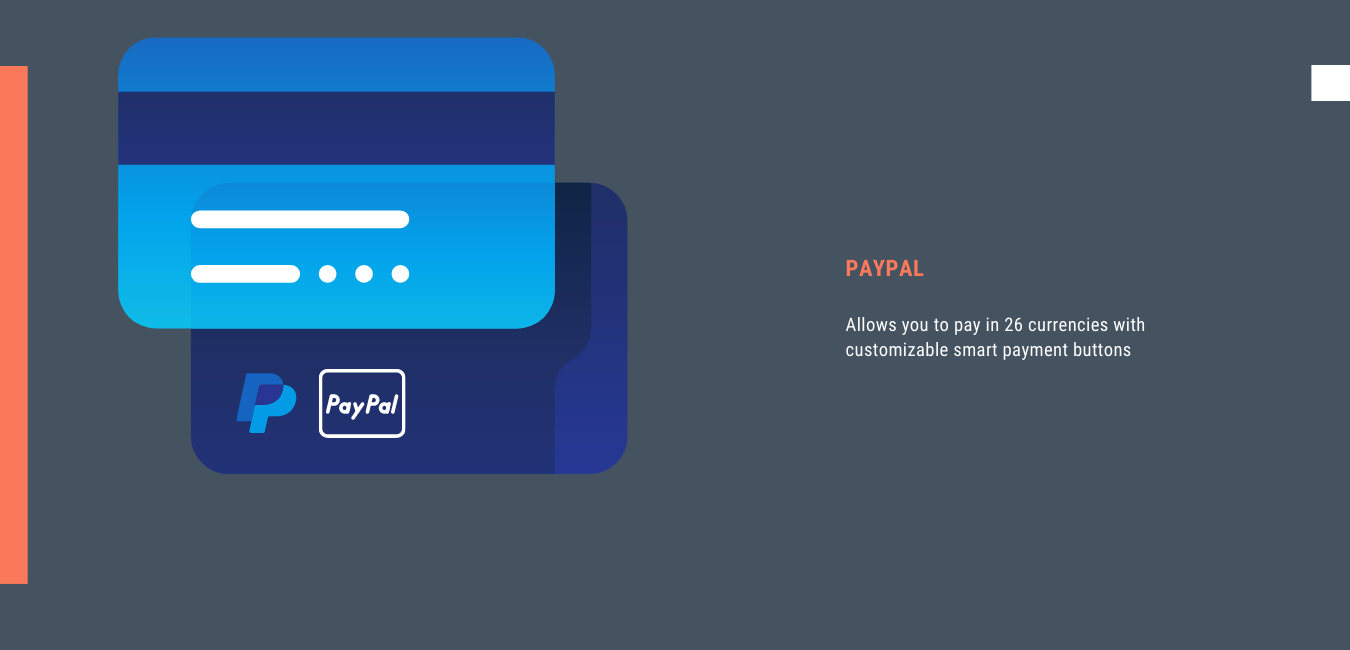
PayPal charges the amount depending on the sales volume and the account type. You can accept both debit and credit cards, including transfers from other platforms.
You can integrate other payment gateways with PayPal. It deducts 2.9% of the entire charge for each transaction. An extra charge of $0.30 is applicable for domestic purchases within the US.
2. Stripe
Stripe is a competent payment gateway for many heavy-hitters companies in the US. It also comes with built-in assistance to settle as a default payment gateway.
It accepts all the major debit and credit cards with a mobile payment facility. Specifically appropriate for the customer using Google Pay, Alipay, and Apple Pay. The base processing fee is 2.9% plus $0.30 per transaction. Stripe supports recurring billing, and there are no add-on charges involved in it.
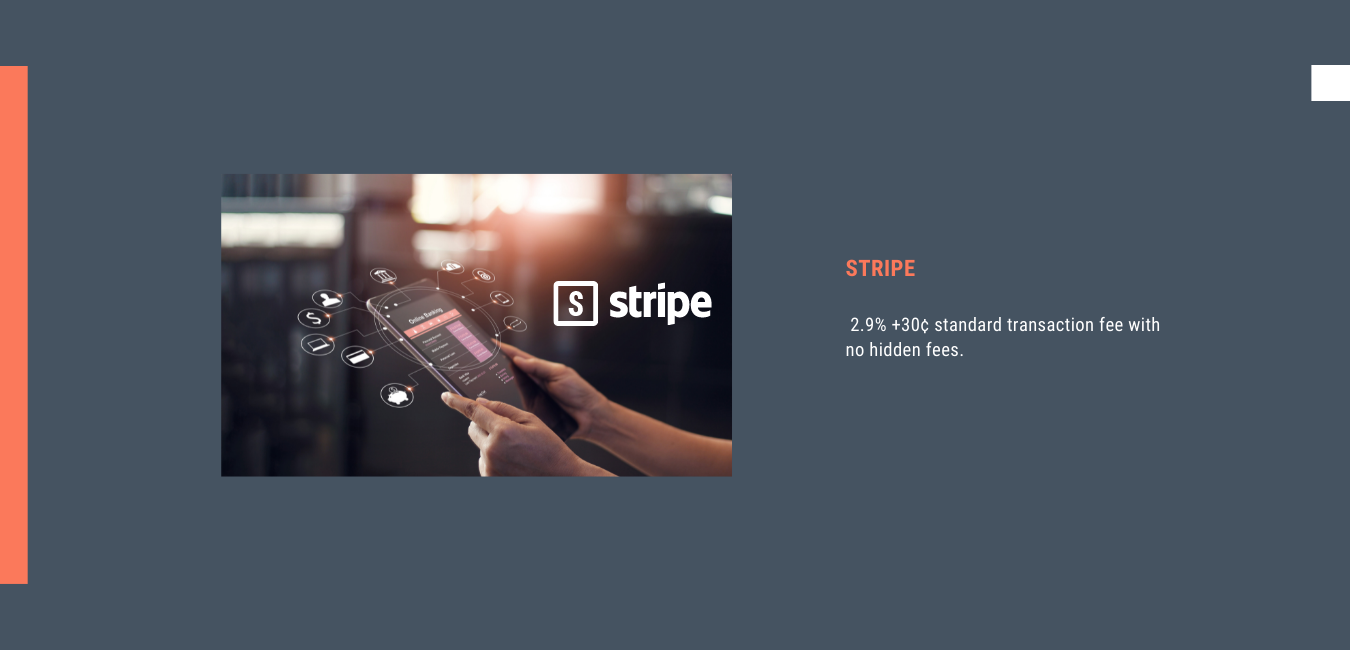
Stripe has a consumer base in more than 40 plus countries and accepts 135+ currencies. It has made a remarkable position with PayPal for WooCommerce payment integration.
Stripe may help in simple payment integration for online orders and donations. It is compatible with both desktop and mobile devices. So, go through the WP forms to enjoy the benefits of Stripe.
3. Authorize.Net
Authorize.Net is one of the enterprise-friendly and worldwide popular payment gateways. Specifically, it is the best-known gateway for merchants in the US, UK, Canada, and Australia.
It offers an uninterrupted checkout process to all credit cardholders. A consumer stays on the page till the payment is going in the background of the Authorize.Net site.

Authorize.Net charges $25 monthly besides the general base fee of 2.9% plus $0.30 for each transaction. It provides a recurring payment facility with an anti-fraud system. Thus, it makes the transaction process secure. It is the best convenient WooCommerce payment extension for minimalistic requirements.
4. Square
Square is an exceptional WooCommerce mobile payment extension. However, it offers a payment facility through your website. It is advantageous for stores with a physical location and delivery options.
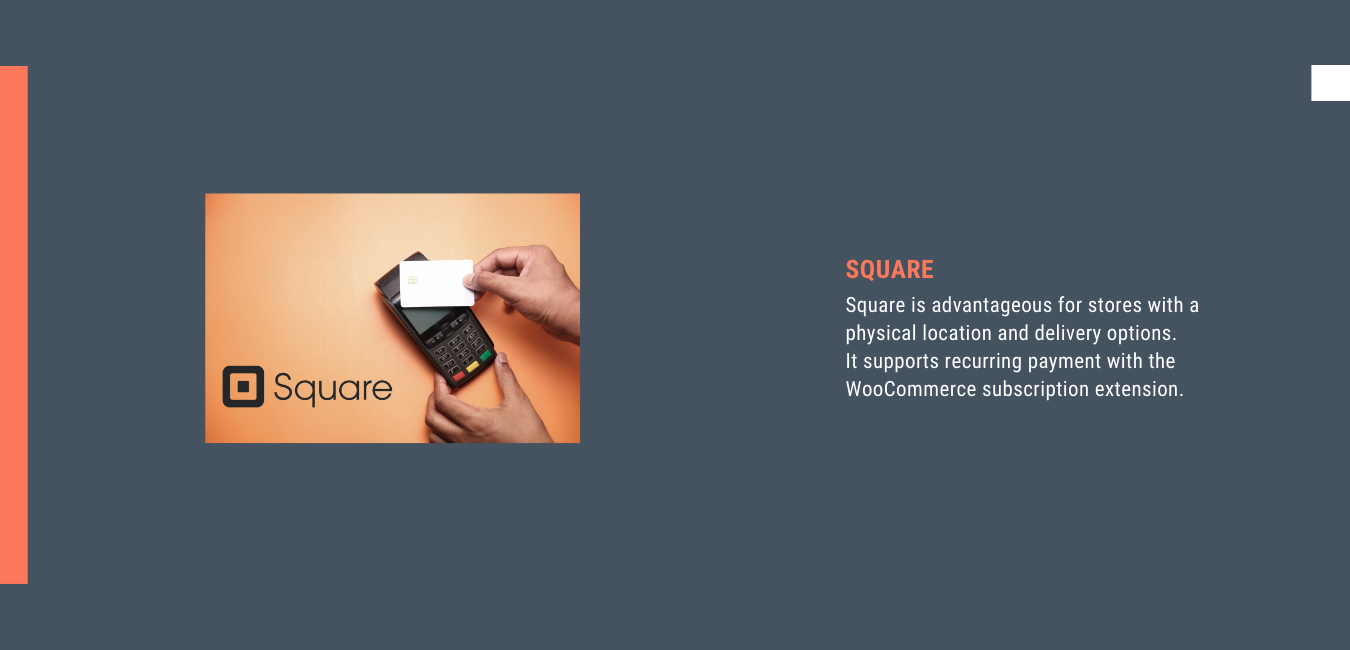
The gateway is accessible in the US, Canada, Japan, the United Kingdom, and Australia. It has a fixed transaction rate of 2.9% plus $0.30 like other gateways. It also supports recurring payments with your WooCommerce subscription extension. All you need is a Square account to integrate the payment gateway to add more products. Then, you can start processing your sales and earn your revenue.
5. WooCommerce Payment
WooCommerce has its free payment gateway. With a standard 2.9% plus $0.30 charge per transaction for US customers. Secondly, it doesn’t need any monthly or setup fee. Only a 1% add-on charge is applicable for the cards not enlisted with the registered country list.
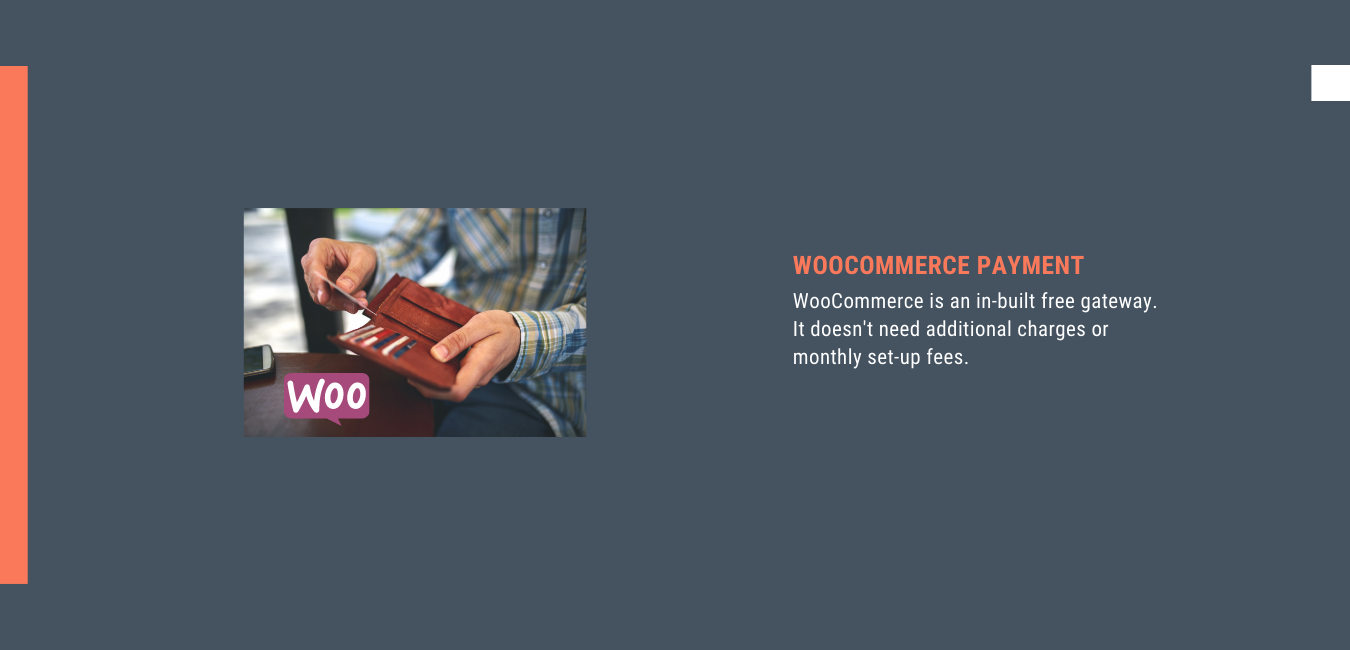
Endnotes
The purpose of setting several payment gateways is to provide effortless transactions. Payment gateways offer a better user experience to your customers in online purchases. People consider their preferred payment mode for doing online transactions. If you fail to provide suitable options, users might switch to other websites.
Selecting the best payment gateway for your WooCommerce store is critical. Hence, Capsquery has highlighted the essential pointers to integrate the convenient payment gateways. It might enhance online business visibility and conversion rates. If you need to know more about the workarounds of online business, learn how to start an eCommerce store. For any technical assistance and expert advice, feel free to shoot a mail.
How To Enhance UX Design For Better Conversion Rate
Technological advancements have intensified the means of digital marketing approaches. Healthy conversion rates determine the success of the business growth on the internet. Be it is an e-commerce or a portfolio site, UX elevates the traffic that might boost the conversion rates.
The user experience is a process to enhance user satisfaction. You can achieve that by excelling in the site’s efficiency, usability, and accessibility. Users’ online engagement depends on the website design. Thus, it is one of the triggering elements that help in improving conversions.

A better UX design is much more than eye-catching layouts and intuitive user flow. It helps you understand the needs of your consumers and the responses you are getting from them. So, user interaction increases the chances of conversions and lowers the bounce rates. Here are 7-strategic ways to improve your UX for converting visitors into leads, buyers, and brand promoters. A website with a great user experience escalates the conversion rate. It might keep your business name ahead in this online marketing competition.
1. Place A Call To Action Button For Quick Response
CTA- Call To Action is a convincing sales & marketing technique. It influences consumers to take specific action to turn a visitor into a positive lead or buyer. So, creating a lucrative and clear CTA button can help you ameliorate the UX of any internet page.
Constructive CTA guide your users to check the services you offer. It may directly impact your conversion rate. Be a landing page or a homepage, a call to action draws the user’s attention. It eloquently directs them to the signup process. The goal of placing a CTA is to promote your business products online and speed up the conversion ratio.
The design of the CTA depends on the nature of the business and your specialization. Subscription link, newsletter signup, app download, e-book services, and start a trial are examples of CTA buttons. To achieve a better response, crafting CTA attributes on every page of a site is essential. If your website has folded layouts, keeping the call to action above the fold might be noticeable. So, a captivating CTA is an amalgamation of several elements that include:
- The color and font choice make your CTA stand out from the rest and provide more prominence. The use of contrasting colors matches with the page making the call to action visible and striking.
- It is important to keep your call to action informative and relevant. Never exceed the word count of more than five, and try to keep it intact. False statements or promises might tone down your business presence on the internet.
- Find the right balance between the page layout and your CTA placement. Appropriate action words like download, register, or subscription boost your conversion rate.

2. Loading Speed Of The Website
As per Google Analytics, most users leave a webpage because of the slow loading speed. If your page doesn’t show up within 2-3 secs, users move to another site. A site that takes a long time to load a page affects the conversion rate and reduces the search engine rankings. Hence, the page has lesser visibility to the target audience. It increases bounce rate and decreases sales results.
There are several factors responsible for the slow performance of your website. Including high-resolution images, Javascript & HTML files, external plugins, and other elements. Thus, the slow loading page of a site obstructs visitors’ viewing of the content. It may hamper your UX, and they fail to take the desired action, which decreases the conversion. So, you need to optimize your site for both desktop and mobile.
Google considers pages are accessible through any mobile device with a user-friendly interface. Some online tools might help you track the UX speed over your page. For instance, PageSpeed Insight by Google is one of the recognized and trusted tools. It shows which part of your page handles weak speed and helps you with upgrading suggestions. 
3. Reduce 404 Error Messages
If visitors encounter a 404 error on the page, it might create a negative impact. So, your potential customer may not visit your business sites. Missing file links, inappropriate data, and misspellings are the common traits of error. It lowers the possibility of responsive UX. The 404 error messages are fixable. You can resolve this issue with proactive efforts and design a preferable UI.
- You need to search for the source of the error message. Then, remove those links or fix them.
- Personalize the error page message with user-friendly images to make it more appealing.
Drop the content errors for a greater user experience and achieve higher conversions.

4. Use pictures & Videos On Your Content For Improving UX
The conversion rate effectiveness depends on the content quality and user engagement. For every online business, website-optimized content gets a better user experience. Whereas too much-written content looks unappealing. It doesn’t matter how proficiently you have structured them.
Many visitors might not go through the content if it’s not visually alluring. Thus, adding authentic images to your landing page enhances the entire appearance. It also encourages users to revisit your website. Before integrating a video or image file, you need to keep your vision and objectives clear.
Downloading the stock pictures from the internet as it looks unprofessional. Adding downloaded videos might reflect there’s a lack in the designing part. Instead, illustrate your innovative ideas to highlight more about your business approaches.
5. Visual Aesthetics & Website Readability Enhances UX
Visual impact is a potential factor for grabbing the user’s attention to your site. Readability is the key constituent of developing a good user experience. So, the content structure needs to be readable to advocate your business brand to the users.
Visual aesthetics are more responsive and beneficial than any other sources. More shares across the different platforms might increase the conversion rates.
To make your page content readable, use simple & large fonts. Apply neutral background image and proper spacing between the lines and paragraphs.
You can use bullet points or pie charts to categorize or classify your content. Use heading or subheadings with keywords to highlight the specific service or brand. The use of irrelevant information might make your content harder to comprehend.
6. Promotional & Free Offers
Providing promotional offers might excite users to visit your site. For an e-commerce website, provide free shipping offers on the first purchase. Reliable payment gateways help in better online transactions and enhance UX.
It is a fruitful marketing idea to strengthen your brand name and customer base. The more you can expand your user’s visibility, the greater the rate of conversions.
7. User Experience Drives Loyalty
For any business operation, relevancy & transparency attracts the online audience and drive loyalty. Consumer loyalty isn’t salable or purchasable. To build a good relationship with your customer, provide legitimate information. You need to follow uninterrupted consumer service to gain trust. It will lead your visitor to an optimistic buyer.
Try to avoid confusing phrases that might make your consumers skeptical. They will not take further steps with your business organization. So, without forcing your users, focus on the user experience to drive loyal consumers.

Bottom Line
UX is unavoidable for developing an internet marketing strategy intelligible and successful. Hence, you need to develop a strong marketing plan to ensure a better consumer experience. It helps you to signify your selling approach in a positive direction. So, focusing on the UX enhances the business prospects with valuable returns. If you fail to satisfy your consumers technically and visually, it can affect your conversion rate.
You can implement various techniques to excel in your UI design for your site as per the needs of the business. Capsquery offers complete UX/UI prototyping. It includes visual design planning, cross-device compatibility checking, and front-end development services. Hence, start prioritizing UX for enlarging your business opportunities with effective conversion rates. In case you need any expert advice, don’t hesitate to get in touch with us.
3-Steps for starting an eCommerce Store
3-steps: How to start an eCommerce Store
This document is to discuss in more detail how an e-commerce store works. If you’re planning to set up your eCommerce store and wondering how and where to start? You have landed on the right page.
Step 1: Create a feature list
When you go to a webshop to set up your e-commerce store, the first thing they will ask you is, is it a single vendor or multivendor. It is essential to understand who will be adding products to the eCommerce store. So it’s necessary to create the following things either yourself or with the help of a Business Analyst:
– Sitemap
– User journey
– High-end features – example: payment, booking, add to cart, multivendor, etc.
At the end of this phase, the business analyst will be able to tell you which platform will be most suitable for your business.
Step 2: Identifying the right eCommerce platform
There are three most popular eCommerce brands:
– Magento
– Shopify
– WooCommerce
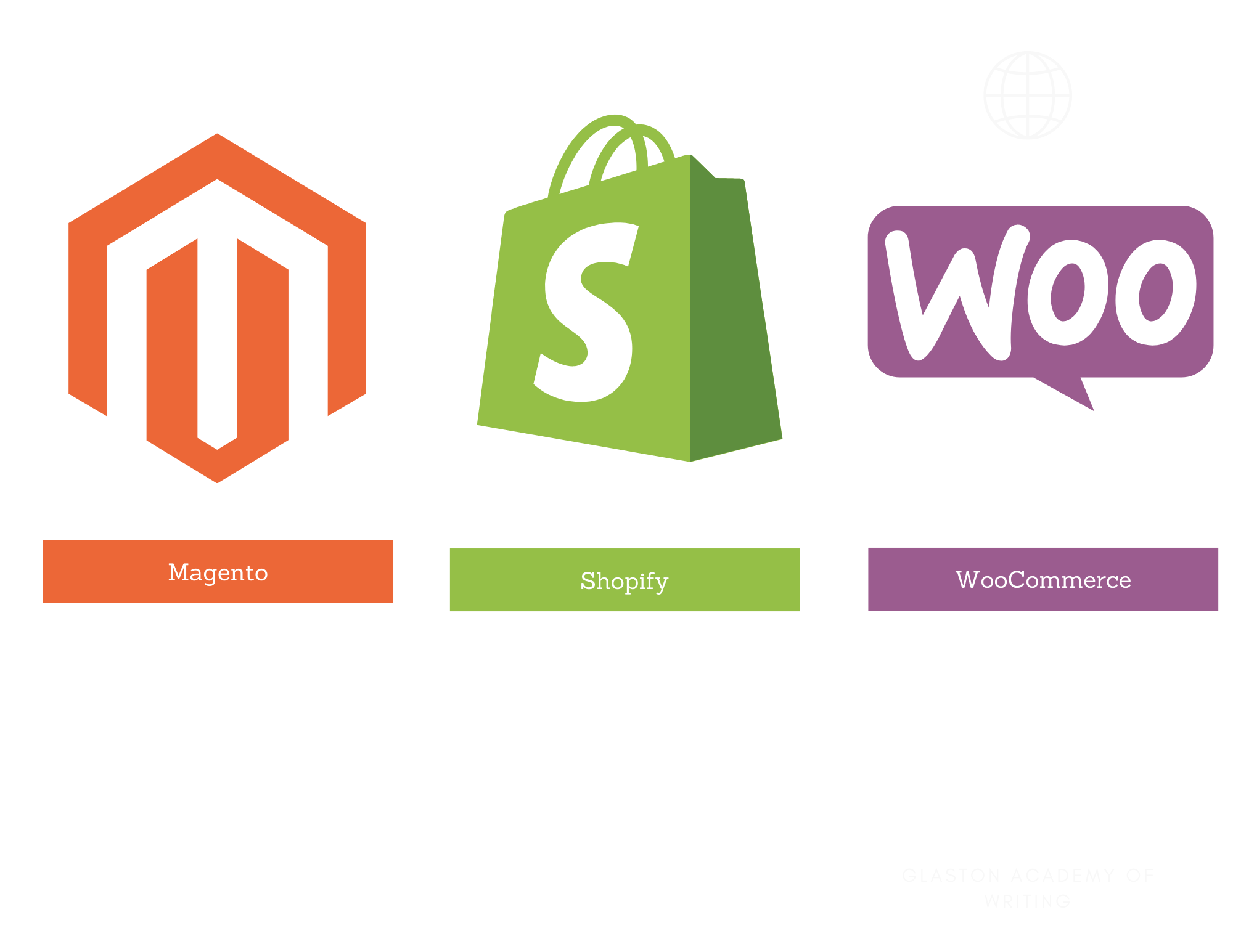
It is essential to know the primary difference between these three platforms:
Magento
Magento is an enterprise-focussed eCommerce platform with incredible functionality. It provides customization capability by adding a lot of flexibility. Leading eCommerce brands with quality project budgets prefer Magento because of the ease of setting up the B2B and IR marketplace.
Magento is the biggest eCommerce platform in terms of features and functionalities offered. For the same reason, setting up an eCommerce shop in Magento requires a bigger budget and web development expertise. You may need a maintenance team for such a complex system which is not ideal for SMBs.
Shopify
It is the most popular SaaS-based eCommerce platform because of the ease of setting up the business. Shopify is the most preferred eCommerce platform because SMB owners who have little technical exposure can easily manage the online shops. It doesn’t require a domain, SSL certificate, and hosting. Shopify counts everything in the subscription fees from shop owners.
Drawback:
– Shopify takes a 2 percent commission on each transaction made through 3rd party payment gateway that brings down the profit margin.
– Scalability is limited
– Monthly subscription charges – Basic Shopify $29/month, Shopify $79/month, Advanced Shopify $299/month
WooCommerce
Unlike the other two platforms mentioned above, WooCommerce is not an eCommerce platform but only an eCommerce plugin for WordPress. It is already the most popular CMS and provides extensive scalability as free and paid plugins for easy site enhancement.
WooCommerce has managed to gain a global market. Also, the features provided by WooCommerce are professional, quality-controlled as well as easy to use. Since WooCommerce is a plugin, there’s an option to customize the functionalities.
Step 3: UI/UX
There are thousands of predefined themes available in the market for all the three platforms mentioned above on Themeforest. You can choose from the themes, or you can also create your design from scratch.
The themes available are in two formats:
– Image format
– HTML
You will notice that the themes which have the HTML done cost between USD 40-60. Whereas the image format themes cost $15. Understandably, if you buy only an image, you need to hire a front-end developer (HTML) to convert the PSD image to HTML format. Then it will be made dynamic using the chosen platform.
PLEASE NOTE that if you are using a purchased theme, request the developer to remove redundant codes. Usually, there are a lot of features and functionalities in the predefined-theme which you’d never need. It is advisable to remove those unused sections without affecting the code logic.
There will be two advantages in that:
– Optimized site loading time
– Better SEO score
Once the project enters SDLC, it is advisable to research the general roadblocks by studying the themes and the features. Be in constant touch with the developers and request at at-least two meetings in a week. Ask them to give a demo. If they say that the code is not up, ask them to share the screen and show the progress in their local machines.
Conclusion
While you are on this line, you have crossed level 1 of your elementary research on the leading eCommerce platforms. It is time for you to drill deeper, visit the websites of all the 3-service providers and inspect the services and features they are offering. In case you need any consultancy and expert advice, don’t forget to drop us a line.









